- Reviews / Why join our community?
- For companies
- Frequently asked questions

UX Research
What is ux research.
UX (user experience) research is the systematic study of target users and their requirements, to add realistic contexts and insights to design processes. UX researchers adopt various methods to uncover problems and design opportunities. Doing so, they reveal valuable information which can be fed into the design process.
See why UX research is a critical part of the UX design process.
- Transcript loading…
UX Research is about Finding Insights to Guide Successful Designs
When you do UX research, you’ll be better able to give users the best solutions—because you can discover exactly what they need. You can apply UX research at any stage of the design process. UX researchers often begin with qualitative measures, to determine users’ motivations and needs . Later, they might use quantitative measures to test their results . To do UX research well, you must take a structured approach when you gather data from your users. It’s vital to use methods that 1) are right for the purpose of your research and 2) will give you the clearest information. Then, you can interpret your findings so you can build valuable insights into your design .
“I get very uncomfortable when someone makes a design decision without customer contact.” – Dan Ritzenthaler, Senior Product Designer at HubSpot
We can divide UX research into two subsets:
Qualitative research – Using methods such as interviews and ethnographic field studies, you work to get an in-depth understanding of why users do what they do (e.g., why they missed a call to action, why they feel how they do about a website). For example, you can do user interviews with a small number of users and ask open-ended questions to get personal insights into their exercise habits. Another aspect of qualitative research is usability testing , to monitor (e.g.) users’ stress responses. You should do qualitative research carefully. As it involves collecting non-numerical data (e.g., opinions, motivations), there’s a risk that your personal opinions will influence findings.
Quantitative research – Using more-structured methods (e.g., surveys, analytics), you gather measurable data about what users do and test assumptions you drew from qualitative research. For example, you can give users an online survey to answer questions about their exercise habits (e.g., “How many hours do you work out per week?”). With this data, you can discover patterns among a large user group. If you have a large enough sample of representative test users, you’ll have a more statistically reliable way of assessing the population of target users. Whatever the method, with careful research design you can gather objective data that’s unbiased by your presence, personality or assumptions. However, quantitative data alone can’t reveal deeper human insights.
We can additionally divide UX research into two approaches:
Attitudinal – you listen to what users say—e.g., in interviews.
Behavioral – you see what users do through observational studies.
When you use a mix of both quantitative and qualitative research as well as a mix of attitudinal and behavioral approaches, you can usually get the clearest view of a design problem.
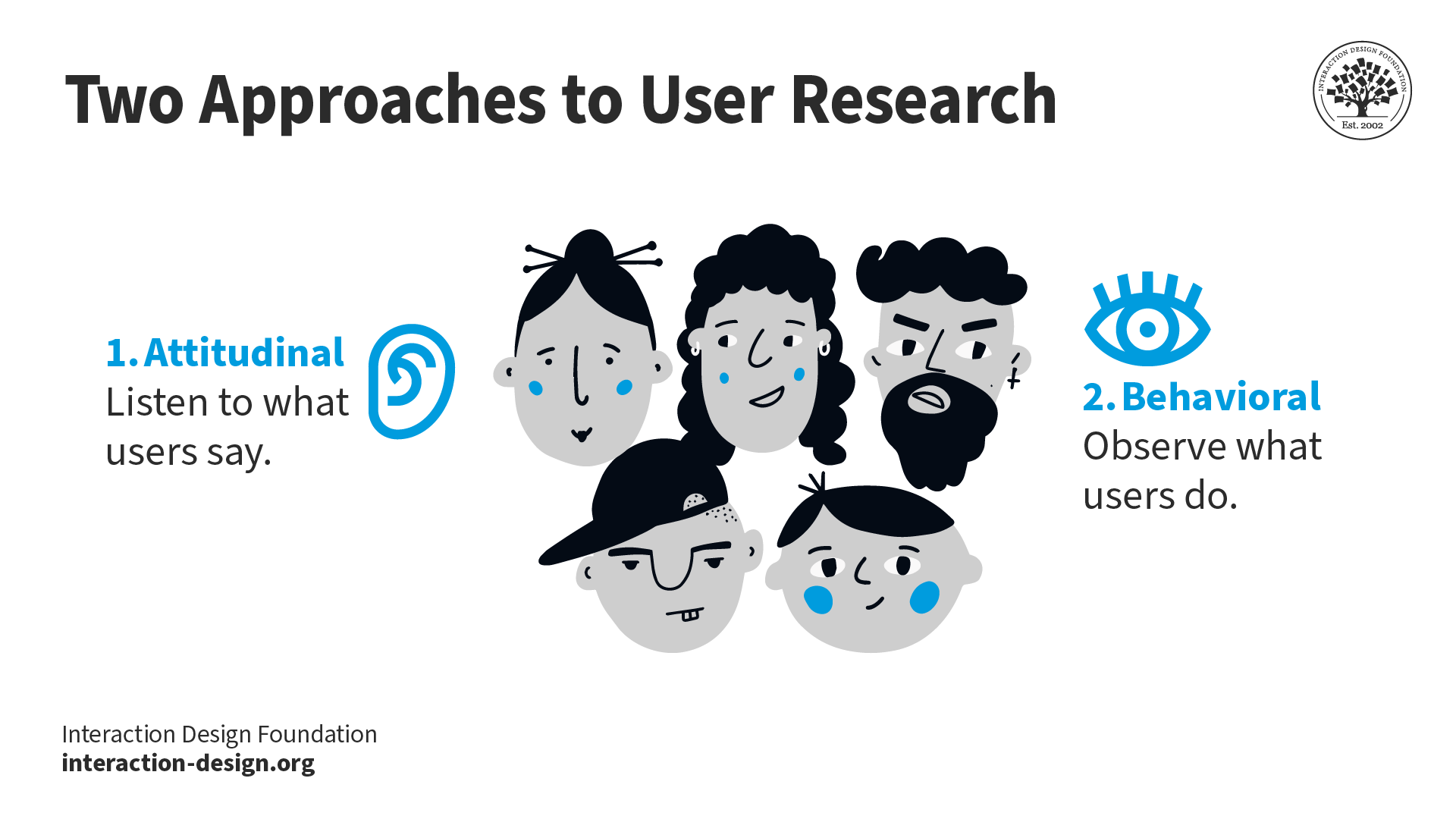
© Interaction Design Foundation, CC BY-SA 4.0
Use UX Research Methods throughout Development
The Nielsen Norman Group—an industry-leading UX consulting organization—identifies appropriate UX research methods which you can use during a project’s four stages . Key methods are:
Discover – Determine what is relevant for users.
Contextual inquiries – Interview suitable users in their own environment to see how they perform the task/s in question.
Diary studies – Have users record their daily interactions with a design or log their performance of activities.
Explore – Examine how to address all users’ needs.
Card sorting – Write words and phrases on cards; then let participants organize them in the most meaningful way and label categories to ensure that your design is structured in a logical way.
Customer journey maps – Create user journeys to expose potential pitfalls and crucial moments.
Test – Evaluate your designs.
Usability testing – Ensure your design is easy to use.
Accessibility evaluations – Test your design to ensure it’s accessible to everyone.
Listen – Put issues in perspective, find any new problems and notice trends.
Surveys/Questionnaires – Use these to track how users’ feel about your product.
Analytics – Collect analytics/metrics to chart (e.g.) website traffic and build reports.
- Copyright holder: Unsplash. Copyright terms and license: CCO Public Domain. Link: https://pixabay.com/en/clay-hands-sculpting-art-69...
- Copyright holder: Unsplash. Copyright terms and license: CCO Public Domain. Link: https://www.pexels.com/photo/man-in-black-shirt-an...
- Copyright holder: Indecent Proposer. Copyright terms and license: CC BY-NC 2.0 Link: https://www.flickr.com/photos/indecent_proposal/14...
- Copyright holder: Anna Langova. Copyright terms and license: CC0 1.0 Link: http://www.publicdomainpictures.net/view-image.php...
- Copyright holder: Conmongt. Copyright terms and license: CC0 Public Domain Link: https://pixabay.com/en/hourglass-time-time-lapse-clock-1623517/
Whichever UX research method you choose, you need to consider the pros and cons of the different techniques . For instance, card sorting is cheap and easy, but you may find it time-consuming when it comes to analysis. Also, it might not give you in-depth contextual meaning. Another constraint is your available resources , which will dictate when, how much and which type of UX research you can do. So, decide carefully on the most relevant method/s for your research . Moreover, involve stakeholders from your organization early on . They can reveal valuable UX insights and help keep your research in line with business goals. Remember, a design team values UX research as a way to validate its assumptions about users in the field , slash the cost of the best deliverables and keep products in high demand —ahead of competitors’.
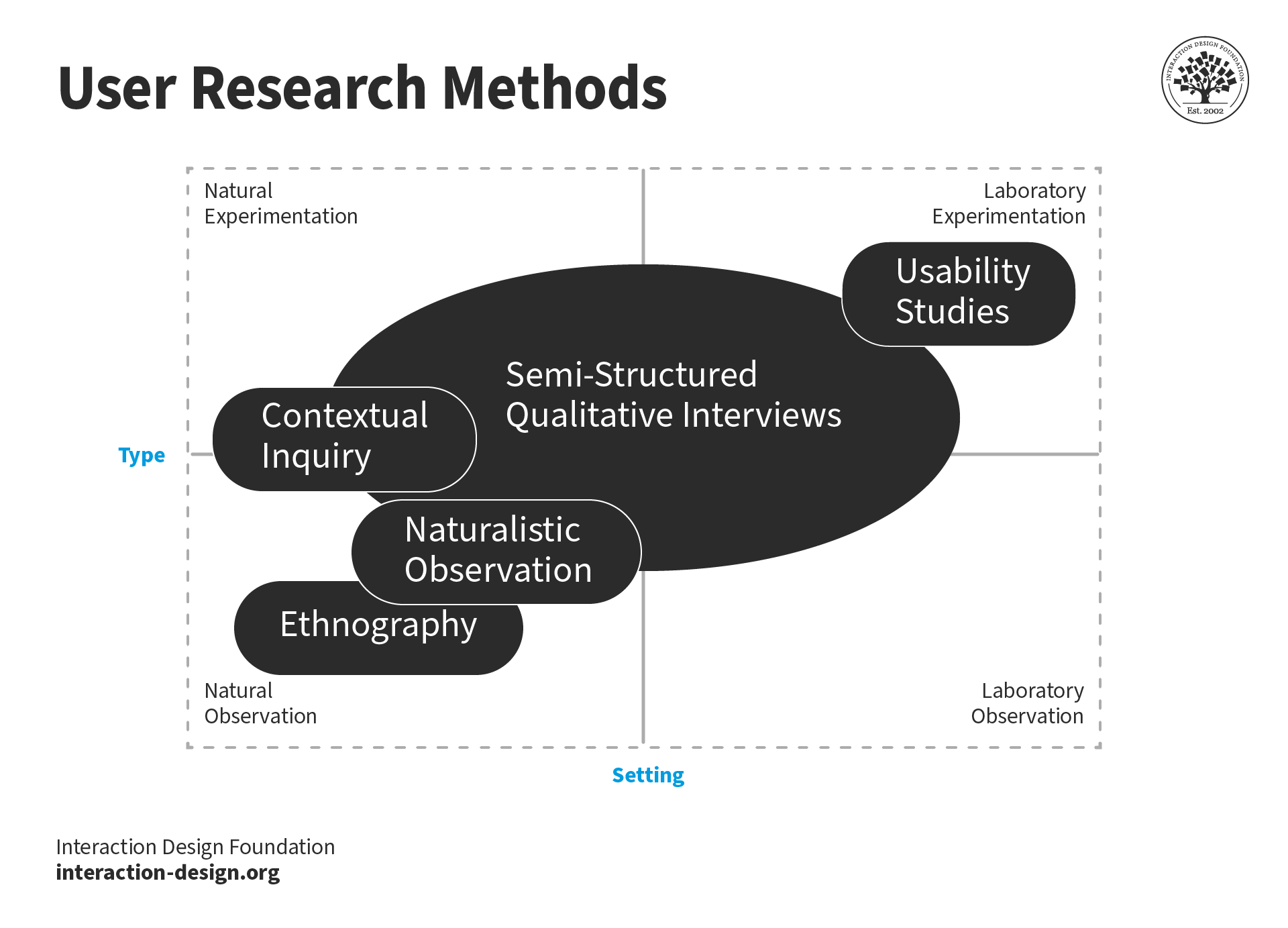
User research methods have different pros and cons,and vary from observations of users in context to controlled experiments in lab settings.
Learn More about UX Research
For a thorough grasp of UX research, take our course here: User Research – Methods and Best Practices
Read an extensive range of UX research considerations, discussed in Smashing Magazine: A Comprehensive Guide To UX Research
See the Nielsen Norman Group’s list of UX research tips: UX Research Cheat Sheet
Here’s a handy, example-rich catalog of UX research tools: 43 UX research tools for optimizing your product
Questions related to UX Research
UX research is a good career for those who enjoy working with a team and have strong communication skills. As a researcher, you play a crucial role in helping your team understand users and deliver valuable and delightful experiences. You will find a UX research career appealing if you enjoy scientific and creative pursuits.
Start exploring this career option; see the User Researcher Learning Path .
Studies suggest that companies are also willing to pay well for research roles. The average salary for a UX researcher ranges from $92,000 to $146,000 per year.
In smaller companies, user research may be one of the responsibilities of a generalist UX designer. How much can your salary vary based on your region? Find out in UI & UX Designer Salaries: How Much Can I Earn .
Research is one part of the overall UX design process. UX research helps inform the design strategy and decisions made at every step of the design process. In smaller teams, a generalist designer may end up conducting research.
A UX researcher aims to understand users and their needs. A UX designer seeks to create a product that meets those needs.
A UX researcher gathers information. A UX designer uses that information to create a user-friendly and visually appealing product.
Learn more about the relationship between UX research and UX design in the course:
User Experience: The Beginner’s Guide
If we consider a very broad definition of UX, then all user research is UX research.
However, in practice, there is a subtle difference between user research and UX research. While both involve understanding people, user research can involve users in any kind of research question, and some questions may not be that directly connected to user experience.
For example, you might do user research relating to a customer’s experience in relation to pricing, delivery or the experience across multiple channels.
Common UX research methods are usability testing, A/B testing, surveys, card sorting, user interviews, usage analytics and ethnographic research. Each method has its pros and cons and is useful in different scenarios. Hence, you must select the appropriate research method for the research question and target audience. Learn more about these methods in 7 Great, Tried and Tested UX Research Techniques .
Get started with user research. Download the User Research template bundle .
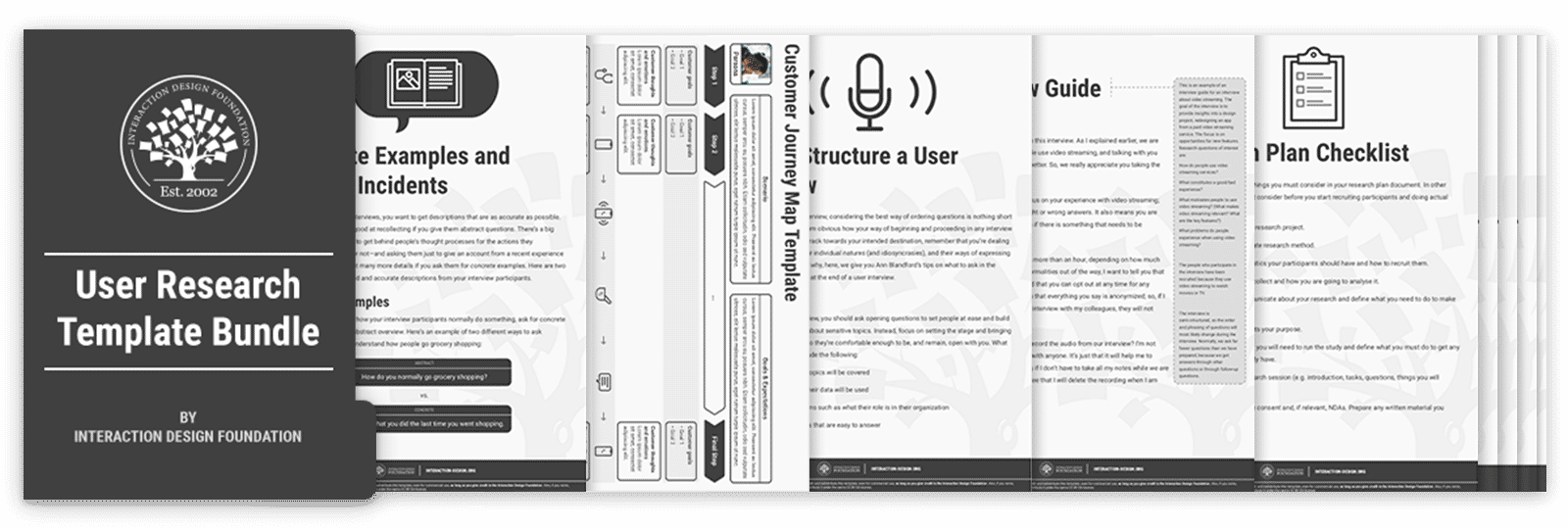
For a deep dive into usability testing—the most common research method, take the course Conducting Usability Testing .
Having a degree in a related field can give you an advantage. However, you don’t need a specific degree to become a UX researcher. A combination of relevant education, practical experience, and continuous learning can help you pursue a career in UX research. Many UX researchers come from diverse educational backgrounds, including psychology, statistics, human-computer interaction, information systems, design and anthropology.
Some employers may prefer candidates with at least a bachelor’s degree. However, it does not have to be in a UX-related field. There are relatively fewer degrees that focus solely on user research.
Data-Driven Design: Quantitative Research for UX
User Research – Methods and Best Practices
Every research project will vary. However, there are some common steps in conducting research, no matter which method or tool you decide to use:
Define the research question
Select the appropriate research method
Recruit participants
Conduct the research
Analyze the data
Present the findings
You can choose from various UX research tools . Your choice depends on your research question, how you're researching, the size of your organization, and your project. For instance:
Survey tools such as Typeform and Google Forms.
Card sorting tools such as Maze and UXtweak.
Heatmap tools such as HotJar and CrazyEgg
Usability testing (through first-click testing and tree-testing) tools such as Optimal Workshop and Loop 11
Diagramming applications such as Miro and Whimsical to analyze qualitative data through affinity diagramming.
Spreadsheet tools such as Google Sheets and Microsoft Excel for quantitative data analysis
Interface design and prototyping tools like Figma, Adobe XD, Sketch and Marvel to conduct usability testing.
Presentation tools such as Keynote, Google Slides and Microsoft PowerPoint.
Many of these tools offer additional features you can leverage for multiple purposes. To understand how you can make the most of these tools, we recommend these courses:
There are relatively fewer degrees that focus solely on user research.
While there are no universal research case study formats, here’s one suggested outline:
An overview of the project: Include the problem statement, goals and objectives.
The research methods and methodology: For example, surveys, interviews, or usability testing).
Research findings
The design process: How the research findings led to design decisions.
Impact of design decisions on users and the business: Include metrics such as conversion and error rates to demonstrate the impact.
Optionally, include notes on what you learned and how you can improve the process in the future.
Learn how to showcase your portfolio to wow your future employer/client in the How to Create a UX Portfolio course.
While AI can help automate tasks and help UX researchers, it will not completely replace them. AI lacks the creativity and empathy that human designers bring to the table.
Human researchers are better at understanding the nuances of human behavior and emotions. They can also think outside the box and develop creative solutions that AI cannot. So, AI can help researchers be more efficient and effective through data analysis, smart suggestions and automation. But it cannot replace them.
Watch AI-Powered UX Design: How to Elevate Your UX Career to learn how you can work with AI.
Agile teams often struggle to incorporate user research in their workflows due to the time pressure of short sprints. However, that doesn’t mean agile teams can’t conduct research. Instead of seeing research as one big project, teams can break it into bite-sized chunks. Researchers regularly conduct research and share their findings in every sprint.
Researchers can involve engineers and other stakeholders in decision-making to give everyone the context they need to make better decisions. When engineers participate in the decision-making process, they can ensure that the design will be technically feasible. There will also be lower chances of errors when the team actually builds the feature. Here’s more on how to make research a team effort .
For more on bite-sized research, see this Master Class: Continuous Product Discovery: The What and Why
For more practical tips and methods to work in an agile environment, take our Agile Methods for UX Design course.
User research is very important in designing products people will want and use. It helps us avoid designing based on what we think instead of what users actually want.
UX research helps designers understand their users’ needs, behaviors, attitudes and how they interact with a product or service. Research helps identify usability problems, gather feedback on design concepts, and validate design decisions. This ultimately benefits businesses by improving the product, brand reputation and loyalty. A good user experience provides a competitive edge and reduces the risk of product failure.
Learn more about the importance of user research in the design process in these courses:
Design Thinking: The Ultimate Guide
Answer a Short Quiz to Earn a Gift
What is the primary purpose of UX research in design processes?
- To ensure the product is visually appealing.
- To reduce the cost of marketing the product.
- To understand user needs and enhance design decisions.
Which type of UX research do designers use to collect non-numerical data such as opinions and motivations?
- Behavioral research
- Qualitative research
- Quantitative research
Which UX research method involves users sorting terms into categories to help structure design logically?
- Card sorting
- Information architecture
- Usability testing
What is a potential drawback of using card sorting in UX research?
- It can be expensive and requires special software.
- It may not provide deep contextual insights.
- It only works for digital products.
How does UX research primarily benefit a design team in a business context?
- It focuses exclusively on the aesthetic aspects of product design.
- It reduces dependency on technology.
- It validates design assumptions and keeps products competitive.
Better luck next time!
Do you want to improve your UX / UI Design skills? Join us now
Congratulations! You did amazing
You earned your gift with a perfect score! Let us send it to you.
Check Your Inbox
We’ve emailed your gift to [email protected] .
Literature on UX Research
Here’s the entire UX literature on UX Research by the Interaction Design Foundation, collated in one place:
Learn more about UX Research
Take a deep dive into UX Research with our course User Research – Methods and Best Practices .
How do you plan to design a product or service that your users will love , if you don't know what they want in the first place? As a user experience designer, you shouldn't leave it to chance to design something outstanding; you should make the effort to understand your users and build on that knowledge from the outset. User research is the way to do this, and it can therefore be thought of as the largest part of user experience design .
In fact, user research is often the first step of a UX design process—after all, you cannot begin to design a product or service without first understanding what your users want! As you gain the skills required, and learn about the best practices in user research, you’ll get first-hand knowledge of your users and be able to design the optimal product—one that’s truly relevant for your users and, subsequently, outperforms your competitors’ .
This course will give you insights into the most essential qualitative research methods around and will teach you how to put them into practice in your design work. You’ll also have the opportunity to embark on three practical projects where you can apply what you’ve learned to carry out user research in the real world . You’ll learn details about how to plan user research projects and fit them into your own work processes in a way that maximizes the impact your research can have on your designs. On top of that, you’ll gain practice with different methods that will help you analyze the results of your research and communicate your findings to your clients and stakeholders—workshops, user journeys and personas, just to name a few!
By the end of the course, you’ll have not only a Course Certificate but also three case studies to add to your portfolio. And remember, a portfolio with engaging case studies is invaluable if you are looking to break into a career in UX design or user research!
We believe you should learn from the best, so we’ve gathered a team of experts to help teach this course alongside our own course instructors. That means you’ll meet a new instructor in each of the lessons on research methods who is an expert in their field—we hope you enjoy what they have in store for you!
All open-source articles on UX Research
7 great, tried and tested ux research techniques.

- 1.2k shares
- 3 years ago
The Ultimate Guide to Understanding UX Roles and Which One You Should Go For

Shadowing in User Research - Do You See What They See?
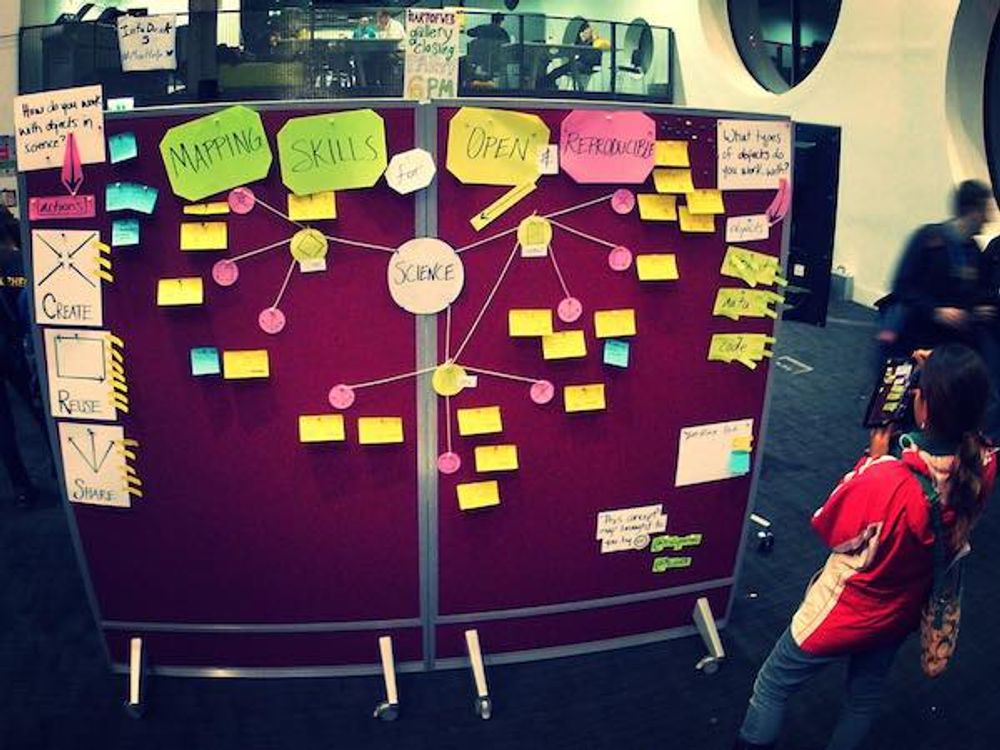
Contextual Interviews and How to Handle Them

15 Guiding Principles for UX Researchers

Ethnography

Porter’s 5 Forces Model - Design in Context, Understand the Market

- 7 years ago
Ideas for Conducting UX Research with Children

Laddering Questions Drilling Down Deep and Moving Sideways in UX Research

Action Research
4 common pitfalls in usability testing and how to avoid them to get more honest feedback.

- 2 years ago
Confirmation Bias – It’s Not What We Think We Know That Counts

User Research Methods for Mobile UX

The Top UX Design Books You Need to Read in 2024: Beginner to Expert
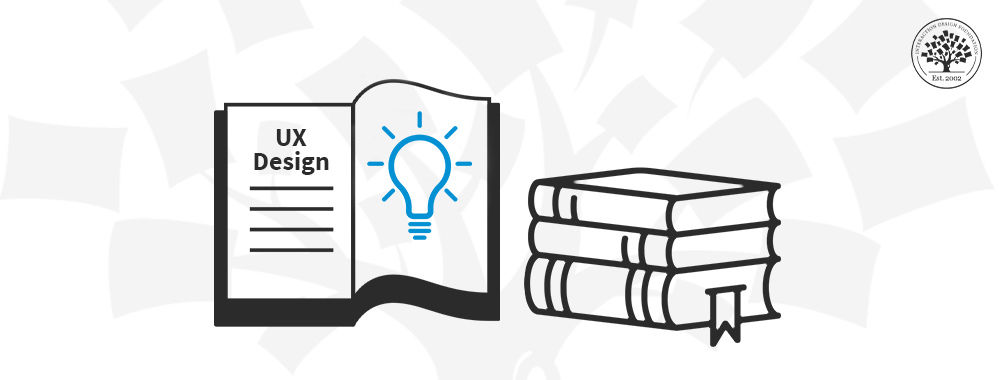
6 Tips for Better International UX Research

Collaborating with Your Team for Research
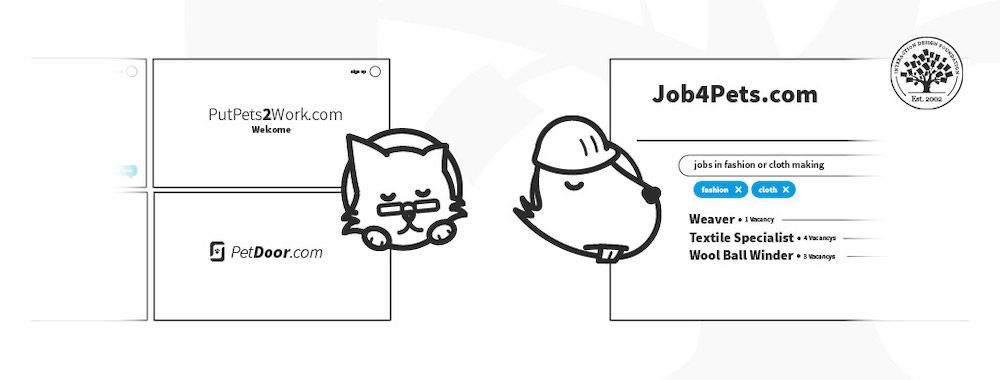
Common UX Research Interview Questions

- 4 weeks ago
Adding Quality to Your Design Research with an SSQS Checklist

- 8 years ago
How to Fit Quantitative Research into the Project Lifecycle

The Best Free UX Design Courses in 2024
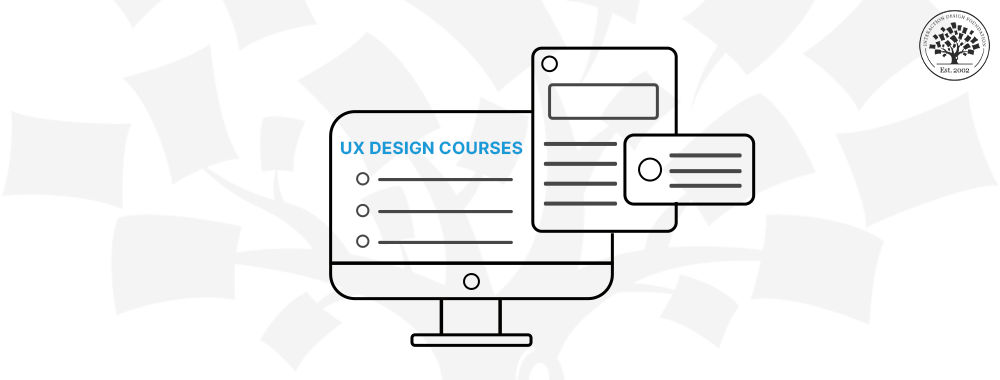
Open Access—Link to us!
We believe in Open Access and the democratization of knowledge . Unfortunately, world-class educational materials such as this page are normally hidden behind paywalls or in expensive textbooks.
If you want this to change , cite this page , link to us, or join us to help us democratize design knowledge !
Privacy Settings
Our digital services use necessary tracking technologies, including third-party cookies, for security, functionality, and to uphold user rights. Optional cookies offer enhanced features, and analytics.
Experience the full potential of our site that remembers your preferences and supports secure sign-in.
Governs the storage of data necessary for maintaining website security, user authentication, and fraud prevention mechanisms.
Enhanced Functionality
Saves your settings and preferences, like your location, for a more personalized experience.
Referral Program
We use cookies to enable our referral program, giving you and your friends discounts.
Error Reporting
We share user ID with Bugsnag and NewRelic to help us track errors and fix issues.
Optimize your experience by allowing us to monitor site usage. You’ll enjoy a smoother, more personalized journey without compromising your privacy.
Analytics Storage
Collects anonymous data on how you navigate and interact, helping us make informed improvements.
Differentiates real visitors from automated bots, ensuring accurate usage data and improving your website experience.
Lets us tailor your digital ads to match your interests, making them more relevant and useful to you.
Advertising Storage
Stores information for better-targeted advertising, enhancing your online ad experience.
Personalization Storage
Permits storing data to personalize content and ads across Google services based on user behavior, enhancing overall user experience.
Advertising Personalization
Allows for content and ad personalization across Google services based on user behavior. This consent enhances user experiences.
Enables personalizing ads based on user data and interactions, allowing for more relevant advertising experiences across Google services.
Receive more relevant advertisements by sharing your interests and behavior with our trusted advertising partners.
Enables better ad targeting and measurement on Meta platforms, making ads you see more relevant.
Allows for improved ad effectiveness and measurement through Meta’s Conversions API, ensuring privacy-compliant data sharing.
LinkedIn Insights
Tracks conversions, retargeting, and web analytics for LinkedIn ad campaigns, enhancing ad relevance and performance.
LinkedIn CAPI
Enhances LinkedIn advertising through server-side event tracking, offering more accurate measurement and personalization.
Google Ads Tag
Tracks ad performance and user engagement, helping deliver ads that are most useful to you.
Share Knowledge, Get Respect!
or copy link
Cite according to academic standards
Simply copy and paste the text below into your bibliographic reference list, onto your blog, or anywhere else. You can also just hyperlink to this page.
New to UX Design? We’re Giving You a Free ebook!

Download our free ebook The Basics of User Experience Design to learn about core concepts of UX design.
In 9 chapters, we’ll cover: conducting user interviews, design thinking, interaction design, mobile UX design, usability, UX research, and many more!
Skip navigation

World Leaders in Research-Based User Experience
UX Research Cheat Sheet

February 12, 2017 2017-02-12
- Email article
- Share on LinkedIn
- Share on Twitter
User-experience research methods are great at producing data and insights, while ongoing activities help get the right things done. Alongside R&D, ongoing UX activities can make everyone’s efforts more effective and valuable. At every stage in the design process, different UX methods can keep product-development efforts on the right track, in agreement with true user needs and not imaginary ones.
In This Article:
When to conduct user research.
One of the questions we get the most is, “When should I do user research on my project?” There are three different answers:
- Do user research at whatever stage you’re in right now . The earlier the research, the more impact the findings will have on your product, and by definition, the earliest you can do something on your current project (absent a time machine) is today.
- Do user research at all the stages . As we show below, there’s something useful to learn in every single stage of any reasonable project plan, and each research step will increase the value of your product by more than the cost of the research.
- Do most user research early in the project (when it’ll have the most impact), but conserve some budget for a smaller amount of supplementary research later in the project. This advice applies in the common case that you can’t get budget for all the research steps that would be useful.
The chart below describes UX methods and activities available in various project stages.
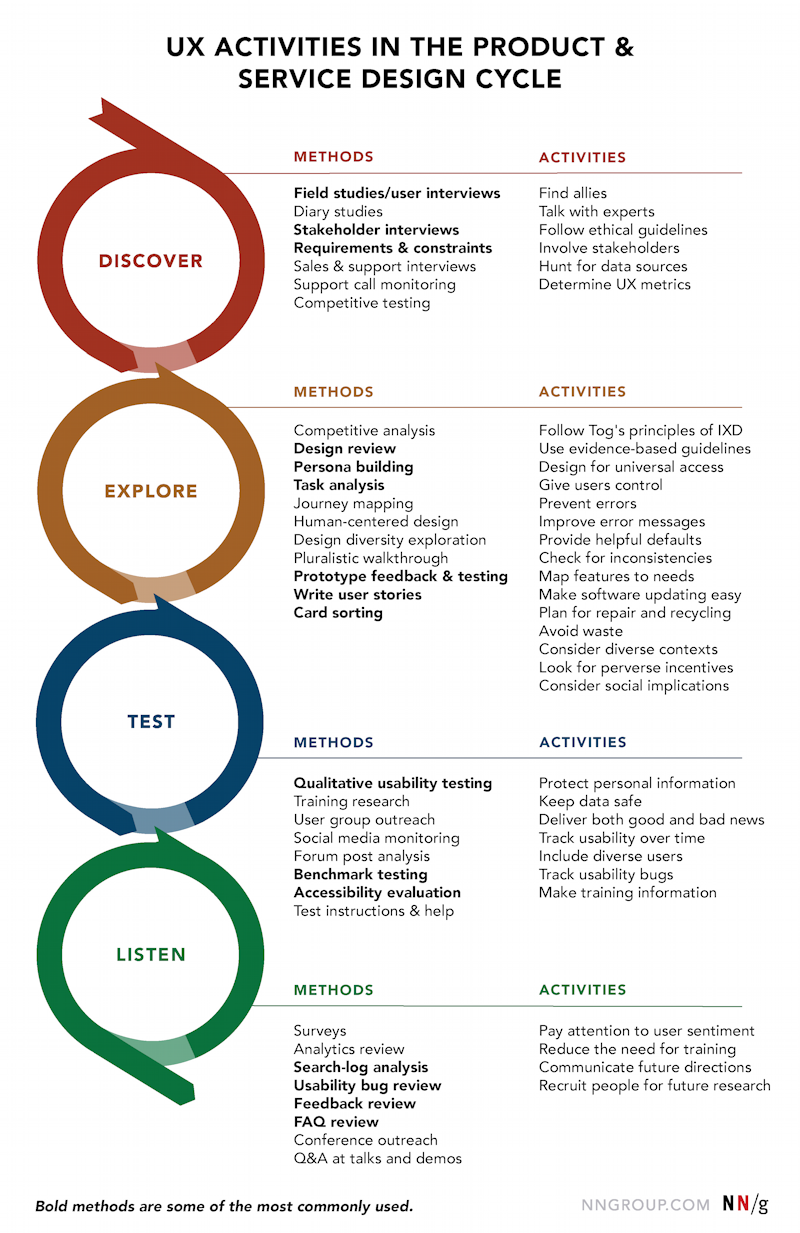
Each project is different, so the stages are not always neatly compartmentalized. The end of one cycle is the beginning of the next.
The important thing is not to execute a giant list of activities in rigid order, but to start somewhere and learn more and more as you go along.
| • Field study • Diary study • User interview • Stakeholder interview • Requirements & constraints gathering | |
| • Competitive analysis • Design review • Persona building • Task analysis • Journey mapping • Prototype feedback & testing (clickable or paper prototypes) • Write user stories • Card sorting | |
| • Qualitative usability testing (in-person or remote) • Benchmark testing • Accessibility evaluation | |
| • Survey • Analytics review • Search-log analysis • Usability-bug review • Frequently-asked-questions (FAQ) review | |
When deciding where to start or what to focus on first, use some of these top UX methods. Some methods may be more appropriate than others, depending on time constraints, system maturity, type of product or service, and the current top concerns. It’s a good idea to use different or alternating methods each product cycle because they are aimed at different goals and types of insight. The chart below shows how often UX practitioners reported engaging in these methods in our survey on UX careers.
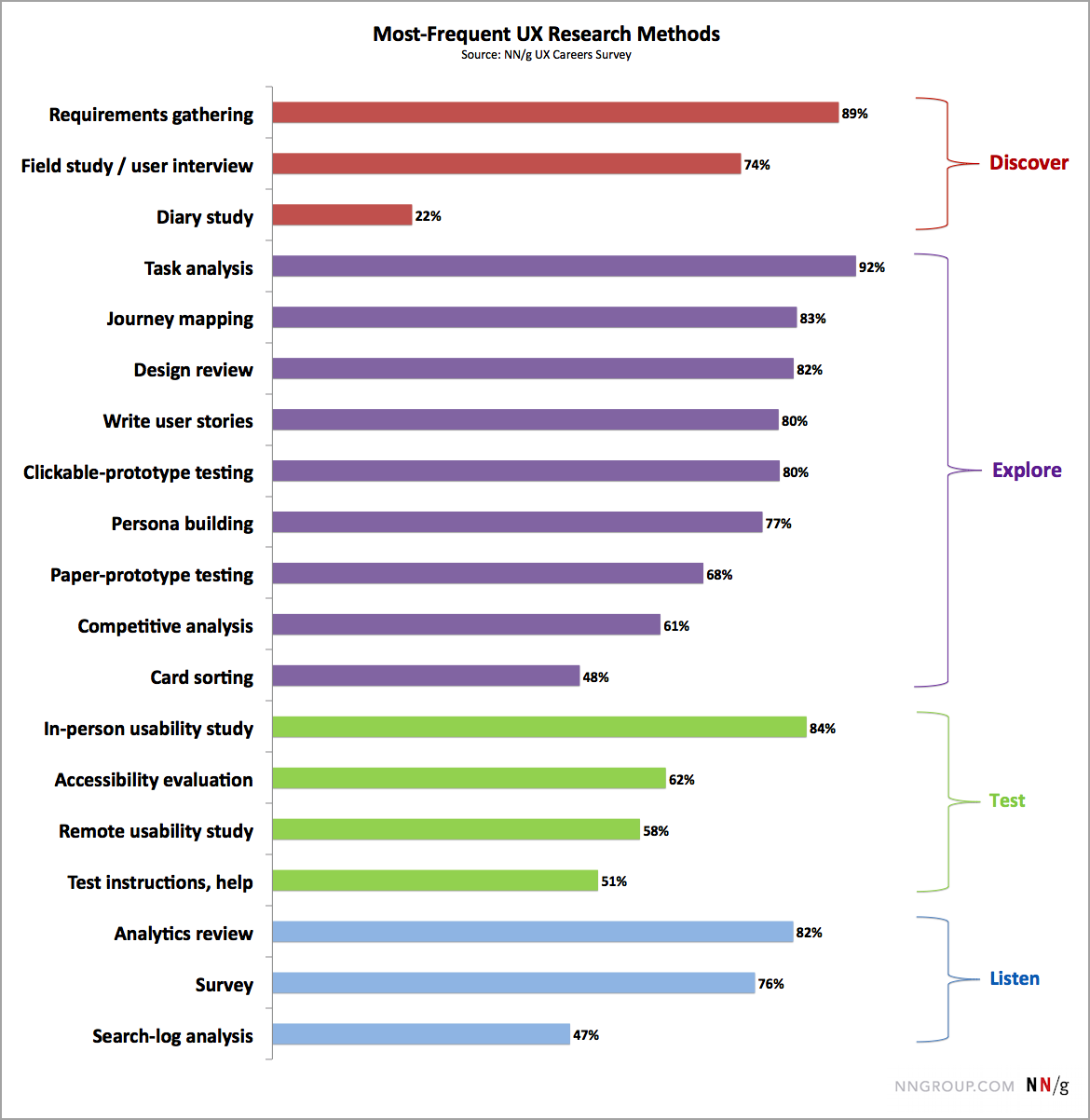
If you can do only one activity and aim to improve an existing system, do qualitative (think-aloud) usability testing , which is the most effective method to improve usability . If you are unable to test with users, analyze as much user data as you can. Data (obtained, for instance, from call logs, searches, or analytics) is not a great substitute for people, however, because data usually tells you what , but you often need to know why . So use the questions your data brings up to continue to push for usability testing.
The discovery stage is when you try to illuminate what you don’t know and better understand what people need. It’s especially important to do discovery activities before making a new product or feature, so you can find out whether it makes sense to do the project at all .
An important goal at this stage is to validate and discard assumptions, and then bring the data and insights to the team. Ideally this research should be done before effort is wasted on building the wrong things or on building things for the wrong people, but it can also be used to get back on track when you’re working with an existing product or service.
Good things to do during discovery:
- Conduct field studies and interview users : Go where the users are, watch, ask, and listen. Observe people in context interacting with the system or solving the problems you’re trying to provide solutions for.
- Run diary studies to understand your users’ information needs and behaviors.
- Interview stakeholders to gather and understand business requirements and constraints.
- Interview sales, support, and training staff. What are the most frequent problems and questions they hear from users? What are the worst problems people have? What makes people angry?
- Listen to sales and support calls. What do people ask about? What do they have problems understanding? How do the sales and support staff explain and help? What is the vocabulary mismatch between users and staff?
- Do competitive testing . Find the strengths and weaknesses in your competitors’ products. Discover what users like best.
Exploration methods are for understanding the problem space and design scope and addressing user needs appropriately.
- Compare features against competitors.
- Do design reviews.
- Use research to build user personas and write user stories.
- Analyze user tasks to find ways to save people time and effort.
- Show stakeholders the user journey and where the risky areas are for losing customers along the way. Decide together what an ideal user journey would look like.
- Explore design possibilities by imagining many different approaches, brainstorming, and testing the best ideas in order to identify best-of-breed design components to retain.
- Obtain feedback on early-stage task flows by walking through designs with stakeholders and subject-matter experts. Ask for written reactions and questions (silent brainstorming), to avoid groupthink and to enable people who might not speak up in a group to tell you what concerns them.
- Iterate designs by testing paper prototypes with target users, and then test interactive prototypes by watching people use them. Don’t gather opinions. Instead, note how well designs work to help people complete tasks and avoid errors. Let people show you where the problem areas are, then redesign and test again.
- Use card sorting to find out how people group your information, to help inform your navigation and information organization scheme.
Testing and validation methods are for checking designs during development and beyond, to make sure systems work well for the people who use them.
- Do qualitative usability testing . Test early and often with a diverse range of people, alone and in groups. Conduct an accessibility evaluation to ensure universal access.
- Ask people to self-report their interactions and any interesting incidents while using the system over time, for example with diary studies .
- Audit training classes and note the topics, questions people ask, and answers given. Test instructions and help systems.
- Talk with user groups.
- Staff social-media accounts and talk with users online. Monitor social media for kudos and complaints.
- Analyze user-forum posts. User forums are sources for important questions to address and answers that solve problems. Bring that learning back to the design and development team.
- Do benchmark testing: If you’re planning a major redesign or measuring improvement, test to determine time on task, task completion, and error rates of your current system, so you can gauge progress over time.
Listen throughout the research and design cycle to help understand existing problems and to look for new issues. Analyze gathered data and monitor incoming information for patterns and trends.
- Survey customers and prospective users.
- Monitor analytics and metrics to discover trends and anomalies and to gauge your progress.
- Analyze search queries: What do people look for and what do they call it? Search logs are often overlooked, but they contain important information.
- Make it easy to send in comments, bug reports, and questions. Analyze incoming feedback channels periodically for top usability issues and trouble areas. Look for clues about what people can’t find, their misunderstandings, and any unintended effects.
- Collect frequently asked questions and try to solve the problems they represent.
- Run booths at conferences that your customers and users attend so that they can volunteer information and talk with you directly.
- Give talks and demos: capture questions and concerns.
Ongoing and strategic activities can help you get ahead of problems and make systemic improvements.
- Find allies . It takes a coordinated effort to achieve design improvement. You’ll need collaborators and champions.
- Talk with experts . Learn from others’ successes and mistakes. Get advice from people with more experience.
- Follow ethical guidelines . The UXPA Code of Professional Conduct is a good starting point.
- Involve stakeholders . Don’t just ask for opinions; get people onboard and contributing, even in small ways. Share your findings, invite them to observe and take notes during research sessions.
- Hunt for data sources . Be a UX detective. Who has the information you need, and how can you gather it?
- Determine UX metrics. Find ways to measure how well the system is working for its users.
- Follow Tog's principles of interaction design .
- Use evidence-based design guidelines , especially when you can’t conduct your own research. Usability heuristics are high-level principles to follow.
- Design for universal access . Accessibility can’t be tacked onto the end or tested in during QA. Access is becoming a legal imperative, and expert help is available. Accessibility improvements make systems easier for everyone.
- Give users control . Provide the controls people need. Choice but not infinite choice.
- Prevent errors . Whenever an error occurs, consider how it might be eliminated through design change. What may appear to be user errors are often system-design faults. Prevent errors by understanding how they occur and design to lessen their impact.
- Improve error messages . For remaining errors, don’t just report system state. Say what happened from a user standpoint and explain what to do in terms that are easy for users to understand.
- Provide helpful defaults . Be prescriptive with the default settings, because many people expect you to make the hard choices for them. Allow users to change the ones they might need or want to change.
- Check for inconsistencies . Work-alike is important for learnability. People tend to interpret differences as meaningful, so make use of that in your design intentionally rather than introducing arbitrary differences. Adhere to the principle of least astonishment . Meet expectations instead.
- Map features to needs . User research can be tied to features to show where requirements come from. Such a mapping can help preserve design rationale for the next round or the next team.
- When designing software, ensure that installation and updating is easy . Make installation quick and unobtrusive. Allow people to control updating if they want to.
- When designing devices, plan for repair and recycling . Sustainability and reuse are more important than ever. Design for conservation.
- Avoid waste . Reduce and eliminate nonessential packaging and disposable parts. Avoid wasting people’s time, also. Streamline.
- Consider system usability in different cultural contexts . You are not your user. Plan how to ensure that your systems work for people in other countries . Translation is only part of the challenge.
- Look for perverse incentives . Perverse incentives lead to negative unintended consequences. How can people game the system or exploit it? How might you be able to address that? Consider how a malicious user might use the system in unintended ways or to harm others.
- Consider social implications . How will the system be used in groups of people, by groups of people, or against groups of people? Which problems could emerge from that group activity?
- Protect personal information . Personal information is like money. You can spend it unwisely only once. Many want to rob the bank. Plan how to keep personal information secure over time. Avoid collecting information that isn’t required, and destroy older data routinely.
- Keep data safe . Limit access to both research data and the data entrusted to the company by customers. Advocate for encryption of data at rest and secure transport. A data breach is a terrible user experience.
- Deliver both good and bad news . It’s human nature to be reluctant to tell people what they don’t want to hear, but it’s essential that UX raise the tough issues. The future of the product, or even the company, may depend on decisionmakers knowing what you know or suspect.
- Track usability over time . Use indicators such as number and types of support issues, error rates and task completion in usability testing, and customer satisfaction ratings, to show the effectiveness of design improvements.
- Include diverse users . People can be very different culturally and physically. They also have a range of abilities and language skills. Personas are not enough to prevent serious problems, so be sure your testing includes as wide a variety of people as you can.
- Track usability bugs . If usability bugs don’t have a place in the bug database, start your own database to track important issues.
- Pay attention to user sentiment . Social media is a great place for monitoring user problems, successes, frustrations, and word-of-mouth advertising. When competitors emerge, social media posts may be the first indication.
- Reduce the need for training . Training is often a workaround for difficult user interfaces, and it’s expensive. Use training and help topics to look for areas ripe for design changes.
- Communicate future directions . Customers and users depend on what they are able to do and what they know how to do with the products and services they use. Change can be good, even when disruptive, but surprise changes are often poorly received because they can break things that people are already doing. Whenever possible, ask, tell, test with, and listen to the customers and users you have. Consult with them rather than just announcing changes. Discuss major changes early, so what you hear can help you do a better job, and what they hear can help them prepare for the changes needed.
- Recruit people for future research and testing . Actively encourage people to join your pool of volunteer testers. Offer incentives for participation and make signing up easy to do via your website, your newsletter, and other points of contact.
Use this cheat-sheet to choose appropriate UX methods and activities for your projects and to get the most out of those efforts. It’s not necessary to do everything on every project, but it’s often helpful to use a mix of methods and tend to some ongoing needs during each iteration.
Free Downloads
Related courses, discovery: building the right thing.
Conduct successful discovery phases to ensure you build the best solution
User Research Methods: From Strategy to Requirements to Design
Pick the best UX research method for each stage in the design process
Personas: Turn User Data Into User-Centered Design
Successfully turn user data into user interfaces. Learn how to create, maintain and utilize personas throughout the UX design process.
Related Topics
- Research Methods Research Methods
- Design Process
Learn More:
Please accept marketing cookies to view the embedded video. https://www.youtube.com/watch?v=7_sFVYfatXY

Always Pilot Test User Research Studies
Kim Salazar · 3 min

Level Up Your Focus Groups
Therese Fessenden · 5 min

Inductively Analyzing Qualitative Data
Tanner Kohler · 3 min
Related Articles:
Project Management for User Research: The Plan
Susan Farrell · 7 min
Open-Ended vs. Closed Questions in User Research
Maria Rosala · 5 min
Formative vs. Summative Evaluations
Alita Joyce · 5 min
UX Research Methods: Glossary
Raluca Budiu · 12 min
What a UX Career Looks Like Today
Rachel Krause and Maria Rosala · 5 min
Pilot Testing: Getting It Right (Before) the First Time
Amy Schade · 5 min
Complete Beginner’s Guide to UX Research
In an industry devoted to the people who use our products, services, and applications, research is paramount. We ask questions. We take notes. We learn everything we can about the target audience, and then iteratively test our work throughout the design process.
UX research—or as it’s sometimes called, design research—serves many purposes throughout the design process. It helps us identify and prove or disprove our assumptions, find commonalities across our target audience members, and recognize their needs, goals, and mental models. Overall, research informs our work, improves our understanding, and make our work better.
In this Complete Beginner’s Guide, we’ll look at the many elements of design research, from interviews and observations, to usability testing and A/B testing. Readers will get a head start on how to use these design research techniques in their work, and improve experiences for all users.
Table of Contents
What is ux research, common methodologies, daily tasks and deliverables, people to follow.
- Tools of the Trade
Associations and Conferences
- UX Research Books
UX research encompasses a variety of investigative methods used to add context and insight to the design process. Unlike other sub-fields of UX, research did not develop out of some other field or fields. It merely translated from other forms of research. In other words, UX practitioners have borrowed many techniques from academics, scientists, market researchers, and others. However, there are still types of research that are fairly unique to the UX world.
The main goal of design research is to inform the design process from the perspective of the end user. It is research that prevents us from designing for one user: ourselves. It’s fairly well accepted that the purposes of UX and user-centered design are to design with the end-user in mind; and it’s research that tells us who that person is, in what context they’ll use this product or service, and what they need from us.
UX research has two parts: gathering data, and synthesizing that data in order to improve usability. At the start of the project, design research is focused on learning about project requirements from stakeholders, and learning about the needs and goals of the end users. Researchers will conduct interviews, collect surveys, observe prospects or current users, and review existing literature, data, or analytics. Then, iteratively throughout the design process, the research focus shifts to usability and sentiment. Researchers may conduct usability tests or A/B tests, interview users about the process, and generally test assumptions that will improve the designs.

One example of a user research process, diagrammed. Young, Indi. 2008. Mental Models: Aligning Design Strategy with Human Behavior. New York: Rosenfeld Media.
We can also divide UX research methods into two camps: quantitative and qualitative.
- Quantitative research is any research that can be measured numerically. It answers questions such as “ how many people clicked here” or “ what percentage of users are able to find the call to action?” It’s valuable in understanding statistical likelihoods and what is happening on a site or in an app.
- Qualitative research is sometimes called “soft” research. It answers questions like “why didn’t people see the call to action” and “what else did people notice on the page?” and often takes the form of interviews or conversations. Qualitative research helps us understand why people do the things they do
Though researchers may specialize in specific types of interviews or tests, most are capable of conducting a wide variety of techniques. All user researchers collect valuable information that helps us design in an informed, contextual, user-centered manner.
The various types of UX research range from in-person interviews to unmoderated A/B tests (and everything in between), though they are consistent in that they all stem from the same key methodologies: observation, understanding, and analysis.
Observation
The first step to conducting research is learning to observe the world around us. Much like beginning photographers, beginning researchers need to learn how to see. They need to notice nervous tics that may signal that their interviewees are stressed or uncertain, and pick up on seemingly minor references that may reflect long-held beliefs or thoughts that should be further probed.
Observation may seem like a simple skill, but it can be clouded by unconscious biases—which everyone has. Design researchers train themselves to observe and take notes so that they can later find patterns across seemingly diverse groups of people.
Understanding
Much like observation, understanding is something we do all the time in our daily lives. We strive to understand our coworkers, our families, and our friends, often trying to grasp a point of contention or an unfamiliar concept. But for UX researchers, understanding has less to do with disagreements and more to do with mental models .
A mental model is the image that someone has in their mind when they think of a particular phrase or situation. For example, if someone owns an SUV, their mental model of “car” will likely differ from the mental model a smart car owner. The mental model informs the decisions we make; in the case of the car owners, when asked “how long does it take to drive to Winnipeg,” their answers will vary based on the gas mileage their vehicles get, among other things.
Design researchers need to understand the mental models of the people they interview or test, for two reasons. First, we all speak in shorthand at times. Researchers must recognize that shorthand based on the mental model of the speaker. Second, if the researcher can accurately identify the user’s mental model, he or she can share this information with the design team, and design to accommodate the model.
Research on its own can be valuable, but in order to use the insights to inform design, it needs to be analyzed and ultimately presented to a larger team. Analysis is the process by which the researcher identifies patterns in the research, proposes possible rationale or solutions, and makes recommendations.
Some analysis techniques include creating personas or scenarios, describing mental models, or providing charts and graphs that represent statistics and user behaviors. Although the techniques described here are focused predominantly on conducting research, it’s important to remember that research is only valuable if it is shared . It does no one any good when it’s locked away in a cabinet, or forgotten in the excitement of design.
Every UX project is different, and the tasks that one researcher takes on will differ from those appropriate in another setting. Some of the most popular forms of research are interviews, surveys and questionnaires, card sorts, usability tests, tree tests, and A/B tests .
One-on-one interviews are a tried and true method of communication between a researcher and a user or stakeholder. There are three main types of interviews, each of which is used in a different context and with different goals.
Directed interviews are the most common sort. These are typical question-and-answer interviews, where a researcher asks specific questions. This can be useful when conducting interviews with a large number of users, or when looking to compare and contrast answers from various users.
Non-directed interviews are the best way to learn about touchier subjects, where users or stakeholders may be put off by direct questions. With a non-directed interview, the interviewer sets up some rough guidelines and opens a conversation with the interviewee. The interviewer will mostly listen during this “conversation,” speaking only to prompt the user or stakeholder to provide additional detail or explain concepts.
Ethnographic interviews involve observing what people do as they go about their days in their “natural habitats.” In this sort of interview, the user shows the interviewee how they accomplish certain tasks, essentially immersing the interviewer in their work or home culture. This can help researchers understand the gaps between what people actually do, and what they say they do. It can also shed light on things that users do when they are feeling most comfortable.
Surveys and Questionnaires
Questionnaires and surveys are an easy way to gather a large amount of information about a group, while spending minimal time. These are a great research choice for projects that have a large and diverse group of users, or a group that is concerned with anonymity. A researcher can create a survey using tools like Wufoo or Google Docs , email it out, and receive hundreds of responses in just minutes.
There are downsides to surveys and questionnaires though. The researcher can’t interact directly with the respondents, and therefore can’t help with interpreting questions or framing them if the wording isn’t quite perfect; and researchers typically have a limited ability for follow up. Surveys see a far higher response rate when they do not require a login or contact information, and this anonymity makes it impossible to ask for clarification or further details.
Card sorts are sometimes done as part of either an interview or a usability test. In a card sort, a user is provided with a set of terms, and asked to categorize them. In a closed card sort, the user is also given the category names; in an open card sort the user creates whatever categories he or she feels are most appropriate.
The goal of a card sort is to explore relationships between content, and better understand the hierarchies that a user perceives. Many content strategists and information architects rely on card sorts to test out hierarchy theories, or kickstart work on a site map.
Usability Tests
Usability testing involves asking potential or current users of a product or service to complete a set of tasks and then observing their behavior to determine the usability of the product or service. This can be done using a live version of a site or app, a prototype or work-in-progress, or even using clickable wireframes or paper and pencil.
While there are many variations and styles of usability tests , there are three that are commonly used: moderated, unmoderated, and guerrilla.
Moderated usability tests are the most traditional type of test. They can happen in person, or via screenshare and video. Whole usability labs are set up, complete with one-way mirrors for stakeholders to observe, for the purpose of conducting moderated usability tests. In a moderated test an unbiased facilitator talks with the user, reading aloud the tasks and prompting the user to think aloud as he or she accomplishes the tasks. The facilitator’s role is to act as a conduit between stakeholders and the user, phrasing questions to evaluate the effectiveness of a design and testing assumptions while helping the user feel comfortable with the process.
Unmoderated usability tests , sometimes also known as asynchronous research, is conducted online, at the user’s convenience. The tasks and instructions are delivered via video or recorded audio, and the user clicks a button to begin the test and record his or her screen and audio. Just like in the moderated test, users are encouraged to speak their thoughts aloud, though there is no facilitator to ask follow up questions. Unmoderated tests are available through numerous online sites and can be significantly cheaper than moderated tests.
Guerrilla testing is a modern, lightweight take on traditional tests. Instead of renting a lab, guerrilla research is typically done out in the community; users are found at coffee shops or subway stations and asked to complete basic tasks with a website or service, in exchange for a few dollars, a coffee, or just out of the goodness of their hearts. While guerrilla testing is a great option , particularly on a budget, it is best used only for products or services with a large user base. More niche products will struggle to find reliable information from the random selection acquired in guerrilla testing.
Just as card sorts are a great way to gather information before a website’s architecture has been created, tree tests are helpful in validating that architecture. In a tree test, users are given a task and shown the top level of a site map. Then, much like in a usability test, they are asked to talk through where they would go to accomplish the task. However, unlike in a usability test, the user doesn’t see a screen when they choose a site section. Instead, they will see the next level of the architecture. The goal is to identify whether information is categorized correctly and how appropriately the nomenclature reflects the sections of the site.
A/B testing is another way of learning what actions users take. An A/B test is typically chosen as the appropriate research form when designers are struggling to choose between two competing elements. Whether the options are two styles of content, a button vs. a link, or two approaches to a home page design, an A/B test requires randomly showing each version to an equal number of users, and then reviewing analytics on which version better accomplished a specific goal. A/B testing is particularly valuable when comparing a revised screen to an older version, or when collecting data to prove an assumption.
Many people have contributed greatly to the field of experience design research. Here are just a few that readers may choose to follow, to learn more. If you are just starting your journey into user experience / UX Design you may be a bit confused by all the terms and methodologies that our out there. https://www.ukmeds.co.uk/ is here to help with their beginner’s guide to UX!
Tools of the trade
User Research has the potential to be a sizable undertaking, sometimes to the point that budgetary and scheduling concerns scare people away. Fortunately, today we often see a more casual, habitual approach. The tools we have available are responsible for much of that shift.
Ethnio was the first moderated remote research software when it launched, and it’s still going strong. Ethnio finds users who are currently using a site or app, and (with their permission) allows interviewers to ask them questions about their experience as they go. It automates many elements of the typical in-person test, including real-time notifications, and paying participants with Amazon gift cards. Ethnio has a fourteen day free trial, and four pricing options, to accommodate businesses of every size.
Learn more about Ethnio
Optimal Workshop
Optimal Workshop has everything! The full Workshop is a bundle of four research tools, all of which are also available sold separately (and very affordably). Treejack is great for remotely testing information architecture, either to test the nomenclature or the hierarchies themselves. Optimal Sort provides online card sorting, to see how users choose to organize content. Chalkmark offers heat maps of click patterns across a site, and Reframer is a tool for taking notes and identifying themes easily. All come highly recommended.
Learn more about Optimal Workshop
SurveyMonkey
Surveys and questionnaires are great ways to gather information, but they’re most useful when hundreds of responses can be seen at once. Enter SurveyMonkey, an online survey-creation and reporting tool, which allows people to customize and brand their own surveys and then send them out via social media, embed them into websites, or integrate with mass mailings. Utilizing social media marketing for lawyers , SurveyMonkey also allows for easy analysis and reporting when the results come in. It’s available as a free Basic version, or for a monthly fee with additional features.
Learn more about SurveyMonkey
UsabilityHub
For quick design iterations, gut checks, and clear user feedback, UsabilityHub is an incredible resource for low budget teams. With a super-simple interface (yay!) and fast turn-around times, iterative testing and research is a few clicks away through UsabilityHub.
Learn more about UsabilityHub
UserTesting.com
When it’s not possible to schedule a real-time test with users, UserTesting.com is a great way to see how people use a site. Researchers can create a series of tasks, and then receive videos from participants—either pre-chosen, or randomly selected. Researchers are able to see a video of the participant using the site, and speaking aloud to explain what they’re doing. UserTesting.com offers Basic and Pro options, and prices accordingly.
Learn more about UserTesting.com
The good news is, whatever you need, UserZoom has it. Usability testing, both moderated and unmoderated, remote testing for mobile and desktop, benchmarking, card sorting, tree testing, surveys, and rankings: they’ve got it! The bad news, as can be expected with any product this robust, is that it can be overwhelming to learn, and it is expensive. Still, for organizations with the budget to handle it, UserZoom is a solid, effective choice.
Learn more about UserZoom
In a way, all usability conferences are design research conferences. While the other areas of UX tend to have conferences that cater to their factions, trends, or best practices, researchers are by nature generalists, who seek out ways to learn more about humans and usability. To that end, we recommend a little bit of everything, to keep researchers up to speed.
UI Conference
UIE (User Interface Engineering) puts on an annual conference, bringing together thought leaders and tried-and-true concepts for UX practitioners to learn as much as they can from one another. One great thing about this conference is UIE’s commitment to helping people attend, whether in person or virtually. More information available at: ui.uie.com/
World Usability Conference
At World Usability Conference, the talks cover all areas of usability, user experience, and customer experience management. People come from around the world, across all industries, to find where we have more similarities than differences. More information available at: www.worldusabilitycongress.com
Design + Research + Society
Held in Brighton, England, the DRS Conference responds to the questions, “How can design research help frame and address the societal problems that face us?”; “How can design research be a creative and active force for rethinking ideas about Design?”; and “How can design research shape our lives in more responsible, meaningful, and open ways?” By focusing on how design research impacts people in today’s society, they turn a light on the human side of our designs. More information available at: www.designresearchsociety.org/cpages/conferences
The User Experience Professionals Association is open to everyone working in UX. They provide networking and professional development opportunities for UX practitioners around the world, by way of local chapters. If you live in a city, there’s a good chance there’s a UXPA chapter to join! Local chapters often host conferences, sponsor events, and create a network for local UX professionals. More information available at: uxpa.org
UX Research books
There are many books that focus on interviews, usability testing, A/B testing, and other specific areas of design research. These are just a smattering of books that cover the big picture.
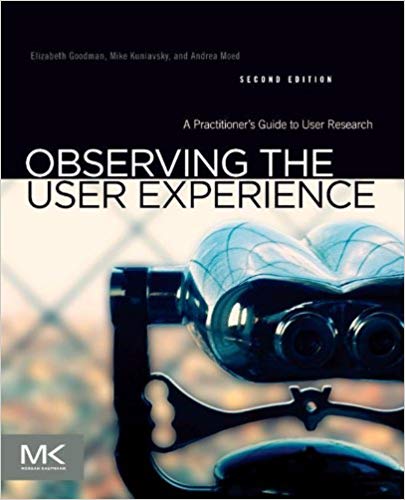
- Make Design Decisions with a Purpose
- Creating Personas
- The Ethics of UX Research
- Five Tips for Conducting Scientific Research in the UX World
- Running a Successful User Workshop
UX Booth is trusted by over 100,000 user experience professionals. Start your subscription today for free.
The Complete Guide to UX Research Methods
UX research provides invaluable insight into product users and what they need and value. Not only will research reduce the risk of a miscalculated guess, it will uncover new opportunities for innovation.

By Miklos Philips
Miklos is a UX designer, product design strategist, author, and speaker with more than 18 years of experience in the design field.
PREVIOUSLY AT
“Empathy is at the heart of design. Without the understanding of what others see, feel, and experience, design is a pointless task.” —Tim Brown, CEO of the innovation and design firm IDEO
User experience (UX) design is the process of designing products that are useful, easy to use, and a pleasure to engage. It’s about enhancing the entire experience people have while interacting with a product and making sure they find value, satisfaction, and delight. If a mountain peak represents that goal, employing various types of UX research is the path UX designers use to get to the top of the mountain.
User experience research is one of the most misunderstood yet critical steps in UX design. Sometimes treated as an afterthought or an unaffordable luxury, UX research, and user testing should inform every design decision.
Every product, service, or user interface designers create in the safety and comfort of their workplaces has to survive and prosper in the real world. Countless people will engage our creations in an unpredictable environment over which designers have no control. UX research is the key to grounding ideas in reality and improving the odds of success, but research can be a scary word. It may sound like money we don’t have, time we can’t spare, and expertise we have to seek.
In order to do UX research effectively—to get a clear picture of what users think and why they do what they do—e.g., to “walk a mile in the user’s shoes” as a favorite UX maxim goes, it is essential that user experience designers and product teams conduct user research often and regularly. Contingent upon time, resources, and budget, the deeper they can dive the better.

What Is UX Research?
There is a long, comprehensive list of UX design research methods employed by user researchers , but at its center is the user and how they think and behave —their needs and motivations. Typically, UX research does this through observation techniques, task analysis, and other feedback methodologies.
There are two main types of user research: quantitative (statistics: can be calculated and computed; focuses on numbers and mathematical calculations) and qualitative (insights: concerned with descriptions, which can be observed but cannot be computed).
Quantitative research is primarily exploratory research and is used to quantify the problem by way of generating numerical data or data that can be transformed into usable statistics. Some common data collection methods include various forms of surveys – online surveys , paper surveys , mobile surveys and kiosk surveys , longitudinal studies, website interceptors, online polls, and systematic observations.
This user research method may also include analytics, such as Google Analytics .
Google Analytics is part of a suite of interconnected tools that help interpret data on your site’s visitors including Data Studio , a powerful data-visualization tool, and Google Optimize, for running and analyzing dynamic A/B testing.
Quantitative data from analytics platforms should ideally be balanced with qualitative insights gathered from other UX testing methods , such as focus groups or usability testing. The analytical data will show patterns that may be useful for deciding what assumptions to test further.
Qualitative user research is a direct assessment of behavior based on observation. It’s about understanding people’s beliefs and practices on their terms. It can involve several different methods including contextual observation, ethnographic studies, interviews, field studies, and moderated usability tests.

Jakob Nielsen of the Nielsen Norman Group feels that in the case of UX research, it is better to emphasize insights (qualitative research) and that although quant has some advantages, qualitative research breaks down complicated information so it’s easy to understand, and overall delivers better results more cost effectively—in other words, it is much cheaper to find and fix problems during the design phase before you start to build. Often the most important information is not quantifiable, and he goes on to suggest that “quantitative studies are often too narrow to be useful and are sometimes directly misleading.”
Not everything that can be counted counts, and not everything that counts can be counted. William Bruce Cameron
Design research is not typical of traditional science with ethnography being its closest equivalent—effective usability is contextual and depends on a broad understanding of human behavior if it is going to work.
Nevertheless, the types of user research you can or should perform will depend on the type of site, system or app you are developing, your timeline, and your environment.

Top UX Research Methods and When to Use Them
Here are some examples of the types of user research performed at each phase of a project.
Card Sorting : Allows users to group and sort a site’s information into a logical structure that will typically drive navigation and the site’s information architecture. This helps ensure that the site structure matches the way users think.
Contextual Interviews : Enables the observation of users in their natural environment, giving you a better understanding of the way users work.
First Click Testing : A testing method focused on navigation, which can be performed on a functioning website, a prototype, or a wireframe.
Focus Groups : Moderated discussion with a group of users, allowing insight into user attitudes, ideas, and desires.
Heuristic Evaluation/Expert Review : A group of usability experts evaluating a website against a list of established guidelines .
Interviews : One-on-one discussions with users show how a particular user works. They enable you to get detailed information about a user’s attitudes, desires, and experiences.
Parallel Design : A design methodology that involves several designers pursuing the same effort simultaneously but independently, with the intention to combine the best aspects of each for the ultimate solution.
Personas : The creation of a representative user based on available data and user interviews. Though the personal details of the persona may be fictional, the information used to create the user type is not.
Prototyping : Allows the design team to explore ideas before implementing them by creating a mock-up of the site. A prototype can range from a paper mock-up to interactive HTML pages.
Surveys : A series of questions asked to multiple users of your website that help you learn about the people who visit your site.
System Usability Scale (SUS) : SUS is a technology-independent ten-item scale for subjective evaluation of the usability.
Task Analysis : Involves learning about user goals, including what users want to do on your website, and helps you understand the tasks that users will perform on your site.
Usability Testing : Identifies user frustrations and problems with a site through one-on-one sessions where a “real-life” user performs tasks on the site being studied.
Use Cases : Provide a description of how users use a particular feature of your website. They provide a detailed look at how users interact with the site, including the steps users take to accomplish each task.

You can do user research at all stages or whatever stage you are in currently. However, the Nielsen Norman Group advises that most of it be done during the earlier phases when it will have the biggest impact. They also suggest it’s a good idea to save some of your budget for additional research that may become necessary (or helpful) later in the project.
Here is a diagram listing recommended options that can be done as a project moves through the design stages. The process will vary, and may only include a few things on the list during each phase. The most frequently used methods are shown in bold.
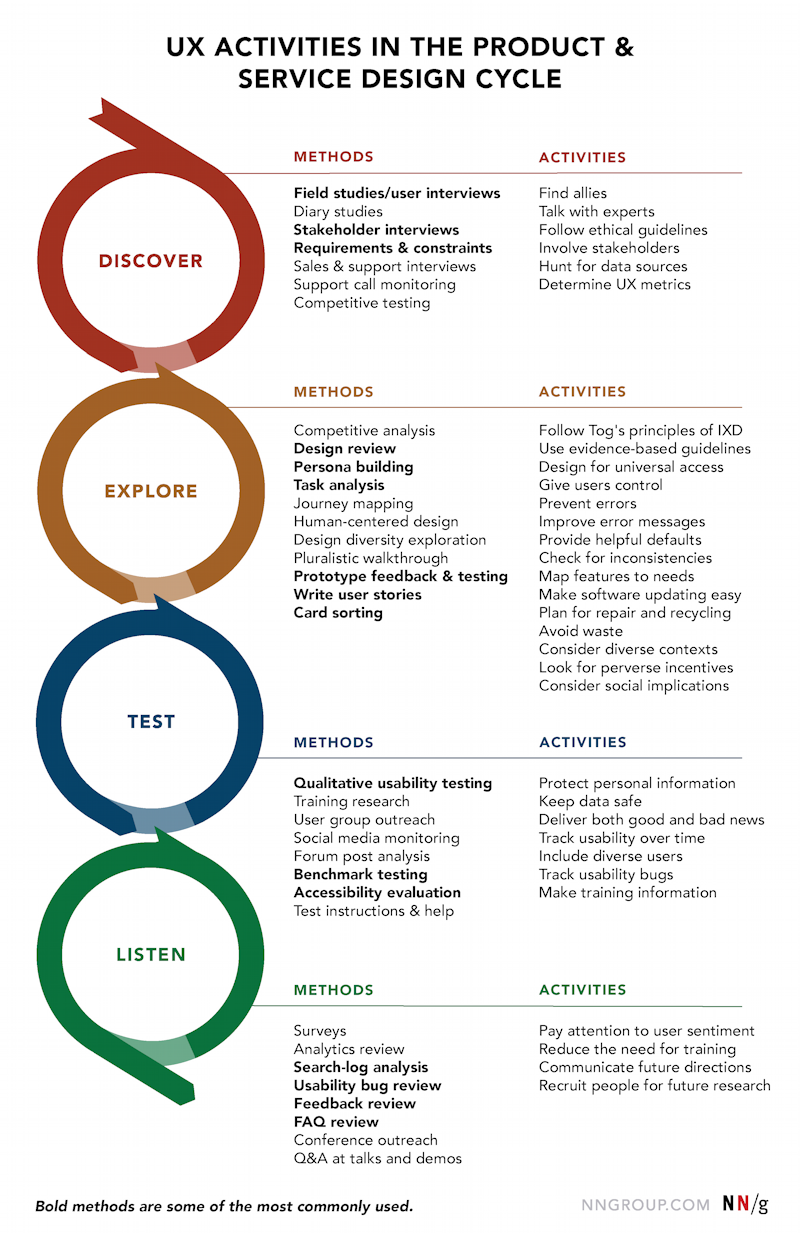
Reasons for Doing UX Research
Here are three great reasons for doing user research :
To create a product that is truly relevant to users
- If you don’t have a clear understanding of your users and their mental models, you have no way of knowing whether your design will be relevant. A design that is not relevant to its target audience will never be a success.
To create a product that is easy and pleasurable to use
- A favorite quote from Steve Jobs: “ If the user is having a problem, it’s our problem .” If your user experience is not optimal, chances are that people will move on to another product.
To have the return on investment (ROI) of user experience design validated and be able to show:
- An improvement in performance and credibility
- Increased exposure and sales—growth in customer base
- A reduced burden on resources—more efficient work processes
Aside from the reasons mentioned above, doing user research gives insight into which features to prioritize, and in general, helps develop clarity around a project.

What Results Can I Expect from UX Research?
In the words of Mike Kuniaysky, user research is “ the process of understanding the impact of design on an audience. ”
User research has been essential to the success of behemoths like USAA and Amazon ; Joe Gebbia, CEO of Airbnb is an enthusiastic proponent, testifying that its implementation helped turn things around for the company when it was floundering as an early startup.
Some of the results generated through UX research confirm that improving the usability of a site or app will:
- Increase conversion rates
- Increase sign-ups
- Increase NPS (net promoter score)
- Increase customer satisfaction
- Increase purchase rates
- Boost loyalty to the brand
- Reduce customer service calls
Additionally, and aside from benefiting the overall user experience, the integration of UX research into the development process can:
- Minimize development time
- Reduce production costs
- Uncover valuable insights about your audience
- Give an in-depth view into users’ mental models, pain points, and goals
User research is at the core of every exceptional user experience. As the name suggests, UX is subjective—the experience that a person goes through while using a product. Therefore, it is necessary to understand the needs and goals of potential users, the context, and their tasks which are unique for each product. By selecting appropriate UX research methods and applying them rigorously, designers can shape a product’s design and can come up with products that serve both customers and businesses more effectively.
Further Reading on the Toptal Blog:
- How to Conduct Effective UX Research: A Guide
- The Value of User Research
- UX Research Methods and the Path to User Empathy
- Design Talks: Research in Action with UX Researcher Caitria O'Neill
- Swipe Right: 3 Ways to Boost Safety in Dating App Design
- How to Avoid 5 Types of Cognitive Bias in User Research
Understanding the basics
How do you do user research in ux.
UX research includes two main types: quantitative (statistical data) and qualitative (insights that can be observed but not computed), done through observation techniques, task analysis, and other feedback methodologies. The UX research methods used depend on the type of site, system, or app being developed.
What are UX methods?
There is a long list of methods employed by user research, but at its center is the user and how they think, behave—their needs and motivations. Typically, UX research does this through observation techniques, task analysis, and other UX methodologies.
What is the best research methodology for user experience design?
The type of UX methodology depends on the type of site, system or app being developed, its timeline, and environment. There are 2 main types: quantitative (statistics) and qualitative (insights).
What does a UX researcher do?
A user researcher removes the need for false assumptions and guesswork by using observation techniques, task analysis, and other feedback methodologies to understand a user’s motivation, behavior, and needs.
Why is UX research important?
UX research will help create a product that is relevant to users and is easy and pleasurable to use while boosting a product’s ROI. Aside from these reasons, user research gives insight into which features to prioritize, and in general, helps develop clarity around a project.
- UserResearch
Miklos Philips
London, United Kingdom
Member since May 20, 2016
About the author
World-class articles, delivered weekly.
By entering your email, you are agreeing to our privacy policy .
Toptal Designers
- Adobe Creative Suite Experts
- Agile Designers
- AI Designers
- Art Direction Experts
- Augmented Reality Designers
- Axure Experts
- Brand Designers
- Creative Directors
- Dashboard Designers
- Digital Product Designers
- E-commerce Website Designers
- Full-Stack Designers
- Information Architecture Experts
- Interactive Designers
- Mobile App Designers
- Mockup Designers
- Presentation Designers
- Prototype Designers
- SaaS Designers
- Sketch Experts
- Squarespace Designers
- User Flow Designers
- User Research Designers
- Virtual Reality Designers
- Visual Designers
- Wireframing Experts
- View More Freelance Designers
Join the Toptal ® community.
The Complete Guide To UX Research (User Research)
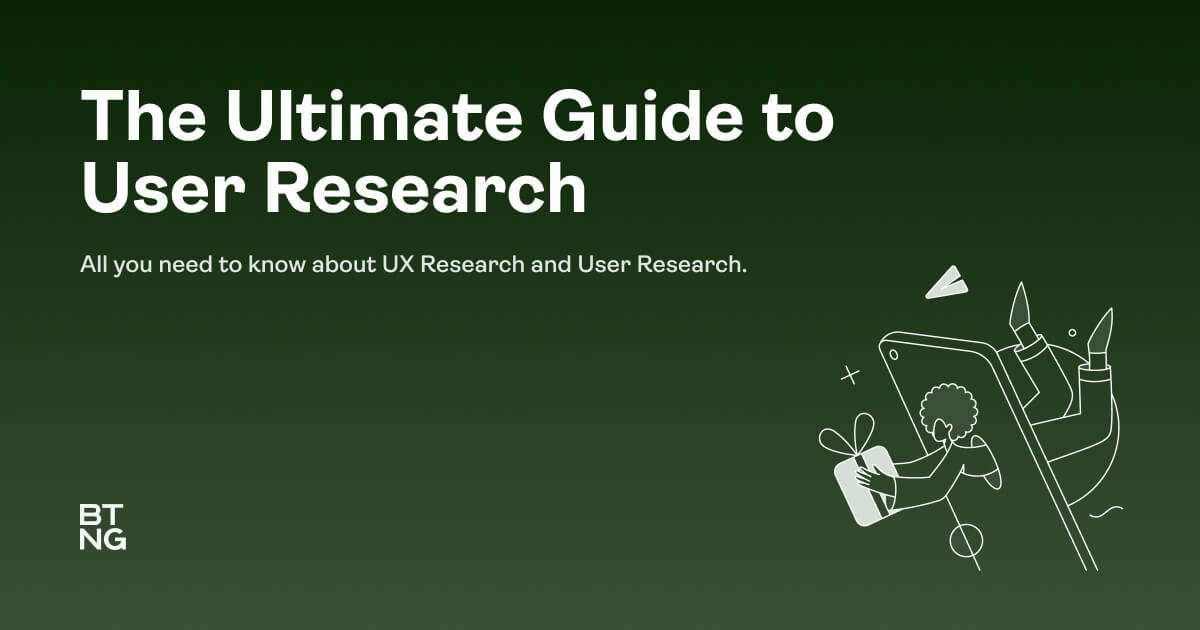
UX Research is a term that has been trending in the past few years. There's no surprise why it's so popular - User Experience Research is all about understanding your customer and their needs, which can help you greatly improve your conversion rate and user experience on your website. In this article, we're going to provide a complete guide to UX research as well as how to start implementing it in your organisation.Throughout this article we will give you a complete high-level overview of the entire UX Research meaning, supported by more in-depth articles for each topic.
Introduction to UX Research
Wether you're a grizzled UX Researcher who's been in the field for decades or a UX Novice who's just getting started, UX Research is an integral aspect of the UX Design process. Before diving into this article on UX research methods and tools, let's first take some time to break down what UX research actually entails.
Each of these UX Research Methods has its own strengths and weaknesses, so it's important to understand your goals for the UX Research activities you want to complete.
What is UX Research?
UX research begins with UX designers and UX researchers studying the real world needs of users. User Experience Research is a process --it's not just one thing-- that involves collecting data, conducting interviews, usability testing prototypes or website designs with human participants in order to deeply understand what people are looking for when they interact with a product or service.
By using different sorts of user-research techniques you can better understand not only people desires from their product of service, but a deeper human need which can serve as an incredibly powerful opportunity.
There's an incredible amount of different sorts of research methods. Most of them can be divided in two camps: Qualitative and Quantitative Research.
Qualitative research - Understanding needs can be accomplished through observation, in depth interviews and ethnographic studies. Quantitative Research focusses more on the numbers, analysing data and collecting measurable statistics.
Within these two groups there's an incredible amount of research activities such as Card Sorting, Competitive Analysis, User Interviews, Usability Tests, Personas & Customer Journeys and many more. We've created our The Curated List of Research Techniques to always give you an up-to-date overview.
Why is UX Research so important?
When I started my career as a digital designer over 15 years ago, I felt like I was always hired to design the client's idea. Simply translate what they had in their head into a UI without even thinking about changing the user experience. Needless to say: This is a recipe for disaster. An no, this isn't a "Client's don't know anything" story. Nobody knows! At least in the beginning. The client had "the perfect idea" for a new digital feature. The launch date was already set and the development process had to start as soon as possible.
When the feature launched, we expected support might get a few questions or even receive a few thank-you emails. We surely must've affected the user experience somehow!
But that didn't happen. Nothing happened. The feature wasn't used.
Because nobody needed it.
This is exactly what happens when you skip user experience research because you think you're solving a problem that "everybody" has, but nobody really does.
Conducting User Experience research can help you to have a better understanding of your stakeholders and what they need. This is incredibly valuable information from which you can create personas and customer journeys. It doesn't matter if you're creating a new product or service or are improving an existing once.
Five Steps for conducting User Research
Created by Eric Sanders , the Research Learning Spiral provides five main steps for your user research.
- Objectives: What are the knowledge gaps we need to fill?
- Hypotheses: What do we think we understand about our users?
- Methods: Based on time and manpower, what methods should we select?
- Conduct: Gather data through the selected methods.
- Synthesize: Fill in the knowledge gaps, prove or disprove our hypotheses, and discover opportunities for our design efforts.
1: Objectives: Define the Problem Statement
A problem statement is a concise description of an issue to be addressed or a condition to be improved upon. It identifies the gap between the current (problem) state and desired (goal) state of a process or product.
Problem statements are the first steps in your research because they help you to understand what's wrong or needs improving. For example, if your product is a mobile app and the problem statement says that customers are having difficulty paying for items within the application, then UX research will lead you (hopefully) down that path. Most likely it will involve some form of usability testing.
Check out this article if you'd like to learn more about Problem Statements.
2: Hypotheses: What we think we know about our user groups
After getting your Problem Statement right, there's one more thing to do before doing any research. Make sure you have created a clear research goal for yourself. How do you identify Research Objectives? By asking questions:
- Who are we doing this for? The starting point for your personas!
- What are we doing? What's happening right now? What do our user want? What does the company need?
- Think about When. If you're creating a project plan, you'll need a timeline. It also helps to keep in mind when people are using your products or service.
- Where is the logical next step. Where do people use your product? Why there? What limitations are there to that location? Where can you perform research? Where do your users live?
- Why are we doing this? Why should or shouldn't we be doing this? Why teaches you all about motivations from people and for the project.
- Last but not least: How? Besides thinking about the research activities itself, think about how people will test a product or feature. How will the user insights (outcome of the research) work be used in the User Centered Design - and development process?
3: Methods: Choose the right research method
UX research is about exploration, and you want to make sure that your method fits the needs of what you're trying to explore. There are many different methods. In a later chapter we'll go over the most common UX research methods .
For now, all you need to keep in mind that that there are a lot of different ways of doing research.
You definitely don't need to do every type of activity but it would be useful to have a decent understanding of the options you have available, so you pick the right tools for the job.
4. Conduct: Putting in the work
Apply your chosen user research methods to your Hypotheses and Objectives! The various techniques used by the senior product designer in the BTNG Design Process can definitely be overwhelming. The product development process is not a straight line from A to B. UX Researchers often discover new qualitative insights in the user experience due to uncovering new (or incorrect) user needs. So please do understand that UX Design is a lot more than simply creating a design.
5. Synthesise: Evaluating Research Outcome
So you started with your Problem Statement (Objectives), you drafted your hypotheses, chose the top research methods, conducted your research as stated in the research process and now "YOU ARE HERE".
The last step is to Synthesise what you've learned. Start by filling in the knowledge gaps. What unknowns are you now able to answer?
Which of your hypotheses are proven (or disproven)?
And lastly, which new exciting new opportunities did you discover!
Evaluating the outcome of the User Experience Research is an essential part of the work.
Make sure to keep them brief and to-the-point. A good rule of thumb is to include the top three positive comments and the top three problems.
UX Research Methods
Choosing the right ux research method.
Making sure you use the right types of user experience research in any project is essential. Since time and money is always limited, we need to make sure we always get the most bang-for-our-buck. This means we need to pick the UX research method that will give us the most insights as possible for a project.
Three things to keep in mind when making a choice among research methodologies:
- Stages of the product life cycle - Is it a new or existing product?
- Quantitative vs. Qualitative - In depth talk directly with people or data?
- Attitudinal vs. Behavioural - What people say vs what people do

Image from Nielsen Norman Group
Most frequently used methods of UX Research
- Card Sorting: Way before UX Research even was a "thing", psychological research originally used Card Sorting. With Card Sorting, you try to find out how people group things and what sort of hierarchies they use. The BTNG Research Team is specialised in remote research. So our modern Card Sorting user experience research have a few modern surprises.
- Usability Testing: Before launching a new feature or product it is important to do user testing. Give them tasks to complete and see how well the prototype works and learn more about user behaviours.
- Remote Usability Testing: During the COVID-19 lockdown, finding the appropriate ux research methods haven't always been that easy. Luckily, we've adopted plenty of modern solutions that help us with collecting customer feedback even with a remote usability test.
- Research-Based User Personas: A profile of a fictional character representing a specific stakeholder relevant to your product or service. Combine goals and objections with attitude and personality. The BTNG Research Team creates these personas for the target users after conducing both quantitative and qualitative user research.
- Field Studies: Yes, we actually like to go outside. What if your product isn't a B2B desktop application which is being used behind a computer during office hours? At BTNG we have different types of Field Studies which all help you gain valuable insights into human behaviour and the user experience.
- The Expert Interview: Combine your talent with that of one of BTNG's senior researcher. Conducting ux research without talking to the experts on your team would be a waste of time. In every organisation there are people who know a lot about their product or service and have unique insights. We always like to include them in the UX Research!
- Eye Movement Tracking: If you have an existing digital experience up and running - Eye Movement Tracking can help you to identify user experience challenges in your funnel. The outcome shows a heatmap of where the user looks (and doesn't).
Check out this article for a in-depth guide on UX Research Methods.
Qualitative vs. Quantitative UX research methods
Since this is a topic that we can on about for hours, we decided to split this section up in a few parts. First let's start with the difference.
Qualitative UX Research is based on an in-depth understanding of the human behaviour and needs. Qualitative user research includes interviews, observations (in natural settings), usability tests or contextual inquiry. More than often you'll obtain unexpected, valuable insights through this from of user experience research methods.
Quantitative UX Research relies on statistical analysis to make sense out of data (quantitative data) gathered from UX measurements: A/B Tests - Surveys etc. Quantitative UX Research is as you might have guessed, a lot more data-orientated.
If you'd like to learn more about these two types of research, check out these articles:
Get the most out of your User Research with Qualitative Research
Quantitative Research: The Science of Mining Data for Insights
Balancing qualitative and quantitative UX research
Both types of research have amazing benefits but also challenges. Depending on the research goal, it would be wise to have a good understanding which types of research you would like to be part of the ux design and would make the most impact.
The BTNG Research Team loves to start with Qualitative Research to first get a better understanding of the WHY and gain new insights. To validate these new learning they use Quantitative Research in your user experience research.
A handful of helpful UX Research Tools
The landscape of UX research tools has been growing rapidly. The BTNG Research team use a variety of UX research tools to help with well, almost everything. From running usability tests, creating prototypes and even for recruiting participants.
In the not-too-distant future, we'll create a Curated UX Research Tool article. For now, a handful of helpful UX Research Tools should do the trick.
- For surveys : Typeform
- For UX Research Recruitment: Dscout
- For analytics and heatmaps: VWO
- For documenting research: Notion & Airtable
- For Customer Journey Management : TheyDo
- For transcriptions: Descript
- For remote user testing: Maze
- For Calls : Zoom
Surveys: Typeform
What does it do? Survey Forms can be boring. Typeform is one of those ux research tools that helps you to create beautiful surveys with customisable templates and an online editor. For example, you can add videos to your survey or even let people draw their answers instead of typing them in a text box. Who is this for? Startup teams that want to quickly create engaging and modern looking surveys but don't know how to code it themselves.
Highlights: Amazing UX, looks and feel very modern, create forms with ease that match your branding, great reports and automation.
Why is it our top pick? Stop wasting time on ux research tools with too many buttons. Always keep the goal of your ux research methods in mind. Keep things lean, fast and simple with a product with amazing UX.
https://www.typeform.com/
UX Research Recruitment: Dscout
What does it do? Dscout is a remote research platform that helps you recruit participants for your ux research (the right ones). With a pool of +100.000 real users, our user researchers can hop on video calls and collect data for your qualitative user research. So test out those mobile apps user experience and collect all the data! Isn't remote research amazing?
Highlights: User Research Participant Recruitment, Live Sessions,Prototype feedback, competitive analysis, in-the-wild product discovery, field work supplementations, shopalongs.
Why is it our top pick? Finding the right people is more important than finding people fast. BTNG helps corporate clients in all types of industries which require a unique set of users, each time. Dscout helps us to quickly find the right people and make sure our user research is delivered on time and our research process stays in tact.
https://dscout.com/
Analytics and heatmaps: VWO
What does it do? When we were helping the Financial Times, our BTNG Research Team collaborated with FT Marketing Team who were already running experiments with VWO. 50% of the traffic would see one version of a certain page while 50% saw a different version. Which performed best? Perhaps you'd take a look at time-on-page. But more importantly: Which converts better!
Hotjar provides Product Experience Insights that show how users behave and what they feel strongly about, so product teams can deliver real value to them.
Highlights: VWO is an amazing suite that does it all:Automated Feedback, Heatmaps, EyeTracking, User Session Recordings (Participant Tracking) and one thing that Hotjar doesn't do: A/B Testing.
Why is it our top pick? Even tho it's an expensive product, it does give you value for money. Especially the reports with very black and white outcomes are great for presenting the results you've made.
https://vwo.com/
Documenting research: Notion
What does it do? Notion is our command center, where we store and constantly update our studio's aggregate wisdom. It is a super-flexible tool that helps to organise project documentation, prepare for interviews with either clients or their product users, accumulate feedback, or simply take notes.
Highlights: A very clean, structured way to write and share information with your team in a beautiful designed app with an amazing user experience.
Why is it our top pick? There's no better, more structured way to share information.
https://www.notion.so/
Customer Journey Management: TheyDo
What does it do? TheyDo is a modern Journey Management Platform. It centralises your journeys in an easy to manage system, where everyone has access to a single source of truth of the customer experience. It’s like a CMS for journeys.
Highlights: Customer Journey Map designer, Personas and 2x2 Persona Matrix, Opportunity & Solution Management & Prioritisation.
Why is it our top pick? TheyDo fits perfectly with BTNG's way of helping companies become more customer-centric. It helps to visualise the current experience of stakeholders. With those insight which we capture from interviews or usability testing, we discover new opportunities. A perfect starting point for creating solutions!
https://www.theydo.io/
Transcriptions: Descript
What does it do? Descript is an all-in-one solution for audio & video recording, editing and transcription. The editing is as easy as a doc. Imagine you’ve interviewed 20 different people about a new flavor of soda or a feature for your app. You just drop all those files into a Descript Project, and they show up in different “Compositions” (documents) in the sidebar. In a couple of minutes they’ll be transcribed, with speaker labels added automatically.
Highlights: Overdub, Filler Word Removal, Collaboration, Subtitles, Remote Recording and Studio Sound.
Why is it our top pick? Descript is an absolute monster when it comes to recording, editing and transcribing videos. It truly makes digesting the work after recording fast and even fun!
https://www.descript.com/
Remote user testing: Maze
What does it do? Maze is a-mazing remote user testing platform for unmoderated usability tests. With Maze, you can create and run in-depth usability tests and share them with your testers via a link to get actionable insights. Maze also generates a usability study report instantly so that you can share it with anyone.
It’s handy that the tool integrates directly with Figma, InVision, Marvel, and Sketch, thus, you can import a working prototype directly from the design tool you use. The BTNG Design Team with their Figma skills has an amazing chemistry with the Research Team due to that Figma/Maze integration.
Highlights: Besides unmoderated usability testing, Maze can help with different UX Research Methods, like card sorting, tree testing, 5-second testing, A/B testing, and more.
Why is it our top pick? Usability testing has been a time consuming way of qualitative research. Trying to find out how users interact (Task analysis) during an Interviews combined with keeping an eye on the prototype can be... a challenge. The way that Maze allows us to run (besides our hands on usability test) now also run unmoderated usability testing is a powerful weapon in our arsenal.
https://maze.co/
Calls: Zoom
What does it do? As the other video conferencing tools you can run video calls. But what makes Zoom a great tool? We feel that the integration with conferencing equipment is huge for our bigger clients. Now that there's also a Miro integration we can make our user interviews even more fun and interactive!
Highlights: Call Recording, Collaboration tools, Screen Sharing, Free trial, connects to conferencing equipment, host up to 500 people!
Why is it our top pick? Giving the research participants of your user interviews a pleasant experience is so important. Especially when you're looking for qualitative feedback on your ux design, you want to make sure they feel comfortable. And yes, you'll have to start using a paid version - but the user interface of Zoom alone is worth it. Even the Mobile App is really solid.
https://zoom.us/
In Conclusion
No matter what research methodology you rely on if it is qualitative research methods or perhaps quantitative data - keep in mind that user research is an essential part of the Design Process. Not only your UX designer will thank you, but also your users.
In every UX project we've spoken to multiple users - no matter if it was a task analysis, attitudinal research or focus groups... They all had one thing in common:
People thanked us for taking the time to listen to them.
So please, stop thinking about the potential UX research methods you might use in your design process and consider what it REALLY is about:
Solving the right problems for the right people.
And there's only one way to get there: Trying things out, listening, learning and improving.
Looking for help? Reach out!
See the Nielsen Norman Group’s list of user research tips: https://www.nngroup.com/articles/ux-research-cheat-sheet/
Find an extensive range of user research considerations, discussed in Smashing Magazine: https://www.smashingmagazine.com/2018/01/comprehensive-guide-ux-research/
Here’s a convenient and example-rich catalogue of user research tools: https://blog.airtable.com/43-ux-research-tools-for-optimizing-your-product/
Related Posts

How to generate UX Insights
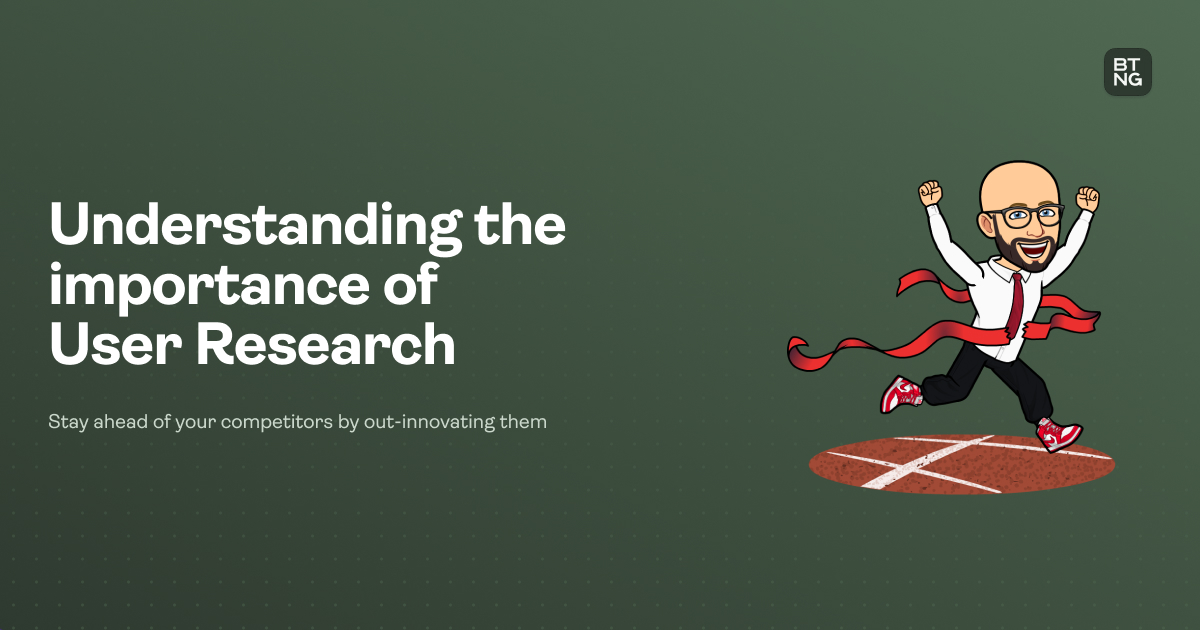
The importance of User Research

How to recruit participants
What is ux research.
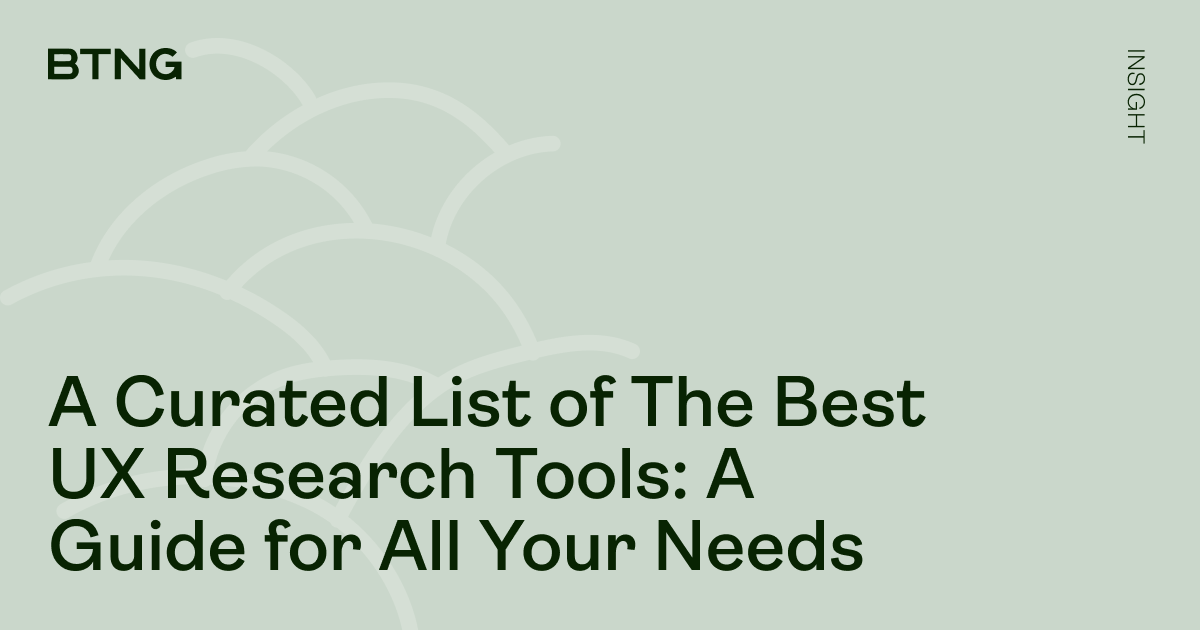
UX Research Tools
What is UX research?

table of contents
Introduction to ux research.
Designing user experiences is kind of like feng shui for your app or website: it’s all about creating an optimal experience that’s delightful, logical, and tailored to a user’s goals and needs. UX research is one of the most crucial ingredients to doing this well. More and more companies are realizing that research can’t be skipped, because answering critical questions about your users – and adopting a user-first approach to design – leads to more satisfied customers and fewer inefficiencies.
That’s why, after my years of experience at Turtle , I've created this guide as a foundation for understanding the impact UX research can have, and the steps you should take to start to incorporate UX research into your research and design process.
User experience research is a systematic approach to helping companies understand a user’s perspective. It’s about diving deep into how people interact with a product and observing how easily they can complete their tasks and meet their goals. Through UX research, you can discover behaviors, needs, and motivations via observation, task analysis, and other types of user feedback.
There are a number of different methods that fall under the umbrella of UX research, from usability studies to interviews and focus groups. The main element that ties everything together is a focus on understanding the user.
UX researchers act as a bridge between customers or users and the product, engineering, and company leadership teams. They distill learnings from their research into easily digestible stories and visual artifacts to inform how product development teams solve user problems and design the best user experience, validate assumptions, evaluate solutions, assess the impact of a product. UX research insights can even help guide a company’s strategic direction. Take it from Summer Kim, Head of User Research at WhatsApp:
“As a user researcher, my mission is to humanize data and spread impactful and memorable user stories, so we make products and services that matter to people, companies, and their missions.”
Qualitative vs. quantitative data.
At the beginning of your research process, you’ll be thinking about your goals and what you’re trying to discover. Are you trying to measure something? Or gain more high-level insights? That’s when you’ll be deciding on your qualitative and quantitative research methods. What’s the difference? As UX researcher Laura Klein puts it:
“Quantitative research tells you what your problem is. Qualitative research tells you why you have that problem.”
As an example, imagine you run a test that determines that over 99% of users who sign up for your service do not complete the purchase process. When you analyze the data, you find that the majority of users drop off at the Payment & Billing page. You’ve just done quantitative research to pinpoint a problem.
Now you need to understand why it is happening. You can use more quantitative data, like an A/B test to try changing up the experience of the page until you get more conversions. You can also dig deeper into understanding why users are not converting by leveraging qualitative data.
You might consider conducting user interviews, focus groups, or usability studies to find out what people are feeling or thinking when they arrive at that page. It is this analysis that, combined with the quantitative data you’ve gathered, can help you address the user’s problem.
Why UX research is important
User-centered design – in which you include users in every stage of the design process – is becoming widely adopted across companies of all sizes and industries. With user-centered design, empathy is the key to understanding someone else’s point of view and avoid the common trap of assuming that you are your user. What are the people who use your product actually thinking, feeling, and observing? UX research is the process to discover the answers to these questions and beyond.
UX research gives you:
Insight into what users want and need and why, an understanding of how users use your product, a foundation for how to design your product to fulfill those needs, data to inform your design decisions, insight into your return on investment for designs.
From a business standpoint, the benefits of UX research are clear: it positively affects user satisfaction, retention, and growth through informing product and design decisions. This ends up cutting down support costs, stirring product innovation, and influencing business strategy.
What UX research accomplishes
The Nielsen Norman Group describes four main product design stages in which UX research can be effective. If you incorporate research at each of these stages, you stand a far greater chance of success. However, keep in mind that research can be incorporated at any point – it doesn’t need to be a linear process to be effective.
1. Discover
Doing UX research during the Discovery phase of your project is critical for understanding the user problems, the current alternatives, and the opportunities for your company to create a winning solution This is when uncovering new insights that may surprise you. Some of the questions you may ask when conducting UX research during this stage include:
Who are we designing for?
What problem are we solving, what pain points do users have with their current solutions, what is preventing customers from using our product why are customers churning, how do we differentiate from other solutions on the market.
During the Discovery phase, you may conduct user interviews and send out surveys, run diary studies with users, gather feedback from Sales and Customer Support teams, interview stakeholders across the company, and do competitive research.
In the Explore phase of the design process, you’re diving a bit deeper into understanding the problem, and scoping out the solution. UX research tasks conducted during this phase may include:
Creating personas
Customer journey mapping, user story mapping, co-creation research.
All of these activities may involve sitting down with stakeholders, either in person or using an online whiteboard, and talking through the ideas and solutions together. During this phase, ideas become a bit more tangible, prototypes and designs are created, and getting a variety of feedback becomes really important.
The Test phase often happens while a product is being developed, and is important for validating designs with users, and for making sure products and features are accessible for all. Some of the UX research activities you could do during this phase are:
In-person usability testing
Remote usability testing, card sorting, a/b testing experiments, accessibility evaluation.
Listening is all about opening your ears to what users are actually saying about your product. You can engage in listening activities at any point, even if a product isn’t actively being developed. Some of the common UX research activities that involve listening are:
Social media monitoring
Help desk query analysis, third-party review analysis, search log analysis, contextual enquiry, q&as at events and demos, the role of a ux researcher.
You don’t need to have a dedicated UX research team to conduct UX research. Despite the fact that many larger tech companies and financial firms are foregoing agencies to bring UX in-house, many smaller companies leverage designers, product managers, or marketers to take on UX researching roles. Eduardo Gomez, UX Research Lead at Miro says:
“Can anyone become a decent UX researcher? The short answer is ‘yes’ – although it took me more than a year of failing to feel confident about the positive answer.”
Regardless of where UX research sits within an organization, there are some key responsibilities that the function has:
1. Inspiring empathy for the user
Taking a step back from the specific tasks that they carry out, UX researchers often serve as the “voice of the user” and aim to inspire empathy among those who are others who are developing the products or experiences.
Not only do UX researchers need to understand the context, thoughts, feelings, attitudes, and motivations of users, they also must align them with the motivations and expectations of internal stakeholders.
2. Collecting and analyzing data
Of course, research is about gathering and making sense of data. One of the key deliverables at the end of a UX research project is a list of recommendations for the product development and design teams. But before you make those suggestions, you need to understand and synthesize the findings.
One common mistake with research is not considering how you will analyze it until after all of the research is done. Savvy UX researchers start thinking about data analysis from the start, so they can design the project to deliver the most useful results, and also revisit their plan periodically as the project progresses.
Many UX researchers employ thematic analysis to start grouping data into meaningful categories. Affinity diagramming is a great way to make sense of qualitative data in a visual way, and identify meaningful patterns.
3. Collaborating with key stakeholders
Since UX research is still a fairly new field for some people, there are bound to be people in a company who don’t understand the purpose or benefits, or who aren’t sure where UX research should sit in the organizational structure to be most effective.
Often you can engage stakeholders across the company in UX research by carrying out educational sessions. This can also show you who will be great supporters, influencers, and advocates for UX research in the future.
What do remote UX Teams love doing in Miro?
Creating affinity maps, personas, and customer journey maps
Brainstorming and collaborating on projects
Running remote design sprints
Sketching out or iterating prototypes
Documenting everything together
Presenting their work
Author Josh Zak, Ux-pert from Turtle Design
Discover more.
Service design vs. UX design
Read article
Customer experience vs. Service design
Get on board in seconds
Join thousands of teams using Miro to do their best work yet.
Learn / Guides / UX research guide
Back to guides
How to understand your users and what they want: the complete guide to UX research
Really knowing your users involves taking the initiative to understand their behavior, their preferences, and their desires. This is where UX research comes into play.
It may seem overwhelming at first and you might not know where to start, but when done right, UX research gives you key insights into what your users want (and don’t), so you can give them the best possible product and experience.
Last updated
Reading time.

This is your ultimate guide to UX research: learn exactly what it is, why it matters, which research methods to use, and the best practices to follow, so you can start understanding your users better and create the perfect product for them .
Make user-driven product improvements with UX research
Use Hotjar's tools to help you understand your customers and enhance the user experience.
What is UX research?
User experience (UX) research is the study of all your user groups and how they interact with your product or service . It helps you create a product your users love and validate decisions, like trying to figure out if your users will like your new feature or if a design change will positively impact their experience.
UX research vs. UX design
To be clear, UX research and UX design are not the same thing . The UX research process centers on carrying out qualitative and quantitative analysis to gain key insights about your users and the way they interact with your product. Meanwhile, UX design is about implementing those findings to create a valuable experience for your users, whether on your website or app.
While some companies have designated UX or product researcher roles, UX designers often carry out UX research to inform their design decisions. And sometimes, marketing and customer success teams conduct UX research to learn more about their customers and how to better speak to and serve them.
The UX research process, which is typically an initial phase of the greater UX design process, is ultimately a problem-solving framework. And to determine which research method is the best fit for your needs, you have to begin by asking the question, ‘What are my goals?’
The 2 main methods of UX research
While UX research is an overarching term that describes the process of getting to know your users, there are various methods you can use to carry out your analysis. And, as with any research process, the goal of your research will determine the methods you use .
The first step to decide which method you will be using is defining the research question. And remember: research sometimes requires a creative effort—don't be afraid to think outside the box and be innovative with the methodology to get your insights!
Use both qualitative and quantitative methods when conducting UX analysis . Quantitative research gives you an overview of the hard data, while qualitative research helps explain the ‘why’ behind your results.
Let's take a look at these two methods:
5 quantitative UX research methods
Quantitative research helps you use numerical data to inform your design and product decisions. Quantitative UX research methods include:
Surveys : glean important insights into the user experience from surveys. Use Net Promoter Score ® (NPS) and customer satisfaction (CSAT) score surveys for a quick, quantitative look at how your users feel about your product and brand, asking them to score their experience on a scale of 1–5.
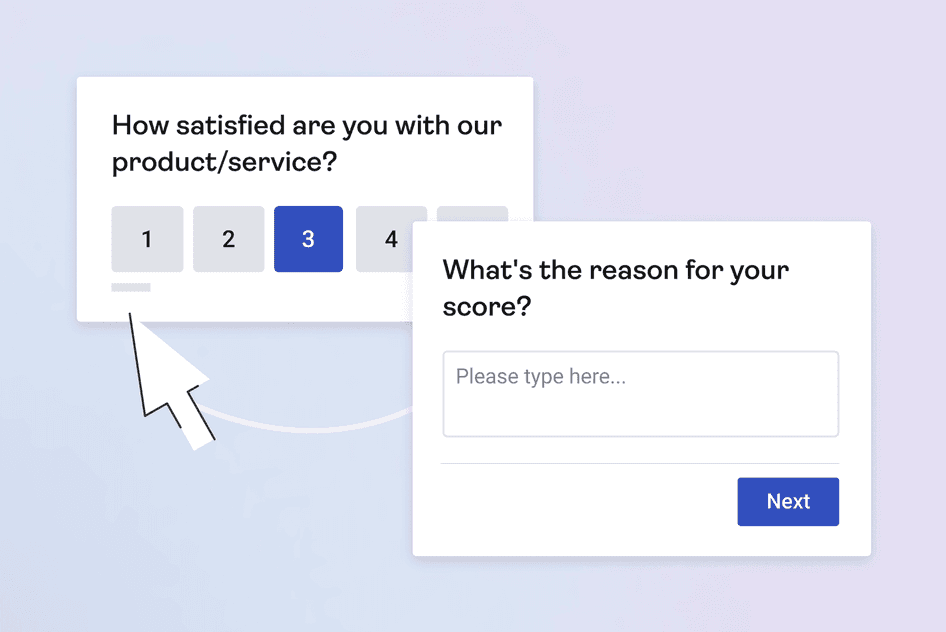
A/B testing : this helps you compare and evaluate multiple versions of your product or design. For example, if you’re testing out different designs for your check-out cart, use A/B testing to determine which version results in more sales. You can use a tool like Optimizely to test different versions of your product.
Eye tracking : you can use eye tracking for both quantitative and qualitative research. Special tools, like Lumen and Tobii , let you observe which parts of your design draw users in and which they ignore. You can use these findings to influence your UX design and overall product strategy.
Product analytics : as well as eye tracking, you can use product analytics tools like heatmaps to gain key insights into how your users interact with your website. You can also use Google Analytics to learn more about user demographics and behavior.
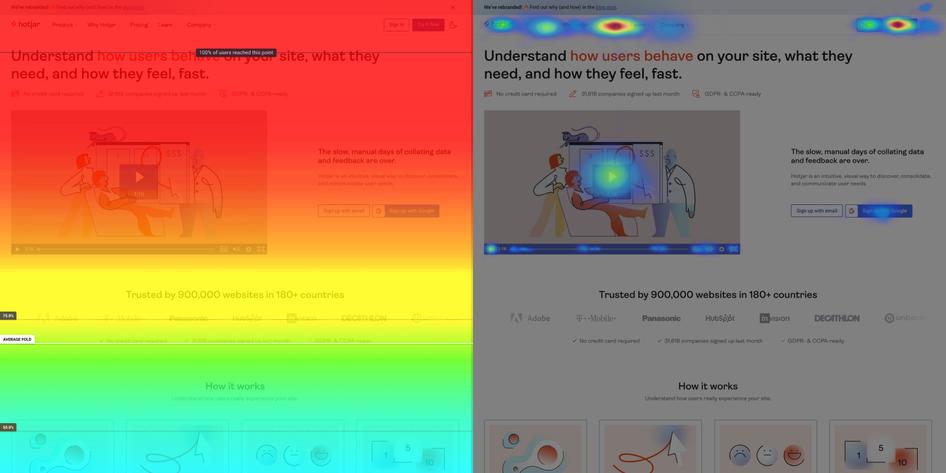
Benchmarking : this lets you track your product’s usability over time to determine whether it’s making progress—for example, becoming increasingly more valuable and easy to use. To do so, use a relatively large sample size of users (40 or more) and measure their time to complete certain tasks, as well as the outcome of their actions.
5 qualitative UX research methods
It’s also important to understand the reasons behind your quantitative research findings, which is where qualitative analysis can help. Qualitative UX research methods include:
Surveys : as well as measuring hard data, you can use surveys to ask your users key UX research questions and learn about their product and post-purchase experiences. For example, send out exit-intent surveys to get a better understanding of why your users leave, so you can prevent it from happening in the future.
Feedback : include a Hotjar Feedback widget on your website to hear what users have to say about your brand and product while it’s fresh in their minds. This allows you to capture opinions from users in the wild and better understand their frustrations and desires.
Usability testing : this observational research method helps you identify drawbacks and opportunities in your product. Some examples of usability testing include performance testing, card sorting, and tree testing, which can give you key insights into the way your users understand and experience your product.
User observation : you can also use heatmaps to gain qualitative insights about how your users navigate your website. Hotjar lets you create an unlimited number of heatmaps with a freemium account. Also, watch recordings to see how your users really engage with your product and find out where they get stuck on your site so you can improve the design (and their experience).
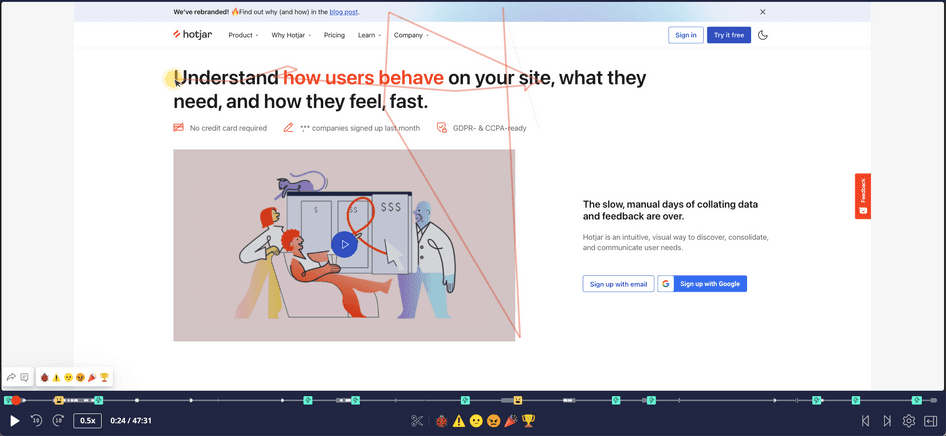
Interviews : what better way to get to know your users than by speaking with them? Conduct interviews with distinct user profiles to learn about their jobs to be done , their frustrations with your product, and which features provide them with the most value.
5 best practices for UX research
When done right, UX research is a powerful tool that helps you get to know your users and give them the product experience they desire. Take a look at these six UX research best practices to conduct effective research and make decisions that'll have the greatest impact on all your users.
1. Identify your users and their goals
Empathy is the key to successful design. To create something your users will love, you first have to know and understand them . Establish unique user personas —you can’t fit all your different types of users in one box—so you can design a product that delights every type of buyer that comes into contact with it.
Remember, a big part of UX research is understanding your various user personas and their motivations, which is why you should analyze all of your user groups. Be sure to both track their behavior and seek their opinions— user feedback will often help explain the ‘why’ behind the actions you observe.
Pro tip: use a Hotjar user persona survey to segment your customers into different groups based on their goals, barriers, and use cases.
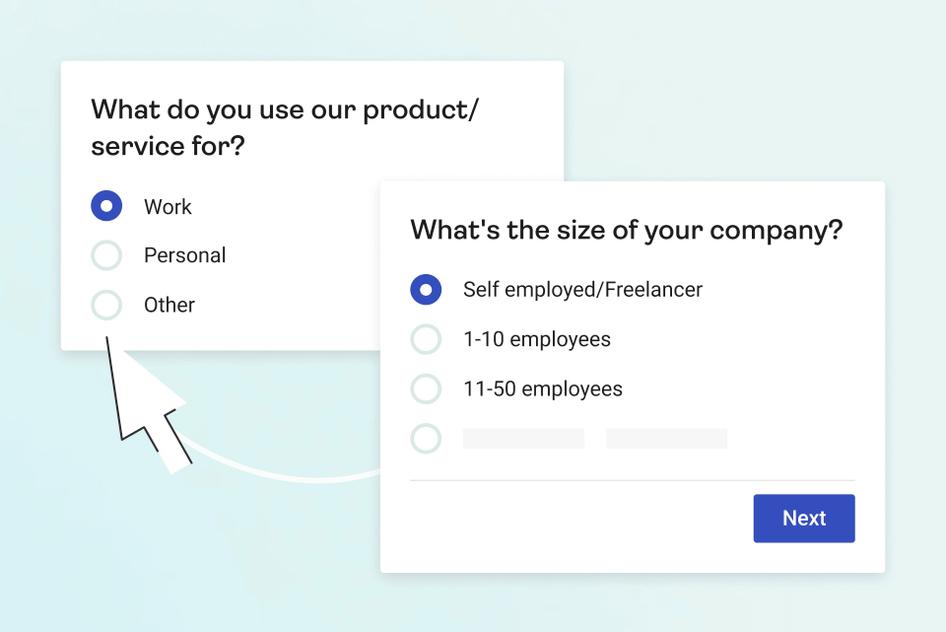
Collect survey data from your users to help you get to know them better.
2. Use a variety of tools
You should have a variety of UX research tools at your disposal to conduct both quantitative and qualitative research. Hotjar, for example, lets you observe what users do on your product or site with Heatmaps and Recordings , as well as collect user opinions with Surveys and Feedback. And for A/B testing, Hotjar offers integrations with tools like Google Optimize and Optimizely , so you can compare different versions of your design.
For the full list of tools to conduct UX research and optimize the process: check out this article .
3. Make data-driven decisions
Once you’ve conducted your UX research, put it to good use and make informed product changes that provide value to your users. Now’s the time to put your users’ goals and desires at the center of your product and design decisions, and find ways to alleviate their frustrations to get happier users that stick around for the long haul.
4. Keep all relevant stakeholders in the loop
While you may be in charge of the UX research on your team, you may not be calling the shots when it comes to product design changes or new feature roll-outs. That’s why it’s important to keep everyone, from project and product managers and marketers to C-level decision-makers, in the loop. Also, be sure to present your UX research findings in a clear, understandable manner.
Pro tip: if you're collecting insights with Hotjar, use the Highlights feature to save and organize valuable snippets of heatmaps and recordings and share them with stakeholders to keep everyone on the same page.
5. Improve and repeat your UX research cycle
UX research is not simply a box to check—it should be an ongoing process that you constantly refine and carry out to optimize your product and the user experience. Continue updating your UX research process to gain even better insights into the customer experience and give your users a product that exceeds expectations .

Conduct UX research to optimize your product and create happier users
UX research saves you from making uninformed assumptions about what your users want. A strong UX research process helps you understand their habits and desires to make smart design decisions.
Use our methods and best practices to really get to know your customers, nail your UX design, and turn curious visitors into delighted, loyal users.
Use UX research to make user-driven product improvements
Use Hotjar tools to help you understand your customers and enhance the user experience
FAQs about UX research
What are the benefits of ux research.
The primary benefit of conducting UX research is that it helps you provide your users with an optimal product experience. UX research gives you the data you need to make informed product decisions and delight your users at every step of their journey.
Who should conduct UX research?
Sometimes, teams will have designated UX or product researchers. However, people in many different roles can carry out UX research, including members of a marketing team, as well as product designers and developers.
What is the difference between UX research and UX design?
You can think of UX design as the implementation of UX research findings. While UX research is centered around gaining insights into user behavior and preferences, UX design is all about putting these insights into practice and designing a product that provides the best possible user experience.
A Beginner’s Guide to Qualitative UX Research
The ability to empathize with the user is at the heart of UX design. One of the most effective ways to understand what your user is experiencing is by conducting UX research .
Qualitative user research is particularly useful for getting into the mind of your users and obtaining anecdotal evidence of how your product can be improved.
Unlike its counterpart, quantitative research, qualitative research is all about collecting and analyzing subjective information that helps designers make formative decisions about their product designs. There are many ways to utilize qualitative user research and many instances during the design process when it can be especially beneficial.
We’ve created this comprehensive guide to help you better understand qualitative user research and how to use it. Here’s what we’ll cover:
- What is qualitative UX research?
- When do you use qualitative UX research?
- Qualitative UX research methods
- Understanding mixed methods in UX research
- Key takeaways
Let’s get started!
1. What is qualitative UX research?
The goal of qualitative user research is to obtain and analyze non-numerical, subjective information from various kinds of user testing.
Data from qualitative user research usually takes the form of quotes, anecdotes, observations, or narrative descriptions and is used to assess how usable a product is.
Qualitative user research helps explain numerical or quantitative data. For instance, if your quantitative research shows that 30% of users are deleting your app after one month of use, qualitative data can help uncover why and give clues about how to remedy this drop-off.
Check out the video below from CareerFoundry graduate and UX designer Maureen Herben for an end-to-end guide to qualitative user research.
2. When do you use qualitative UX research?
Qualitative user research is both formative and summative, meaning it can help inform design choices while a product is being created as well as analyze how effective the final design is.
Because of this, qualitative user research is often conducted at many points in the design process, during redesign, and when you have a final working product. Here’s an overview of the benefits of qualitative research, some potential downsides, and situations when you should apply qualitative methods in your user research.
Benefits of qualitative UX research
- Easy to organize as you only need 5-8 participants and study conditions can be flexible and less controlled
- Participants are encouraged to think aloud during usability testing so researchers can see inside the minds and emotions of their users when interacting with a product
- Reveals information that quantitative data cannot, and explains why numerical or statistical trends are occurring
- Data obtained from qualitative user research is emotionally-driven and may be more convincing for stakeholders to invest in design choices
- Users may find it easier to give feedback in their own words rather than assigning a numerical value to their feelings.
Potential downsides to qualitative UX research
- Analysis can be more time-consuming and complex and difficult to present in graphs or visual form
- Smaller number of participants may mean that you’re missing out on crucial information from other users, leading to the need for repeat testing
- Researchers must be adept at reading emotional and non-verbal cues
- Certain investors or stakeholders may prefer numerical or statistical data as opposed to anecdotal, qualitative research
- More subject to human bias or researcher influence, and results are difficult to replicate
When to use qualitative UX research
- When you’re making formative decisions about design choices, early in the process
- To identify usability issues within a prototype (toward the “end” of the design process) or a final product
- As a means of discovering solutions to usability issues
- During a product redesign, when there are typically more resources available and more capacity to consider a broader range of possibilities
3. Qualitative UX research methods
There are many ways to conduct qualitative user research. We’ll cover four primary methods here: user interviews, focus groups, shadow sessions, and diary studies.
User interviews
User interviews are a great source of qualitative user data and help researchers and designs gain a greater understanding of their user’s motivations, needs, and behaviors.
It’s important to ask quality open-ended questions in order to gain relevant and useful information about the user’s actions and frustrations.
User interviews are one of the most frequently used qualitative UX research methods. If you’d like to learn more about how to conduct a user interview, check out this recording of a live workshop, hosted by CareerFoundry graduate and Senior UX Designer, Maureen Herben.
For more free, live and on-demand workshops just like this, take a look at our events listings .
Focus groups
Focus groups are just like interviews but with multiple users participating at once. These are great for getting lots of qualitative data at once from various user viewpoints.
These sessions are likely to feel more conversational and generative since participants may feel more at ease with other test subjects around them—and therefore more willing to express concerns, thoughts, and emotions.
Shadow sessions
Sometimes called immersive or observational research, shadow sessions allow designers and researchers to observe a user interacting with a product in real time and in the user’s own environment.
This is one of the most accurate ways to assess usage and usability but also requires a high level of observational skills and empathy in order to analyze verbal and non-verbal cues without interrupting the user’s natural process.
Diary studies
In diary studies (sometimes referred to as diary records), researchers ask a user to keep a diary record of their usability patterns with a certain product over a given time period (usually a day or week, but sometimes more).
Users take note of how they use a product, when they use it, and how they feel when interacting with it. Diary studies are a great way to see what patterns emerge over time—patterns in user needs and feelings, as well as any usability problems or other pain points.
4. Understanding mixed methods in UX research
The UX research methods we’ve just outlined are solely qualitative in nature. But there are loads of research methods that yield both qualitative and quantitative user data within the same testing parameters. Paper prototyping, card sorting, and visual affordance testing are a few examples.
Utilizing user research methods that offer both qualitative and quantitative UX research is referred to as mixed methods research . Mixed methods research is key to obtaining a complete picture of the usability of a product and is best practice when it comes to conducting accurate user research.
Combining qualitative and quantitative user research methods helps designers dig deeper in answering the questions of “What? How much? How many? And why?”
Relying too heavily on either qualitative or quantitative user research can prevent you from gaining key insights about your users and possible pitfalls in your product. Taking advantage of mixed methods research is a more holistic approach to user research, and often lends more accurate and complete information about a product’s overall usability and effectiveness.
5. Key takeaways
Now you’re better equipped for your next UX research project !
Qualitative user research can take on many forms, yet each method can offer invaluable insights about the usability of a product.
The subjective and non-numerical data obtained from qualitative testing helps designers and researchers see into the minds of their users when interacting with a product.
Through quotes, descriptions, and observations, qualitative research aims to further explain statistical or quantitative results by looking at why those trends may be occurring, and gives a more in-depth interpretation of the usability and success of a product.
If you’d like to learn more about UX research, check out these articles:
- What is user research, and what’s its purpose?
- Qualitative vs. quantitative UX research—what’s the difference?
- How to conduct inclusive user research
- 5 Mistakes to avoid in your UX research portfolio
Product Design Bundle and save
User Research New
Content Design
UX Design Fundamentals
Software and Coding Fundamentals for UX
- UX training for teams
- Hire our alumni
- Student Stories
- State of UX Hiring Report 2024
- Our mission
- Advisory Council
Education for every phase of your UX career
Professional Diploma
Learn the full user experience (UX) process from research to interaction design to prototyping.
Combine the UX Diploma with the UI Certificate to pursue a career as a product designer.
Professional Certificates
Learn how to plan, execute, analyse and communicate user research effectively.
Master content design and UX writing principles, from tone and style to writing for interfaces.
Understand the fundamentals of UI elements and design systems, as well as the role of UI in UX.
Short Courses
Gain a solid foundation in the philosophy, principles and methods of user experience design.
Learn the essentials of software development so you can work more effectively with developers.
Give your team the skills, knowledge and mindset to create great digital products.
Join our hiring programme and access our list of certified professionals.
Learn about our mission to set the global standard in UX education.
Meet our leadership team with UX and education expertise.
Members of the council connect us to the wider UX industry.
Our team are available to answer any of your questions.
Fresh insights from experts, alumni and the wider design community.
Success stories from our course alumni building thriving careers.
Discover a wealth of UX expertise on our YouTube channel.
Latest industry insights. A practical guide to landing a job in UX.
A complete guide to presenting UX research findings
In this complete guide to presenting UX research findings, we’ll cover what you should include in a UX research report, how to present UX research findings and tips for presenting your UX research.

Free course: Introduction to UX Design
What is UX? Why has it become so important? Could it be a career for you? Learn the answers, and more, with a free 7-lesson video course.
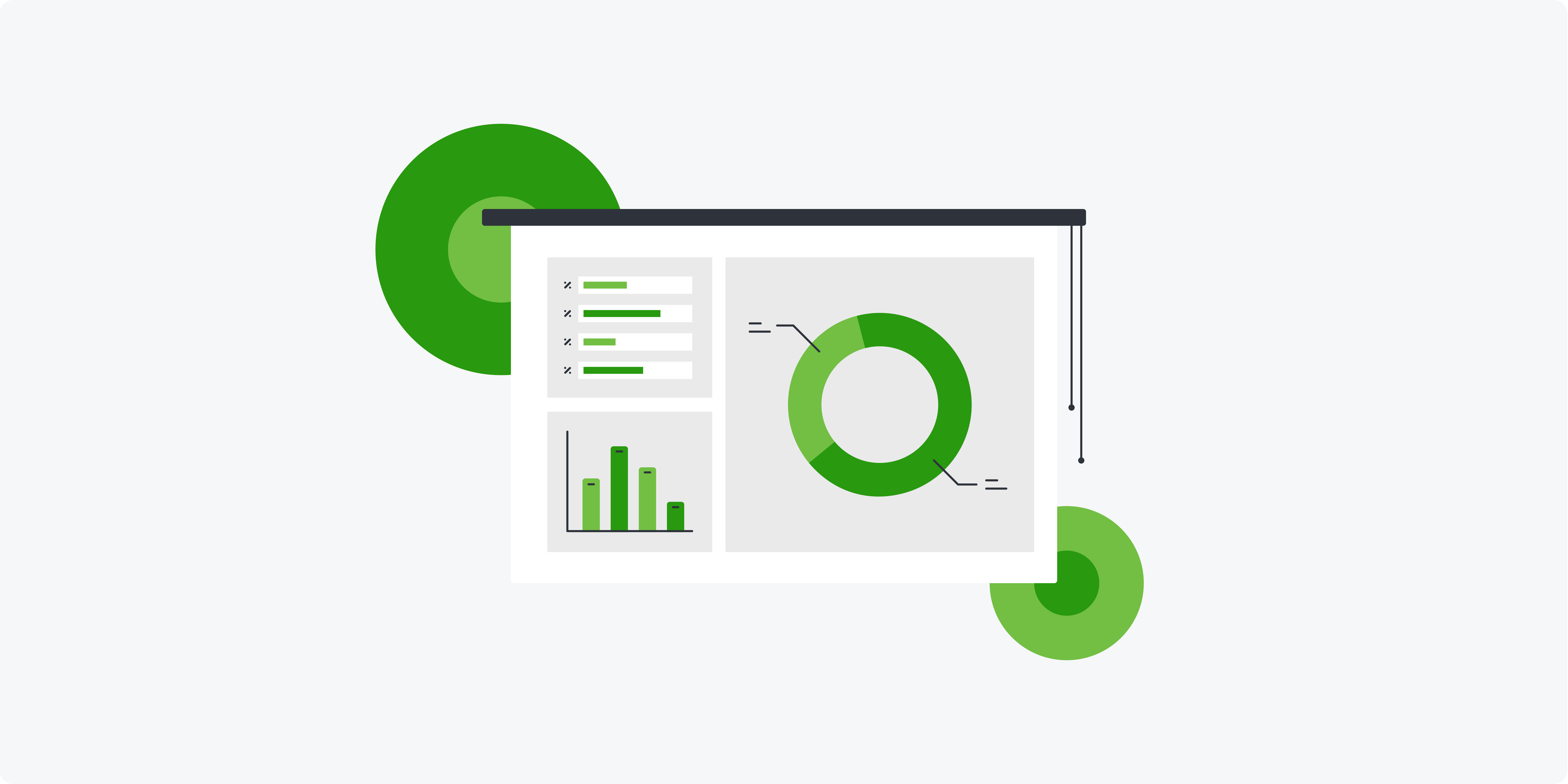
User experience research sets out to identify the problem that a product or service needs to solve and finds a way to do just that. Research is the first and most important step to optimising user experience.
UX researchers do this through interviews, surveys, focus groups, data analysis and reports. Reports are how UX researchers present their work to other stakeholders in a company, such as designers, developers and executives.
In this guide, we’ll cover what you should include in a UX research report, how to present UX research findings and tips for presenting your UX research.
Components of a UX research report
How to write a ux research report, 5 tips on presenting ux research findings.
Ready to present your research findings? Let’s dive in.
[GET CERTIFIED IN USER RESEARCH]
There are six key components to a UX research report.
Introduction
The introduction should give an overview of your UX research . Then, relate any company goals or pain points to your research. Lastly, your introduction should briefly touch on how your research could affect the business.
Research goals
Simply put, your next slide or paragraph should outline the top decisions you need to make, the search questions you used, as well as your hypothesis and expectations.
Business value
In this section, you can tell your stakeholders why your research matters. If you base this research on team-level or product development goals, briefly touch on those.
Methodology
Share the research methods you used and why you chose those methods. Keep it concise and tailored to your audience. Your stakeholders probably don’t need to hear everything that went into your process.
Key learnings
This section will be the most substantial part of your report or presentation. Present your findings clearly and concisely. Share as much context as possible while keeping your target audience – your stakeholders – in mind.
Recommendations
In the last section of your report, make actionable recommendations for your stakeholders. Share possible solutions or answers to your research questions. Make your suggestions clear and consider any future research studies that you think would be helpful.
1. Define your audience
Most likely, you’ll already have conducted stakeholder interviews when you were planning your research. Taking those interviews into account, you should be able to glean what they’re expecting from your presentation.
Tailor your presentation to the types of findings that are most relevant, how those findings might affect their work and how they prefer to receive information. Only include information they will care about the most in a medium that’s easy for them to understand.
Do they have a technical understanding of what you’re doing or should you keep it a non-technical presentation? Make sure you keep the terminology and data on a level they can understand.
What part of the business do they work in? Executives will want to know about how it affects their business, while developers will want to know what technological changes they need to make.
2. Summarise
As briefly as possible, summarise your research goals, business value and methodology. You don’t need to go into too much detail for any of these items. Simply share the what, why and how of your research.
Answer these questions:
- What research questions did you use, and what was your hypothesis?
- What business decision will your research assist with?
- What methodology did you use?
You can briefly explain your methods to recruit participants, conduct interviews and analyse results. If you’d like more depth, link to interview plans, surveys, prototypes, etc.
3. Show key learnings
Your stakeholders will probably be pressed for time. They won’t be able to process raw data and they usually don’t want to see all of the work you’ve done. What they’re looking for are key insights that matter the most to them specifically. This is why it’s important to know your audience.
Summarise a few key points at the beginning of your report. The first thing they want to see are atomic research nuggets. Create condensed, high-priority bullet points that get immediate attention. This allows people to reference it quickly. Then, share relevant data or artefacts to illustrate your key learnings further.
Relevant data:
- Recurring trends and themes
- Relevant quotes that illustrate important findings
- Data visualisations
Relevant aspects of artefacts:
- Quotes from interviews
- User journey maps
- Affinity diagrams
- Storyboards
For most people you’ll present to, a summary of key insights will be enough. But, you can link to a searchable repository where they can dig deeper. You can include artefacts and tagged data for them to reference.
[GET CERTIFIED IN UX]
4. Share insights and recommendations
Offer actionable recommendations, not opinions. Share clear next steps that solve pain points or answer pending decisions. If you have any in mind, suggest future research options too. If users made specific recommendations, share direct quotes.
5. Choose a format
There are two ways you could share your findings in a presentation or a report. Let’s look at these two categories and see which might be the best fit for you.
Usually, a presentation is best for sharing data with a large group and when presenting to non-technical stakeholders. Presentations should be used for visual communication and when you only need to include relevant information in a brief summary.
A presentation is usually formatted in a:
- Case studies
- Atomic research nuggets
- Pre-recorded video
If you’re presenting to a smaller group, technical stakeholder or other researchers, you might want to use a report. This gives you the capacity to create a comprehensive record. Further, reports could be categorised based on their purpose as usability, analytics or market research reports.
A report is typically formatted in a:
- Notion or Confluence page
- Slack update
You might choose to write a report first, then create a presentation. After the presentation, you can share a more in-depth report. The report could also be used for records later.
1. Keep it engaging
When you’re presenting your findings, find ways to engage those you’re presenting to. You can ask them questions about their assumptions or what you’re presenting to get them more involved.
For example, “What do you predict were our findings when we asked users to test the usability of the menu?” or “What suggestions do you think users had for [a design problem]?”
If you don’t want to engage them with questions, try including alternative formats like videos, audio clips, visualisations or high-fidelity prototypes. Anything that’s interactive or different will help keep their engagement. They might engage with these items during or after your presentation.
Another way to keep it engaging is to tell a story throughout your presentation. Some UX researchers structure their presentations in the form of Joseph Campbell’s Hero’s Journey . Start in the middle with your research findings and then zoom out to your summary, insights and recommendations.
2. Combine qualitative and quantitative data
When possible, use qualitative data to back up quantitative data. For example, include a visualisation of poll results with a direct quote about that pain point.
Use this opportunity to show the value of the work you do and build empathy for your users. Translate your findings into a format that your stakeholders – designers, developers or executives – will be able to understand and act upon.
3. Make it actionable
Actionable presentations are engaging and they should have some business value . That means they need to solve a problem or at least move toward a solution to a problem. They might intend to optimise usability, find out more about the market or analyse user data.
Here are a few ways to make it actionable:
- Include a to-do list at the end
- Share your deck and repository files for future reference
- Recommend solutions for product or business decisions
- Suggest what kind of research should happen next (if any)
- Share answers to posed research questions
4. Keep it concise and effective
Make it easy for stakeholders to dive deeper if they want to but make it optional. Yes, this means including links to an easily searchable repository and keeping your report brief.
Humans tend to focus best on just 3-4 things at a time. So, limit your report to three or four major insights. Additionally, try to keep your presentation down to 20-30 minutes.
Remember, you don’t need to share everything you learned. In your presentation, you just need to show your stakeholders what they are looking for. Anything else can be sent later in your repository or a more detailed PDF report.
5. Admit the shortcomings of UX research
If you get pushback from stakeholders during your presentation, it’s okay to share your constraints.
Your stakeholders might not understand that your sample size is big enough or how you chose the users in your study or why you did something the way you did. While qualitative research might not be statistically significant, it’s usually representative of your larger audience and it’s okay to point that out.
Because they aren’t researchers, it’s your job to explain your methodology to them but also be upfront about the limitations UX research can pose. When all of your cards are on the table, stakeholders are more likely to trust you.
When it comes to presenting your UX research findings, keep it brief and engaging. Provide depth with external resources after your presentation. This is how you get stakeholders to find empathy for your users. This is how you master the art of UX.
Need to go back to the basics and learn more about UX research? Dive into these articles:
What is UX research? The 9 best UX research tools to use in 2022
Subscribe to our newsletter
Get the best UX insights and career advice direct to your inbox each month.
Thanks for subscribing to our newsletter
You'll now get the best career advice, industry insights and UX community content, direct to your inbox every month.
Upcoming courses
Professional diploma in ux design.
Learn the full UX process, from research to design to prototyping.
Professional Certificate in UI Design
Master key concepts and techniques of UI design.
Certificate in Software and Coding Fundamentals for UX
Collaborate effectively with software developers.
Certificate in UX Design Fundamentals
Get a comprehensive introduction to UX design.
Professional Certificate in Content Design
Learn the skills you need to start a career in content design.
Professional Certificate in User Research
Master the research skills that make UX professionals so valuable.
Upcoming course
Build your UX career with a globally-recognised, industry-approved certification. Get the mindset, the skills and the confidence of UX designers.
You may also like

AI & UX: A reality check with Jakob Nielsen
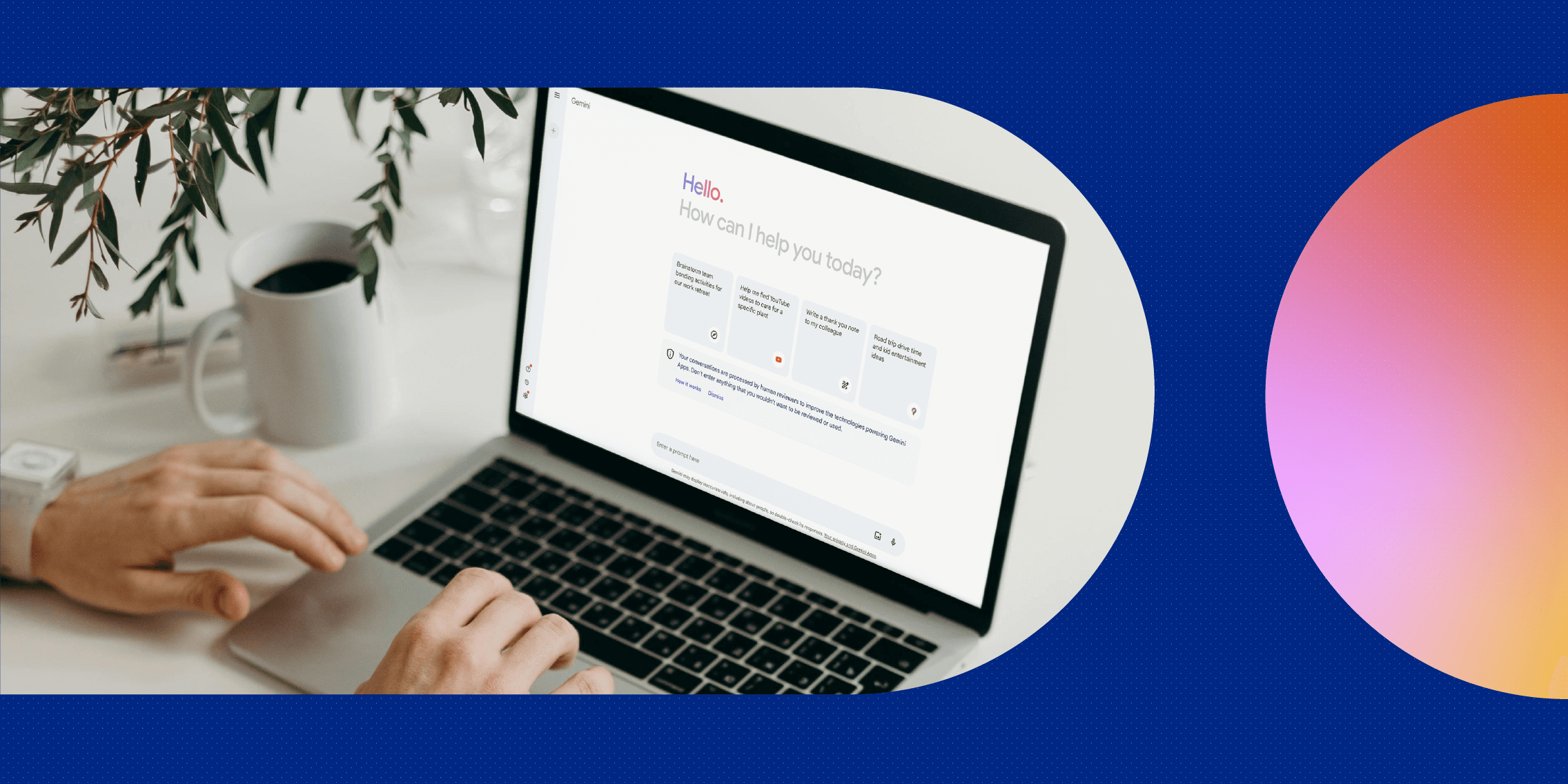
What is Gemini AI (formerly known as Bard AI) and how can you use it to become a better UX designer?
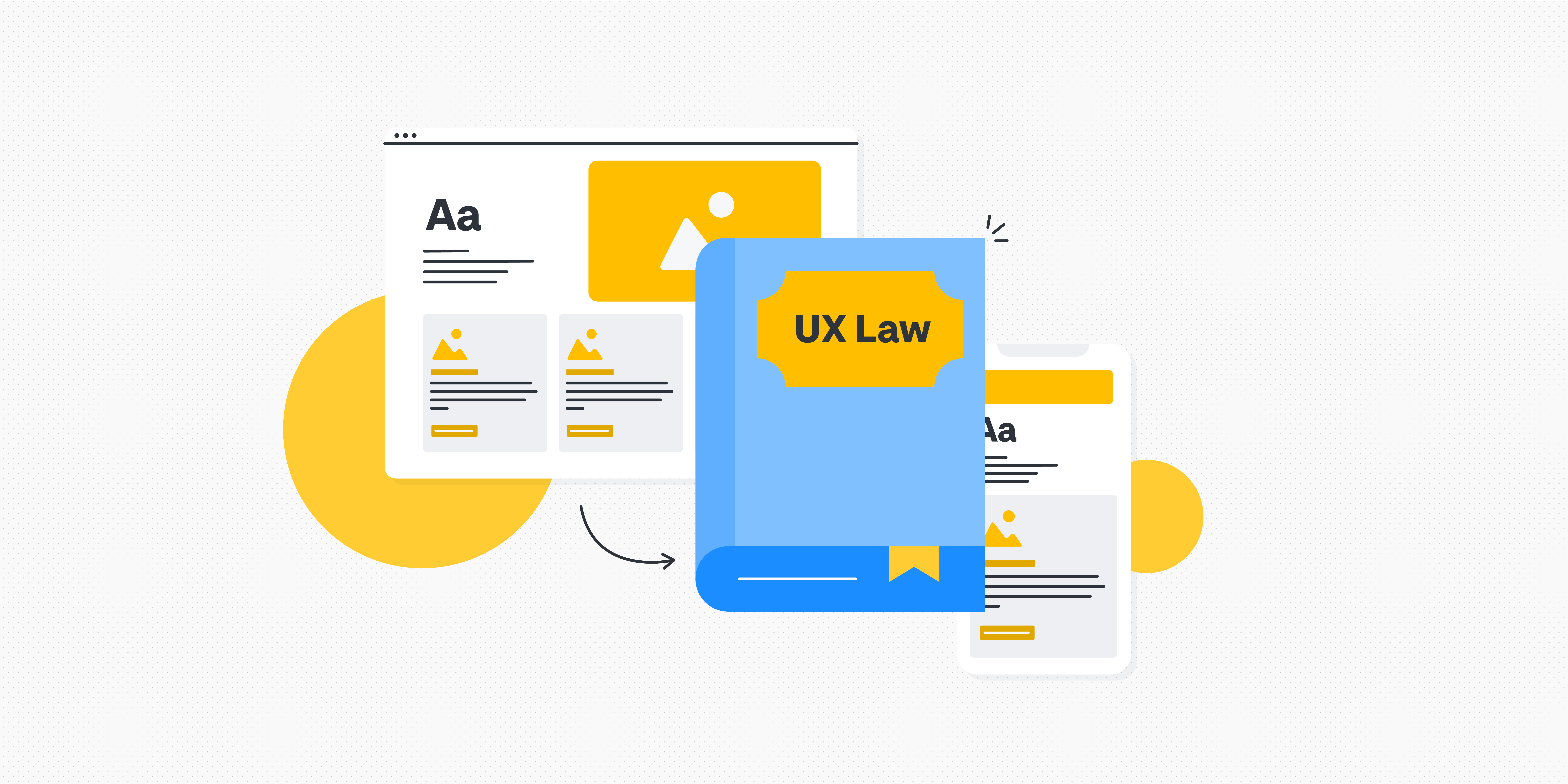
What are the laws of UX? All 21 laws explained
Build your UX career with a globally recognised, industry-approved qualification. Get the mindset, the confidence and the skills that make UX designers so valuable.
2 July 2024
- UI and UX design
UX research

- Linda Rosencrance
What is UX research?
User experience (UX) research is the study of learning what end users of a system or product need and want, then employing those insights to enhance the design process for products, services or software.
UX research can take different forms depending on the area of focus. For example, for product teams, UX research could mean validating concepts and prototypes. For marketing teams, it might mean testing brand designs and messaging before launching products.
When conducting UX research, researchers study the motivations, behaviors and needs of users by analyzing how they perform certain tasks. UX research can also approach testing by working directly with users, remotely observing users using digital tools or conducting surveys to collect user feedback.
UX research methods and approaches
Like many types of research, studies on UX behaviors embody a number of different approaches to testing, data aggregation and garnering information. This involves both quantitative and qualitative methods.
Using quantitative research methods, UX researchers test proposed hypotheses about users' behaviors and attitudes based on a system of numerical and statistical evidence. Quantitative methods uncover, for instance, what percentage of people can successfully find a button on a page or how many users clicked on a particular link.
Meanwhile, qualitative UX research focuses on understanding why users behave the way they do or their reasons for wanting things to work a certain way. Qualitative research can be done via observations, field studies, moderated usability tests and user interviews. This research aims to comprehend the human side of data by trying to understand the underlying reasons and motivations that cause consumers to act the way they do.

While not an exhaustive list, here are some of the most prominent forms of UX research in use today:
- Card sorting. A technique that assesses and designs the navigation and structure of an application or website by giving individuals a list of related items (for example, a sample inventory listing for an online supermarket) and asking them to group the items in a way that makes the most logical sense to them.
- Contextual interviews. Monitored sessions where UX researchers observe users in their natural environments and ask questions to gain firsthand accounts of their experiences.
- Focus groups. A moderated feedback approach where a panel of users are asked to discuss their experiences among themselves, either in moderated or open formats, to help researchers learn more about the group's attitudes, ideas and wants.
- Expert reviews. Accredited and verified evaluations of a website against a list of established industry standards or other governing guidelines.
- Surveys. A selected series of questions posed to a number of users that help researchers learn about the individuals who use the end product.
- Usability testing. An evaluation technique that attempts to uncover the problems and frustrations users have with a site through one-on-one sessions where users perform tasks using a particular software application or other product.
- A/B testing. An assessment technique where users take part in blind studies that randomly assign those users to different versions of a website, application or other software product.
What are the benefits of UX research?
UX research helps organizations in many ways, but the following are some of the oft-cited benefits of performing UX research on a regular basis:
- Understand how users experience websites, mobile applications, products and prototypes.
- Evaluate and improve ideas and prototypes based on the findings of the UX research, enabling organizations to make the right design decisions early in the development process.
- Discover new customer needs and business opportunities.
- Find and fix flaws in products and services.
- Provide better user experiences than competitors.
- Understand every user interaction across the entire customer journey .
- Develop a more useful picture of the target audience for better advertising and marketing.
UX researcher role and responsibilities
The role of a UX researcher is to uncover user behaviors, needs and motivations to make products, services and websites more intuitive and enjoyable for users. Using qualitative and quantitative methods, they conduct comprehensive research and share the insights from research with the UX designers. The goal of the UX researcher is to make the overall design process smoother and more productive.
Some typical responsibilities of the UX researcher include:
- Create a well-crafted research plan with clear objectives.
- Build a picture of the target users based on their needs, wants, motivations and challenges.
- Write usability research screener questionnaires and discussion guides.
- Recruit targeted users for specific research studies.
- Moderate one-on-one usability sessions.
- Develop and implement quantitative surveys.
- Conduct client and stakeholder interviews.
- Provide actionable and meaningful recommendations for the product team.
- Present findings of the design research to a larger team clearly and in an organized manner.
- Work closely with the product team to identify research goals.
- Establish and implement an overall research strategy.
Best practices to conduct UX research
The following are some of the most important considerations to keep in mind when implementing a UX research initiative:
- Understand the needs and behaviors of users. This is key to building a product people want to use. Employ qualitative research, including studies and one-on-one interviews, to understand users' behaviors and desires.
- Pay attention to the differences in user behavior. After moving to the quantitative stage of measuring user behavior, don't just focus on the behaviors of the majority because not every user behaves the same way. Ask what you can learn from the behavior of the minority. Be open to every possibility, even if the findings don't align with the initial assumptions.
- Do UX research at every stage of a project. Although it may be best to conduct most research at the beginning to ensure the project is on track, it's also important to save some resources and budget to also conduct research later in the project.
- Conduct usability testing during the refinement and iteration phase. This will help provide an indication of what features should be added and what needs to be fixed by revealing how users interact with early versions of the product.
- Communicate the findings of usability tests, studies, quantitative and qualitative research, and user interviews with the developers working on the product. UX researchers should translate their users' needs into the technical language that the developers and the product team will understand.
How to become a UX researcher
While there are many paths to become a UX researcher, most job postings suggest that those interested in the career should possess the following certifications and skills:
- A bachelor's degree in computer science, psychology, marketing or another related field.
- Experience conducting user research using qualitative and user-centered design methodologies.
- In-depth understanding of user interface design.
- Working knowledge of behavioral analysis , quantitative methodology and statistics.
- General problem-solving and critical thinking skills.
- Good teamwork, communication and collaboration skills.
- Strong organization and time management skills.
Continue Reading About UX research
- The psychology of UX design: How design affects CX
- 4 UX analysis methods that ensure optimal user experiences
- What can urban sprawl teach us about UX design issues?
- UX guidelines for people-friendly software
- Why you need a UX researcher on your product team
Related Terms
Dig deeper on ui and ux design.

customer insight (consumer insight)

Using the FAIR model to quantify cyber-risk

risk analysis

How to collect customer feedback

Is it better to be 'first' or 'smart' in cloud? Compare the two strategies to determine which will help achieve your ...
Consistency and standardization are critical to a successful AWS tagging strategy. Consider these best practices to organize and ...
Serverless computing continues to grow in popularity to build modern applications. Evaluate the risks and rewards, as well as ...
The switch from microservices to monolith could save costs and improve performance. Explore key considerations and questions to ...
The RESTful API Modeling Language, or RAML, can be a powerful tool for developers looking to create an efficient, standardized ...
Domain-driven design helps organizations develop software focused on key business needs. But to do so, architects need to ...
Companies need to prepare for the risks and responsibilities of using open source software, according to Chainguard's Dan Lorenc....
Grafana and Kibana are two strong contenders for on-premises data visualization tools. Compare the two and pick which tool is ...
Open source software maintenance is broken. Tobie Langel has a big picture idea for how to fix it, which he shares in this ...
Dive deeper into Java pattern matching techniques with these examples that range from nested records to type inference, variables...
Ready to use distributed ledger technologies for smart contracts or other transactions? Know what risks to avoid and overcome to ...
Pattern matching in Java helps developers better describe data structures and avoid runtime errors, while making code more ...
Many organizations struggle to manage their vast collection of AWS accounts, but Control Tower can help. The service automates ...
There are several important variables within the Amazon EKS pricing model. Dig into the numbers to ensure you deploy the service ...
AWS users face a choice when deploying Kubernetes: run it themselves on EC2 or let Amazon do the heavy lifting with EKS. See ...
- Student Login
- Instructor Login
- Areas of Study
- Art and Design
- Behavioral Health Sciences
- Business Administration
- Leadership and Management
- Project Management
- See the full list
- Construction and Sustainability
- Humanities and Languages
- Mathematics and Statistics
- Sciences and Biotechnology
- Chemistry and Physics
- Clinical Laboratory Science
- Health Advising
- Life Science Business and Biotechnology
- Online Sciences Courses
- Technology and Information Management
- Writing, Editing and Technical Communication
- Transfer Credit
- Transfer Credit Courses
- Online Learning
- Online Courses and Certificates
- Information Sessions
- Career Services
- Career-Development Courses
- Professional Internship Program
- Custom Programs
- For Universities and Organizations
- Academic Services
- Transcripts
- General Information
- Community Guidelines
- Course and Program Information
- Latest COVID-19 Information
- Online Course Policies
- Certificates, Programs and CEUs
- Concurrent Enrollment
- International Student Services
- Student Aid
- Disability Support Services
- Financial Assistance
- Voices Home
- Educator Insights
- Student Stories
- Professional Pathways
- Industry Trends
- Free and Low Cost Events
- Berkeley Global
User Research for UX
DESIGN X475.3
Get an introduction to the fundamentals of UX research. You gain an understanding of the logistics and theory of conducting user research and how to impact user experience design and product development. You also learn best practices for determining when to use particular methodologies, either qualitative or quantitative research and how to develop appropriate research interviews.
You then apply user research to better understand user behaviors, needs and motivations through observation techniques, task analysis and other feedback methodologies. You also learn about eye tracking and where a person is looking when using a device.
User experience research (UXR) aims at improving the usability of products or services by incorporating experimental and observational research methods to guide the design, development and refinement of a product. Class assignments offer you opportunities to define research objectives, develop a research plan, conduct contextual interviews, execute a research study, analyze results and report findings effectively. You conclude the course with a portfolio project that demonstrates your research skills, when and how to apply different research methods for products or services.
Course Outline
Course Objectives
UC Berkeley Extension designs the best possible online learning experience to give you the skills to produce a quality portfolio and become a confident research and design professional.
- Understand usability testing and user experience
- Study logistic and theoretical components of applied research
- Explore best practices for developing a research plan
- Learn how research contributes to a design effort
- Develop, conduct, analyze and report findings from a user research study
- Ensure that research is applicable to product development
- Explore quantitative and qualitative research methods
What You Learn
User research is used to identify user behaviors, needs, experience and motivations through various qualitative and quantitative methods to improve the process of solving user’s problems and refine a product or service.
- Research plans
- Moderator goals
- Recruiting/sourcing
- Legal considerations
- Contextual inquiry
- Accessibility and ethics
- Persona development
- Research presentation
- Heuristic evaluations
- Cognitive walkthroughs
- UX research in the organizational context
- Usability vs. user experience
- Quantitative vs. qualitative methods
- Mixed methods to understanding users
- Ethnography research
- Diary studies to understand user behaviors
- Synthesize, create and plan online surveys
- Survey findings with stakeholders to create buy-in
- Research questions and methods
- Interaction with participants and observers for quality data collection
- Iteration accompanied with user research to product development
- Introduction to eye tracking in UX research
- Engagement with internal stakeholders and external clients
How You Learn
We are online! All of the design classes are conducted online including: video classes, mentor-led learning and peer-to-peer support through our student online platform, Canvas.
- Reading assignments
- Quizzes (at instructor’s discretion)
- Small-group activities
- Homework assignments
- Capstone project
Is This Course Right for You?
If you are interested in conducting user research to create better products and websites, or want to pursue a career in the UX field, you should enroll. Our experienced instructors monitor your development along with peer-to-peer support on our student online platform.
After completing this course, you are ready for Information Architecture (IA) and Content Strategy .
Section 038
Type: Online, Fixed Date
Instructor:
Jennifer Romano
Cost: $1,107.00
See section 038 Details
Type Online, Fixed Date
Schedule and Location
Instructional Hours
Delivery Options
Available for Credit
Section Notes
This course runs June 12 to Aug 28.
Type Online, Fixed Date
Enroll in this course by its start date and complete it by its specified end date. There are no live sessions, but plenty of opportunities to collaborate with your classmates and instructor.
The following minimum recommendation for UX Design:
Apple MacBook or PC
8 to16 GB RAM
Section Materials
(Mandatory)
Usability Testing for Survey Research by Emily Geisen and Jennifer Romano Bergstrom
Fall 2024 enrollment opens on June 17!
Session Time-Out
Design x475.3 - 038 - user research for ux, privacy policy, cookie policy.
This statement explains how we use cookies on our website. For information about what types of personal information will be gathered when you visit the website, and how this information will be used, please see our Privacy Policy .
How we use cookies
All of our web pages use "cookies". A cookie is a small file of letters and numbers that we place on your computer or mobile device if you agree. These cookies allow us to distinguish you from other users of our website, which helps us to provide you with a good experience when you browse our website and enables us to improve our website.
We use cookies and other technologies to optimize your website experience and to deliver communications and marketing activities that are targeted to your specific needs. Some information we collect may be shared with selected partners such as Google, Meta/Facebook or others. By browsing this site you are agreeing to our Privacy Policy . You can revoke your voluntary consent to participate in monitored browsing and targeted marketing by selecting “Disable All Cookies” below.
Types of cookies we use
We use the following types of cookies:
- Strictly necessary cookies - these are essential in to enable you to move around the websites and use their features. Without these cookies the services you have asked for, such as signing in to your account, cannot be provided.
- Performance cookies - these cookies collect information about how visitors use a website, for instance which pages visitors go to most often. We use this information to improve our websites and to aid us in investigating problems raised by visitors. These cookies do not collect information that identifies a visitor.
- Functionality cookies - these cookies allow the website to remember choices you make and provide more personal features. For instance, a functional cookie can be used to remember the items that you have placed in your shopping cart. The information these cookies collect may be anonymized and they cannot track your browsing activity on other websites.
Most web browsers allow some control of most cookies through the browser settings. To find out more about cookies, including how to see what cookies have been set and how to manage and delete them please visit https://www.allaboutcookies.org/.
Specific cookies we use
The list below identify the cookies we use and explain the purposes for which they are used. We may update the information contained in this section from time to time.
- JSESSIONID: This cookie is used by the application server to identify a unique user's session.
- registrarToken: This cookie is used to remember items that you have added to your shopping cart
- locale: This cookie is used to remember your locale and language settings.
- cookieconsent_status: This cookie is used to remember if you've already dismissed the cookie consent notice.
- _ga_UA-########: These cookies are used to collect information about how visitors use our site. We use the information to compile reports and to help us improve the website. The cookies collect information in an anonymous form, including the number of visitors to the website, where visitors have come to the site from and the pages they visited. This anonymized visitor and browsing information is stored in Google Analytics.
Changes to our Cookie Statement
Any changes we may make to our Cookie Policy in the future will be posted on this page.

Empower Your E-Commerce Design with 130,000+ Hours of UX Research self.__wrap_n!=1&&self.__wrap_b(":R6j4j96:",1)
Baymard Institute uncovers what designs cause usability issues, how to create “State of the Art” user experiences, and measure how your UX performance stacks up against leading e-commerce sites.
UX Articles
384 free articles covering 5% of Baymard’s large-scale e-commerce UX research findings.
UX Benchmarks
Case studies of 244 top e-commerce sites. Ranked using 215,000+ UX performance scores.
Page Designs
14,000+ annotated design examples, for systematic inspiration on e-commerce page types.
Premium Research
Get full access to Baymard’s 130,000+ hours of research and empower your UX decisions.
Research-Based Articles
Bi-weekly UX articles based on Baymard’s e-commerce research

If Providing Sidebar Filtering, Position the “Size” Filter near the Top and Expand It by Default

Always Allow Users to Navigate across User Reviews via Reviewer-Submitted Images
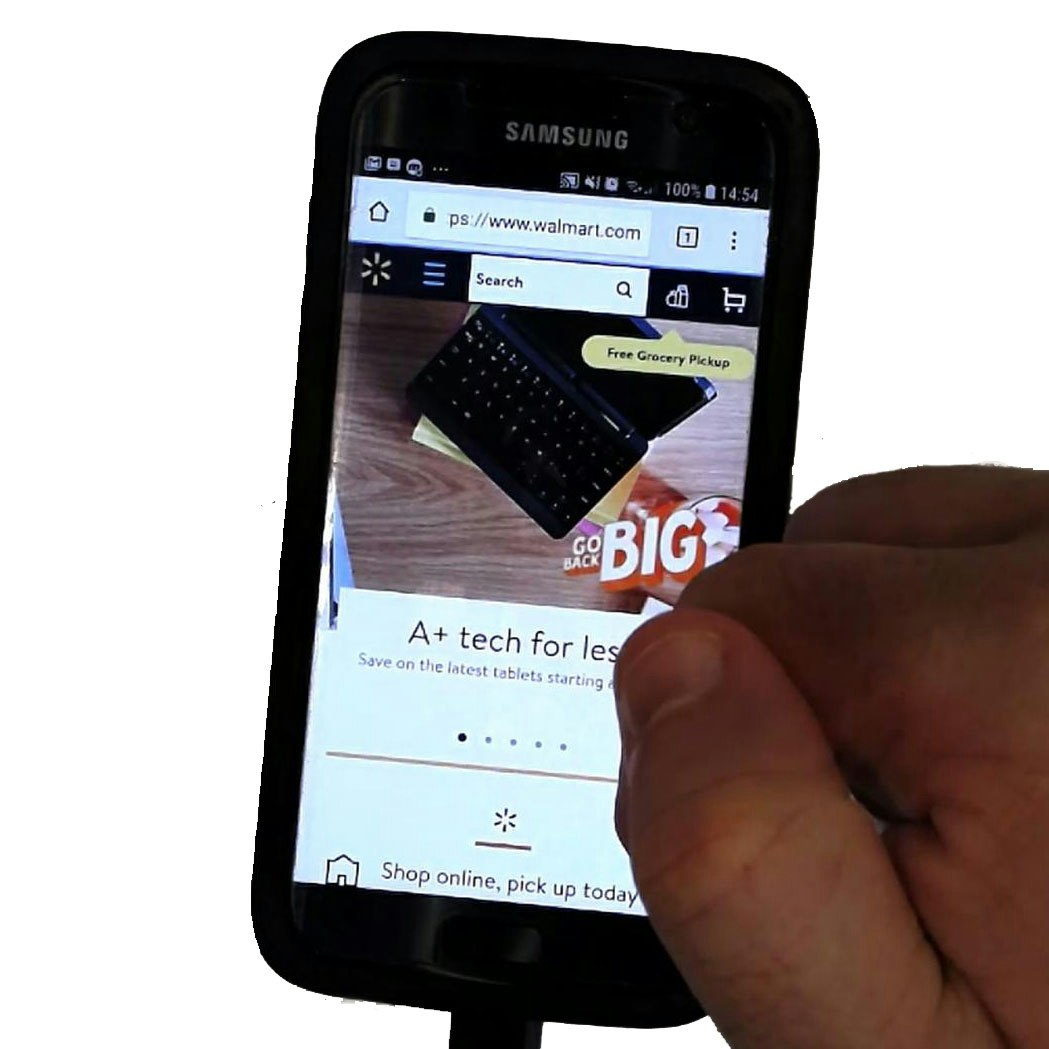
Mobile UX Trends: The Current State of Mobile UX (15 Common Pitfalls & Best Practices)

Furniture and Home Decor UX: Deprioritize “View in Room” Augmented Reality (AR) Features
Premium Research Database
Make Research-Based UX And Design Decisions
Use Baymard’s comprehensive UX research database to create “State of the Art” user experiences, and see how your UX performance stacks up.
With Baymard Premium you will get access to 650+ design guidelines and 215,000+ performance scores — insights already used by several of the world’s leading sites.
Learn More About Baymard Premium

UX Audit Service
The 40 Most Important Changes You Can Make To Your UX
A UX expert from Baymard will perform a full analysis of your site, based on our 130,000+ hours of UX research.
The 120-page audit report will outline 40 improvements for your site, document its UX performance across 500 parameters, and compare it to industry leaders and competitors.
Learn More About Our UX Audit Service

UX Training for Career Growth
100% remote & self-paced courses
Unlock the full potential of your UX team and accelerate your individual career with Baymard's UX training and certification platform. The self-paced courses are based on Baymard’s 130,000+ hours of UX research.
There’s 3 difficulty levels to match all UX backgrounds and ambitions, from the uninitiated to the UX veteran. Beyond training and certification, there’s also guest lectures from Google, Luke Wroblewski, Paul Boag, Brad Frost, etc.
Learn More About Our UX Training

What Our Clients Say
Baymard’s research is used by 17,500+ brands, agencies, researchers, and UX designers, across 80+ countries, and includes 71% of all Fortune 500 e-commerce companies.

“ Baymard produces some of the most relevant and actionable user experience research available. They really understand the needs of UX and Product Management professionals, and their deep experience in the eCommerce field allows them to offer sophisticated, nuanced insights. ”

“ Baymard has been a great resource in helping us improve the customer experience. We are continually applying these best practices to our sites. ”

“ I can not tell you how much help your benchmark studies have been for our company, e-commerce and UX teams. We have used and continue to use these reports for baseline benchmarks as we build test protocols or eye tracking scripts etc. in lab. ”

“ Thanks again for the great work on our checkout project. Our whole group found it incredibly insightful. We’re applying the suggestions you provided to our new checkout design which launches at the end of the month! One of my colleagues was also interested in your group’s competitive expertise with regard to responsive web and native apps. ”
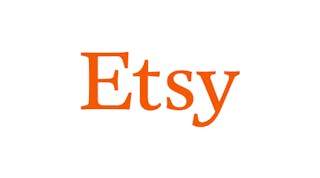
“ Thank you. This was an excellent piece of work: professional, thorough, and actionable for the team. We’re very happy with the work Baymard has done for us. ”
“ Thank you very much for the 7 usability audits of our country-specific sites. The audits have provided us with specific and actionable advice, allowed us to prioritize development resources, and enabled us to compare UX performance between the 7 different country-specific sites, and against State of the Art implementations. The audit itself is done really professionally, and the recommendations contain actionable and insightful information. ”
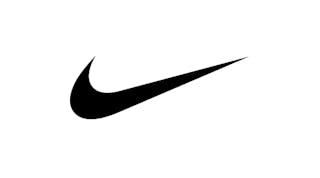
“ Intelligent, consumer-focused insights that are clear and actionable. The team in the room really loved the way the Baymard Institute highlighted the optimizations in the various user experience elements (copy, layout, design, calls-to-action…), from the perspective of consumer struggles. Baymard’s Usability research really complements our other existing research tools. ”
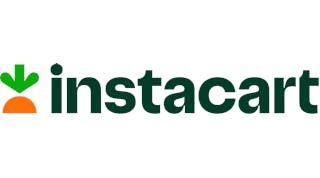
“ Thank you, this was really insightful! ”
“ We’ve received some awesome feedback from our Merchant Success team as well as our merchants about all of the UX Audits we’ve had thus far with Baymard. Thank you so much to you and your team for all of your hard work. The pilot with Baymard has been going fantastic and I’m really excited with all that we’re learning! You have an amazing platform, team and super helpful data base for us to work with. ”
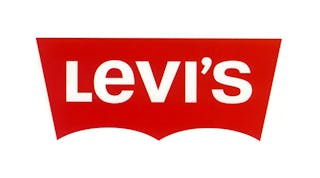
“ Having Baymard is like having access to a magical UX super power. I can't believe how helpful and easy to use it is, given the vast array of tools and information they provide! ”

“ Baymard's audit services give us a detailed view of usability improvements across our entire site. This is so much more comprehensive than running individual usability studies. ”

“ Clear, concise, actionable, data-driven insights! ”

“ I was able to bring these designed solutions home with me and kickoff multiple optimization projects that I am confident will affect the site in a positive way, both in usability and conversion. ”
“ I just wanted to take a minute to thank you for the amazing work on this audit. You should know that this has been very well received internally and there’s a lot of excitement around adopting the ideas you have shared. ”

“ Very thorough and professional UX review of our website, based on an extensive amount of previous UX research insights within the industry, and specifically targeted to our needs. We received both critical and, most importantly, constructive feedback, along with actionable, prioritized suggestions and best-practice examples. This will allow us to address the areas of improvement and significantly help ameliorate the experience users have on our website, which in turn is expected to drive conversion rates and reduce the number of customer service requests. We can highly recommend Baymard's UX audit. ”

“ Damn. The reports that the @Baymard folks do cost money, but they’re worth it. ”
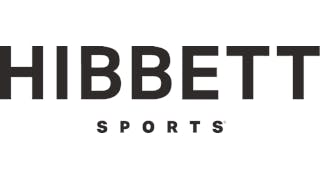
“ This has been fantastic: really good recommendations, really comprehensive. ”

“ I can confirm that the list was fully implemented. Every time we put up a change we either A/B test or we watch it very closely to determine that it’s doing better and not the opposite. So I can confirm that these fixes have improved our checkout. Thanks for everything. ”
“ Excellent tool – looking forward to using it with our other sites and prototypes as they’re developed. ”
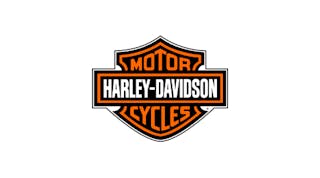
“ We found the audits extremely helpful and validated a number of changes we have been wanting to make or are in the process of making, so thank again for all the great insights. ”

“ This was indeed very helpful guidance and a very well-documented roadmap for us to fix, validate, organize, collectively understand and continually improve our ecommerce foundation. ”
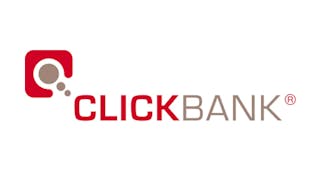
“ It is immensely valuable having a thorough, independent study to help validate my work and in particular, help facilitate buy-off from stakeholders. Baymard has quickly become one of my most trusted resources for the UX/UI field. ”

“ I found the UX audit a very comprehensive evaluation, with clear reports and actionable recommendations. Baymard's commitment to excellence in user experience shines through its thorough approach! ”
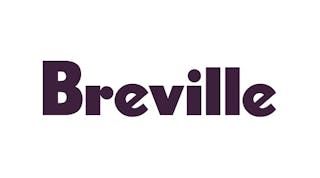
“ Thanks for everything. The audit was extremely useful, I think we have gained valuable insight. ”

“ This was…mind-blowing. We’ve been having conversations on the side as you’ve been presenting the audit findings. There’s so much to do! ”
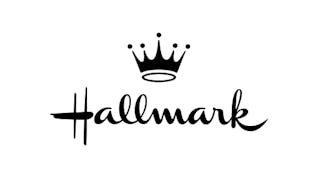
“ These reports are fabulous. The content is exactly what our team has been looking for, and so much more! Extremely helpful, thank you! ”

“ I have found the M-Commerce and E-Commerce reports very useful, thank you! ”

“ I’m an avid user of your reports and recommendations. I have leveraged your articles and findings throughout my career in B2B, B2C, and hospitality. ”
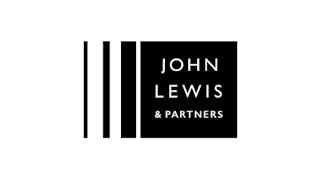
“ The Baymard team has been a delight to work with on the JohnLewis digital platform audit. They responded to the brief very well, have been very accessible for ongoing clarification and queries and Rebecca was excellent in the recent team share, articulately presenting findings in an engaging walk-through with the wider team which will really support driving engagement and a robust response. Many thanks for all the effort and focus folks. ”

“ The Baymard reports have proven to be an invaluable resource for us. Comprehensive, pragmatic and actionable. We have redesigned our checkout process and made changes to our category pages based on usability guidelines in the reports. ”
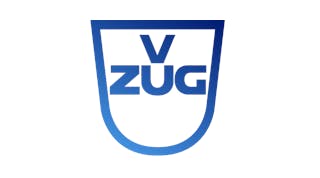
“ Thanks for this audit and your good work. This was exactly what I was aiming for. Also thanks for the very, very professional presentation, and answering all our countless questions. Very good work. ”

“ I just wanted to let you know that I think your site is the best thousand bucks I’ve ever spent. I wish I found you years ago. ”

“ First off, thank you. This was the most engrossed I’ve ever been in a 2-hour meeting. This [audit presentation] was incredibly insightful and very helpful. Many, many thanks. ”

“ We are very excited to finally proceed with the UX improvements, and I truly believe your audit report will be super helpful to put us ahead of the wave. If you ever need a reference, please do not hesitate to share my contact. ”

“ Baymard has helped so much: UX was a brand new role at my company when I was hired. I was researching, planning, and designing UX & UI for 5 different products, all by myself. After showing real-world, bottom-line results from a UX centered approach to our products, we have expanded our UX team and greatly improved our UX-to-product process. Baymard’s research database was a critical component to my (and my company’s) success. Thank you! ”

“ Wanted to thank you again for the checkout audit and walking us through the process. It was super helpful and we can’t wait to apply the changes to our checkout for a better user experience. ”
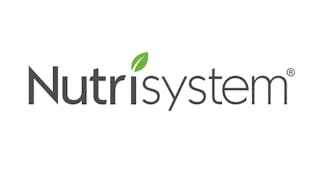
“ The recommendations in our audit were awesome - well prioritized, actionable and helped us focus on what to optimize. This audit, along with the e-Commerce Reports & Benchmark Databases, are my go-to resources for thorough, insightful information. Thank you! ”
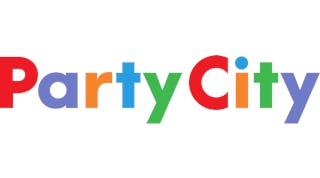
“ This is awesome so far. Everyone wants to know what's going on – you just got everyone's attention here. Everything that you've called out is definitely eye-opening for us over here. ”
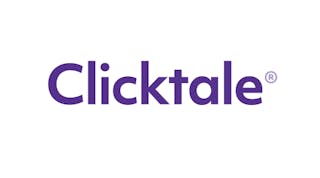
“ Some time ago we purchased the Ecommerce Homepage & Category report - the research and insights are extremely useful to us and help us a lot in our work! ”
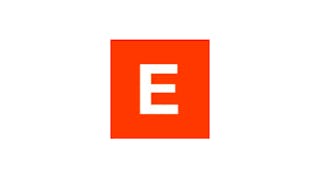
“ Given the tricky science of conversion rate optimization, it is great to know that you are dealing with professionals whose advice is based on solid research. It was a pleasure collaborating with the Baymard team. ”

“ Within a very short time Baymard Institute provided 15 clear, useful improvement suggestions for our checkout process. We intend to implement all of them. It’s easy to find companies that offer website improvement suggestions. But, most companies don’t do their homework and don’t provide specific examples of how best to make the improvements. With Baymard Institute, the checkout process suggestions they made were intuitive, specific, and actionable. I highly recommend their audit service. ”

“ This UX audit has been very helpful, not just for our design and product teams, but even for the UX research team, because we can reference back to the audit, either in the design of a user research session or when we analyze findings. Thank you very much; this has been incredibly valuable. ”
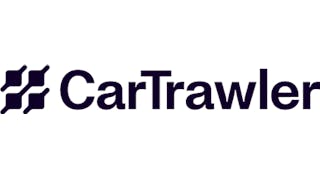
“ The Baymard UX audit has been a revelation for our organisation and will likely become a vital tool in our process moving forward. ”
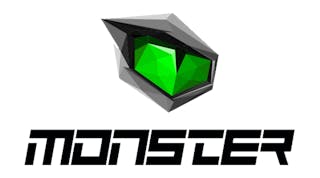
“ Working with Baymard for our UX audit was an exceptional experience from start to finish. Their attention to detail, depth of analysis, and clear communication throughout the process truly exceeded our expectations. The insights they provided were not only actionable but profoundly insightful. I highly recommend Baymard for their expertise, professionalism, and commitment to elevating user experiences. ”
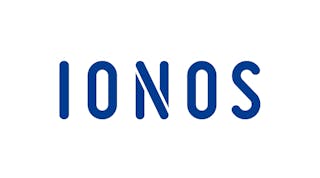
“ The audit opened our eyes once again, as we are often blind to our own operations. The comparison with competitors' best practices was particularly helpful. ”
- Victor Yocco
- Jun 5, 2024
Presenting UX Research And Design To Stakeholders: The Power Of Persuasion
- 25 min read
- UX Research , Communication , UX
- Share on Twitter , LinkedIn
About The Author
Victor Yocco, PhD, has over a decade of experience as a UX researcher and research director. He is currently affiliated with Allelo Design and is taking on … More about Victor ↬
Email Newsletter
Weekly tips on front-end & UX . Trusted by 200,000+ folks.
For UX researchers and designers, our journey doesn’t end with meticulously gathered data or well-crafted design concepts saved on our laptops or in the cloud. Our true impact lies in effectively communicating research findings and design concepts to key stakeholders and securing their buy-in for implementing our user-centered solutions. This is where persuasion and communication theory become powerful tools, empowering UX practitioners to bridge the gap between research and action .
I shared a framework for conducting UX research in my previous article on infusing communication theory and UX. In this article, I’ll focus on communication and persuasion considerations for presenting our research and design concepts to key stakeholder groups.
A Word On Persuasion: Guiding Understanding, Not Manipulation
UX professionals can strategically use persuasion techniques to turn complex research results into clear, practical recommendations that stakeholders can understand and act on. It’s crucial to remember that persuasion is about helping people understand what to do, not tricking them . When stakeholders see the value of designing with the user in mind, they become strong partners in creating products and services that truly meet user needs. We’re not trying to manipulate anyone; we’re trying to make sure our ideas get the attention they deserve in a busy world.
The Hovland-Yale Model Of Persuasion
The Hovland-Yale model, a framework for understanding how persuasion works, was developed by Carl Hovland and his team at Yale University in the 1950s. Their research was inspired by World War II propaganda, as they wanted to figure out what made some messages more convincing than others.
In the Hovland-Yale model, persuasion is understood as a process involving the Independent variables of Source, Message, and Audience . The elements of each factor then lead to the Audience having internal mediating processes around the topic, which, if independent variables are strong enough, can strengthen or change attitudes or behaviors. The interplay of the internal mediating processes leads to persuasion or not, which then leads to the observable effect of the communication (or not, if the message is ineffective). The model proposes that if these elements are carefully crafted and applied, the intended change in attitude or behavior (Effect) is more likely to be successful.
The diagram below helps identify the parts of persuasive communication. It shows what you can control as a presenter, how people think about the message and the impact it has. If done well, it can lead to change. I’ll focus exclusively on the independent variables in the far left side of the diagram in this article because, theoretically, this is what you, as the outside source creating a persuasive message, are in control of and, if done well, would lead to the appropriate mediating processes and desired observable effects.
Effective communication can reinforce currently held positions. You don’t always need to change minds when presenting research; much of what we find and present might align with currently held beliefs and support actions our stakeholders are already considering.
Over the years, researchers have explored the usefulness and limitations of this model in various contexts. I’ve provided a list of citations at the end of this article if you are interested in exploring academic literature on the Hovland-Yale model. Reflecting on some of the research findings can help shape how we create and deliver our persuasive communication. Some consistent from academia highlight that:
- Source credibility significantly influences the acceptance of a persuasive message. A high-credibility source is more persuasive than a low-credibility one.
- Messages that are logically structured, clear, and relatively concise are more likely to be persuasive.
- An audience’s attitude change is also dependent on the channel of communication. Mass media is found to be less effective in changing attitudes than face-to-face communication.
- The audience’s initial attitude, intelligence, and self-esteem have a significant role in the persuasion process. Research suggests that individuals with high intelligence are typically more resistant to persuasion efforts, and those with moderate self-esteem are easier to persuade than those with low or high self-esteem.
- The effect of persuasive messages tends to fade over time, especially if delivered by a non-credible source. This suggests a need to reinforce even effective messages on a regular basis to maintain an effect.
I’ll cover the impact of each of these bullets on UX research and design presentations in the relevant sections below.
It’s important to note that while the Hovland-Yale model provides valuable insight into persuasive communication, it remains a simplification of a complex process. Actual attitude change and decision-making can be influenced by a multitude of other factors not covered in this model, like emotional states, group dynamics, and more, necessitating a multi-faceted approach to persuasion. However, the model provides a manageable framework to strengthen the communication of UX research findings , with a focus on elements that are within the control of the researcher and product team. I’ll break down the process of presenting findings to various audiences in the following section.
Let’s move into applying the models to our work as UX practitioners with a focus on how the model applies to how we prepare and present our findings to various stakeholders. You can reference the diagram above as needed as we move through the Independent variables.
Applying The Hovland-Yale Model To Presenting Your UX Research Findings
Let’s break down the key parts of the Hovland-Yale model and see how we can use them when presenting our UX research and design ideas.
Revised: The Hovland-Yale model stresses that where a message comes from greatly affects how believable and effective it is. Research shows that a convincing source needs to be seen as dependable , informed , and trustworthy . In UX research, this source is usually the researcher(s) and other UX team members who present findings, suggest actions, lead workshops, and share design ideas. It’s crucial for the UX team to build trust with their audience, which often includes users, stakeholders, and designers.
You can demonstrate and strengthen your credibility throughout the research process and once again when presenting your findings.
How Can You Make Yourself More Credible?
You should start building your expertise and credibility before you even finish your research. Often, stakeholders will have already formed an opinion about your work before you even walk into the room. Here are a couple of ways to boost your reputation before or at the beginning of a project:
Case Studies
A well-written case study about your past work can be a great way to show stakeholders the benefits of user-centered design. Make sure your case studies match what your stakeholders care about. Don’t just tell an interesting story; tell a story that matters to them. Understand their priorities and tailor your case study to show how your UX work has helped achieve goals like higher ROI, happier customers, or lower turnover. Share these case studies as a document before the project starts so stakeholders can review them and get a positive impression of your work.
Thought Leadership
Sharing insights and expertise that your UX team has developed is another way to build credibility. This kind of “thought leadership” can establish your team as the experts in your field. It can take many forms, like blog posts, articles in industry publications, white papers, presentations, podcasts, or videos. You can share this content on your website, social media, or directly with stakeholders.
For example, if you’re about to start a project on gathering customer feedback, share any relevant articles or guides your team has created with your stakeholders before the project kickoff. If you are about to start developing a voice of the customer program and you happen to have Victor or Dana on your team, share their article on creating a VoC to your group of stakeholders prior to the kickoff meeting. [Shameless self-promotion and a big smile emoji].
You can also build credibility and trust while discussing your research and design, both during the project and when you present your final results.
Business Goals Alignment
To really connect with stakeholders, make sure your UX goals and the company’s business goals work together. Always tie your research findings and design ideas back to the bigger picture. This means showing how your work can affect things like customer happiness, more sales, lower costs, or other important business measures. You can even work with stakeholders to figure out which measures matter most to them. When you present your designs, point out how they’ll help the company reach its goals through good UX.
Industry Benchmarks
These days, it’s easier to find data on how other companies in your industry are doing. Use this to your advantage! Compare your findings to these benchmarks or even to your competitors. This can help stakeholders feel more confident in your work. Show them how your research fits in with industry trends or how it uncovers new ways to stand out. When you talk about your designs, highlight how you’ve used industry best practices or made changes based on what you’ve learned from users.
Methodological Transparency
Be open and honest about how you did your research. This shows you know what you’re doing and that you can be trusted. For example, if you were looking into why fewer people are renewing their subscriptions to a fitness app, explain how you planned your research, who you talked to, how you analyzed the data, and any challenges you faced. This transparency helps people accept your research results and builds trust.
Increasing Credibility Through Design Concepts
Here are some specific ways to make your design concepts more believable and trustworthy to stakeholders:
Ground Yourself in Research. You’ve done the research, so use it! Make sure your design decisions are based on your findings and user data. When you present, highlight the data that supports your choices.
Go Beyond Mockups. It’s helpful for stakeholders to see your designs in action. Static mockups are a good start, but try creating interactive prototypes that show how users will move through and use your design. This is especially important if you’re creating something new that stakeholders might have trouble visualizing.
User Quotes and Testimonials. Include quotes or stories from users in your presentation. This makes the process more personal and shows that you’re focused on user needs. You can use these quotes to explain specific design choices.
Before & After Impact. Use visuals or user journey maps to show how your design solution improves the user experience. If you’ve mapped out the current user journey or documented existing problems, show how your new design fixes those problems. Don’t leave stakeholders guessing about your design choices. Briefly explain why you made key decisions and how they help users or achieve business goals. You should have research and stakeholder input to back up your decisions.
Show Your Process. When presenting a more developed concept, show the work that led up to it. Don’t just share the final product. Include early sketches, wireframes, or simple prototypes to show how the design evolved and the reasoning behind your choices. This is especially helpful for executives or stakeholders who haven’t been involved in the whole process.
Be Open to Feedback and Iteration. Work together with stakeholders. Show that you’re open to their feedback and explain how their input can help you improve your designs.
Much of what I’ve covered above are also general best practices for presenting. Remember, these are just suggestions. You don’t have to use every single one to make your presentations more persuasive. Try different things, see what works best for you and your stakeholders, and have fun with it! The goal is to build trust and credibility with your UX team.
The Hovland-Yale model, along with most other communication models, suggests that what you communicate is just as important as how you communicate it. In UX research, your message is usually your insights, data analysis, findings, and recommendations.
I’ve touched on this in the previous section because it’s hard to separate the source (who’s talking) from the message (what they’re saying). For example, building trust involves being transparent about your research methods, which is part of your message. So, some of what I’m about to say might sound familiar.
For this article, let’s define the message as your research findings and everything that goes with them (e.g., what you say in your presentation, the slides you use, other media), as well as your design concepts (how you show your design solutions, including drawings, wireframes, prototypes, and so on).
The Hovland-Yale model says it’s important to make your message easy to understand , relevant , and impactful . For example, instead of just saying,
“30% of users found the signup process difficult.”
you could say,
“30% of users struggled to sign up because the process was too complicated. This could lead to fewer renewals. Making the signup process easier could increase renewals and improve the overall experience.”
Storytelling is also a powerful way to get your message across. Weaving your findings into a narrative helps people connect with your data on a human level and remember your key points. Using real quotes or stories from users makes your presentation even more compelling.
Here are some other tips for delivering a persuasive message:
- Practice Makes Perfect Rehearse your presentation. This will help you smooth out any rough spots, anticipate questions, and feel more confident.
- Anticipate Concerns Think about any objections stakeholders might have and be ready to address them with data.
- Welcome Feedback Encourage open discussion during your presentation. Listen to what stakeholders have to say and show that you’re willing to adapt your recommendations based on their concerns. This builds trust and makes everyone feel like they’re part of the process.
- Follow Through is Key After your presentation, send a clear summary of the main points and action items. This shows you’re professional and makes it easy for stakeholders to refer back to your findings.
When presenting design concepts, it’s important to tell , not just show, what you’re proposing. Stakeholders might not have a deep understanding of UX, so just showing them screenshots might not be enough. Use user stories to walk them through the redesigned experience. This helps them understand how users will interact with your design and what benefits it will bring. Static screens show the “what,” but user stories reveal the “why” and “how.” By focusing on the user journey, you can demonstrate how your design solves problems and improves the overall experience.
For example, if you’re suggesting changes to the search bar and adding tooltips, you could say:
“Imagine a user lands on the homepage and sees the new, larger search bar. They enter their search term and get results. If they see an unfamiliar tool or a new action, they can hover over it to see a brief description.”
Here are some other ways to make your design concepts clearer and more persuasive:
- Clear Design Language Use a consistent and visually appealing design language in your mockups and prototypes. This shows professionalism and attention to detail.
- Accessibility Best Practices Make sure your design is accessible to everyone. This shows that you care about inclusivity and user-centered design.
One final note on the message is that research has found the likelihood of an audience’s attitude change is also dependent on the channel of communication . Mass media is found to be less effective in changing attitudes than face-to-face communication. Distributed teams and remote employees can employ several strategies to compensate for any potential impact reduction of asynchronous communication:
- Interactive Elements Incorporate interactive elements into presentations, such as polls, quizzes, or clickable prototypes. This can increase engagement and make the experience more dynamic for remote viewers.
- Video Summaries Create short video summaries of key findings and recommendations. This adds a personal touch and can help convey nuances that might be lost in text or static slides.
- Virtual Q&A Sessions Schedule dedicated virtual Q&A sessions where stakeholders can ask questions and engage in discussions. This allows for real-time interaction and clarification, mimicking the benefits of face-to-face communication.
- Follow-up Communication Actively follow up with stakeholders after they’ve reviewed the materials. Offer to discuss the content, answer questions, and gather feedback. This demonstrates a commitment to communication and can help solidify key takeaways.
Framing Your Message for Maximum Impact
The way you frame an issue can greatly influence how stakeholders see it. Framing is a persuasion technique that can help your message resonate more deeply with specific stakeholders. Essentially, you want to frame your message in a way that aligns with your stakeholders’ attitudes and values and presents your solution as the next logical step. There are many resources on how to frame messages, as this technique has been used often in public safety and public health research to encourage behavior change. This article discusses applying framing techniques for digital design.
You can also frame issues in a way that motivates your stakeholders. For example, instead of calling usability issues “problems,” I like to call them “opportunities.” This emphasizes the potential for improvement. Let’s say your research on a hospital website finds that the appointment booking process is confusing. You could frame this as an opportunity to improve patient satisfaction and maybe even reduce call center volume by creating a simpler online booking system. This way, your solution is a win-win for both patients and the hospital. Highlighting the positive outcomes of your proposed changes and using language that focuses on business benefits and user satisfaction can make a big difference.
Understanding your audience’s goals is essential before embarking on any research or design project. It serves as the foundation for tailoring content, supporting decision-making processes, ensuring clarity and focus, enhancing communication effectiveness, and establishing metrics for evaluation.
One specific aspect to consider is securing buy-in from the product and delivery teams prior to beginning any research or design. Without their investment in the outcomes and input on the process, it can be challenging to find stakeholders who see value in a project you created in a vacuum. Engaging with these teams early on helps align expectations, foster collaboration, and ensure that the research and design efforts are informed by the organization’s objectives.
Once you’ve identified your key stakeholders and secured buy-in, you should then Map the Decision-Making Process or understand the decision-making process your audience goes through, including the pain points, considerations, and influencing factors.
- How are decisions made, and who makes them?
- Is it group consensus?
- Are there key voices that overrule all others?
- Is there even a decision to be made in regard to the work you will do?
Understanding the decision-making process will enable you to provide the necessary information and support at each stage.
Finally, prior to engaging in any work, set clear objectives with your key stakeholders . Your UX team needs to collaborate with the product and delivery teams to establish clear objectives for the research or design project. These objectives should align with the organization’s goals and the audience’s needs.
By understanding your audience’s goals and involving the product and delivery teams from the outset, you can create research and design outcomes that are relevant, impactful, and aligned with the organization’s objectives.
As the source of your message, it’s your job to understand who you’re talking to and how they see the issue. Different stakeholders have different interests, goals, and levels of knowledge. It’s important to tailor your communication to each of these perspectives. Adjust your language, what you emphasize, and the complexity of your message to suit your audience. Technical jargon might be fine for technical stakeholders, but it could alienate those without a technical background.
Audience Characteristics: Know Your Stakeholders
Remember, your audience’s existing opinions, intelligence, and self-esteem play a big role in how persuasive you can be. Research suggests that people with higher intelligence tend to be more resistant to persuasion, while those with moderate self-esteem are easier to persuade than those with very low or very high self-esteem. Understanding your audience is key to giving a persuasive presentation of your UX research and design concepts. Tailoring your communication to address the specific concerns and interests of your stakeholders can significantly increase the impact of your findings.
To truly know your audience, you need information about who you’ll be presenting to, and the more you know, the better. At the very least, you should identify the different groups of stakeholders in your audience. This could include designers, developers, product managers, and executives. If possible, try to learn more about your key stakeholders. You could interview them at the beginning of your process, or you could give them a short survey to gauge their attitudes and behaviors toward the area your UX team is exploring.
Then, your UX team needs to decide the following:
- How can you best keep all stakeholders engaged and informed as the project unfolds?
- How will your presentation or concepts appeal to different interests and roles?
- How can you best encourage discussion and decision-making with the different stakeholders present?
- Should you hold separate presentations because of the wide range of stakeholders you need to share your findings with?
- How will you prioritize information?
Your answers to the previous questions will help you focus on what matters most to each stakeholder group. For example, designers might be more interested in usability issues, while executives might care more about the business impact. If you’re presenting to a mixed audience, include a mix of information and be ready to highlight what’s relevant to each group in a way that grabs their attention. Adapt your communication style to match each group’s preferences. Provide technical details for developers and emphasize user experience benefits for executives.
Let’s say you did UX research for a mobile banking app, and your audience includes designers, developers, and product managers.
- Focus on: Design-related findings like what users prefer in the interface, navigation problems, and suggestions for the visual design.
- How to communicate: Use visuals like heatmaps and user journey maps to show design challenges. Talk about how fixing these issues can make the overall user experience better.
Developers:
- Focus on: Technical stuff, like performance problems, bugs, or challenges with building the app.
- How to communicate: Share code snippets or technical details about the problems you found. Discuss possible solutions that the developers can actually build. Be realistic about how much work it will take and be ready to talk about a “minimum viable product” (MVP).
Product Managers:
- Focus on: Findings that affect how users engage with the app, how long they keep using it, and the overall business goals.
- How to communicate: Use numbers and data to show how UX improvements can help the business. Explain how the research and your ideas fit into the product roadmap and long-term strategy.
By tailoring your presentation to each group, you make sure your message really hits home. This makes it more likely that they’ll support your UX research findings and work together to make decisions. “
The Effect (Impact)
The end goal of presenting your findings and design concepts is to get key stakeholders to take action based on what you learned from users. Make sure the impact of your research is crystal clear. Talk about how your findings relate to business goals, customer happiness, and market success (if those are relevant to your product). Suggest clear, actionable next steps in the form of design concepts and encourage feedback and collaboration from stakeholders . This builds excitement and gets people invested. Make sure to answer any questions and ask for more feedback to show that you value their input. Remember, stakeholders play a big role in the product’s future, so getting them involved increases the value of your research.
The Call to Action (CTA)
Your audience needs to know what you want them to do. End your presentation with a strong call to action (CTA). But to do this well, you need to be clear on what you want them to do and understand any limitations they might have.
For example, if you’re presenting to the CEO, tailor your CTA to their priorities. Focus on the return on investment (ROI) of user-centered design. Show how your recommendations can increase sales, improve customer satisfaction, or give the company a competitive edge. Use clear visuals and explain how user needs translate into business benefits. End with a strong, action-oriented statement, like
“Let’s set up a meeting to discuss how we can implement these user-centered design recommendations to reach your strategic goals.”
If you’re presenting to product managers and business unit leaders, focus on the business goals they care about, like increasing revenue or reducing customer churn. Explain your research findings in terms of ROI. For example, a strong CTA could be:
“Let’s try out the redesigned checkout process and aim for a 10% increase in conversion rates next quarter.”
Remember, the effects of persuasive messages can fade over time , especially if the source isn’t seen as credible. This means you need to keep reinforcing your message to maintain its impact.
Understanding Limitations and Addressing Concerns
Persuasion is about guiding understanding, not tricking people. Be upfront about any limitations your audience might have , like budget constraints or limited development resources. Anticipate their concerns and address them in your CTA. For example, you could say,
“I know implementing the entire redesign might need more resources, so let’s prioritize the high-impact changes we found in our research to improve the checkout process within our current budget.”
By considering both your desired outcome and your audience’s perspective, you can create a clear, compelling, and actionable CTA that resonates with stakeholders and drives user-centered design decisions.
Finally, remember that presenting your research findings and design concepts isn’t the end of the road . The effects of persuasive messages can fade over time. Your team should keep looking for ways to reinforce key messages and decisions as you move forward with implementing solutions. Keep your presentations and concepts in a shared folder, remind people of the reasoning behind decisions, and be flexible if there are multiple ways to achieve the desired outcome. Showing how you’ve addressed stakeholder goals and concerns in your solution will go a long way in maintaining credibility and trust for future projects.
A Tool to Track Your Alignment to the Hovland-Yale Model
You and your UX team are likely already incorporating elements of persuasion into your work. It might be helpful to track how you are doing this to reflect on what works, what doesn’t, and where there are gaps. I’ve provided a spreadsheet in Figure 3 below for you to modify and use as you might see fit. I’ve included sample data to provide an example of what type of information you might want to record. You can set up the structure of a spreadsheet like this as you think about kicking off your next project, or you can fill it in with information from a recently completed project and reflect on what you can incorporate more in the future.
Please use the spreadsheet below as a suggestion and make additions, deletions, or changes as best suited to meet your needs. You don’t need to be dogmatic in adhering to what I’ve covered here. Experiment, find what works best for you, and have fun.
| Project Phase | Persuasion Element | Topic | Description | Example | Notes/ Reflection |
|---|---|---|---|---|---|
| Pre-Presentation | Audience | Stakeholder Group | Identify the specific audience segment (e.g., executives, product managers, marketing team) | Executives | |
| Message | Message Objectives | What specific goals do you aim to achieve with each group? (e.g., garner funding, secure buy-in for specific features) | Secure funding for continued app redesign | ||
| Source | Source Credibility | How will you establish your expertise and trustworthiness to each group? (e.g., past projects, relevant data) | Highlighted successful previous UX research projects & strong user data analysis skills | ||
| Message | Message Clarity & Relevance | Tailor your presentation language and content to resonate with each audience’s interests and knowledge level | Presented a concise summary of key findings with a focus on potential ROI and revenue growth for executives | ||
| Presentation & Feedback | Source | Attention Techniques | How did you grab each group’s interest? (e.g., visuals, personal anecdotes, surprising data) | Opened presentation with a dramatic statistic about mobile banking app usage | |
| Message | Comprehension Strategies | Did you ensure understanding of key information? (e.g., analogies, visuals, Q&A) | Used relatable real-world examples and interactive charts to explain user research findings | ||
| Message | Emotional Appeals | Did you evoke relevant emotions to motivate action? (e.g., fear of missing out, excitement for potential) | Highlighted potential revenue growth and improved customer satisfaction with app redesign | ||
| Message | Retention & Application | What steps did you take to solidify key takeaways and encourage action? (e.g., clear call to action, follow-up materials) | Ended with a concise call to action for funding approval and provided detailed research reports for further reference | ||
| Audience | Stakeholder Feedback | Record their reactions, questions, and feedback during and after the presentation | Executives impressed with user insights, product managers requested specific data breakdowns | ||
| Analysis & Reflection | Effect | Effective Strategies & Outcomes | Identify techniques that worked well and their impact on each group | Executives responded well to the emphasis on business impact, leading to conditional funding approval | |
| Feedback | Improvements for Future Presentations | Note areas for improvement in tailoring messages and engaging each stakeholder group | Consider incorporating more interactive elements for product managers and diversifying data visualizations for wider appeal | ||
| Analysis | Quantitative Metrics | Track changes in stakeholder attitudes | Conducted a follow-up survey to measure stakeholder agreement with design recommendations before and after the presentation | Assess effectiveness of the presentation |
Figure 3: Example of spreadsheet categories to track the application of the Hovland-Yale model to your presentation of UX Research findings.
Foundational Works
- Hovland, C. I., Janis, I. L., & Kelley, H. H. (1953). Communication and persuasion. New Haven, CT: Yale University Press. (The cornerstone text on the Hovland-Yale model).
- Weiner, B. J., & Hovland, C. I. (1956). Participating vs. nonparticipating persuasive presentations: A further study of the effects of audience participation. Journal of Abnormal and Social Psychology, 52(2), 105-110. (Examines the impact of audience participation in persuasive communication).
- Kelley, H. H., & Hovland, C. I. (1958). The communication of persuasive content. Psychological Review, 65(4), 314-320. (Delves into the communication of persuasive messages and their effects).
Contemporary Applications
- Pfau, M., & Dalton, M. J. (2008). The persuasive effects of fear appeals and positive emotion appeals on risky sexual behavior intentions. Journal of Communication, 58(2), 244-265. (Applies the Hovland-Yale model to study the effectiveness of fear appeals).
- Chen, G., & Sun, J. (2010). The effects of source credibility and message framing on consumer online health information seeking. Journal of Interactive Advertising, 10(2), 75-88. (Analyzes the impact of source credibility and message framing, concepts within the model, on health information seeking).
- Hornik, R., & McHale, J. L. (2009). The persuasive effects of emotional appeals: A meta-analysis of research on advertising emotions and consumer behavior. Journal of Consumer Psychology, 19(3), 394-403. (Analyzes the role of emotions in persuasion, a key aspect of the model, in advertising).
Smashing Newsletter
Tips on front-end & UX, delivered weekly in your inbox. Just the things you can actually use.
Front-End & UX Workshops, Online
With practical takeaways, live sessions, video recordings and a friendly Q&A.
TypeScript in 50 Lessons
Everything TypeScript, with code walkthroughs and examples. And other printed books.
Integrations
What's new?
Prototype Testing
Live Website Testing
Feedback Surveys
Interview Studies
Card Sorting
Tree Testing
In-Product Prompts
Participant Management
Automated Reports
Templates Gallery
Choose from our library of pre-built mazes to copy, customize, and share with your own users
Browse all templates
Financial Services
Tech & Software
Product Designers
Product Managers
User Researchers
By use case
Concept & Idea Validation
Wireframe & Usability Test
Content & Copy Testing
Feedback & Satisfaction
Content Hub
Educational resources for product, research and design teams
Explore all resources
Question Bank
Research Maturity Model
Guides & Reports
Help Center
Future of User Research Report
The Optimal Path Podcast
Maze Guides | Resources Hub
What is UX Research: The Ultimate Guide for UX Researchers
0% complete
Essential elements of an effective UX research plan (examples + templates)
Conducting UX research without a plan is like moving to another country without knowing the language—confusing and exhausting.
To avoid wasting time and resources, it’s crucial to set achievable research goals and work on developing a research plan that’s clear, comprehensive, and aligned with your overarching business goals and research strategy.
A good UX research plan sets out the parameters for your research, and guides how you’ll gather insights to inform product development. In this chapter, we share a step-by-step guide to creating a research plan, including templates and tactics for you to try. You’ll also find expert tips from Paige Bennett, Senior User Research Manager at Affirm, and Sinéad Davis Cochrane, Research Manager at Workday.
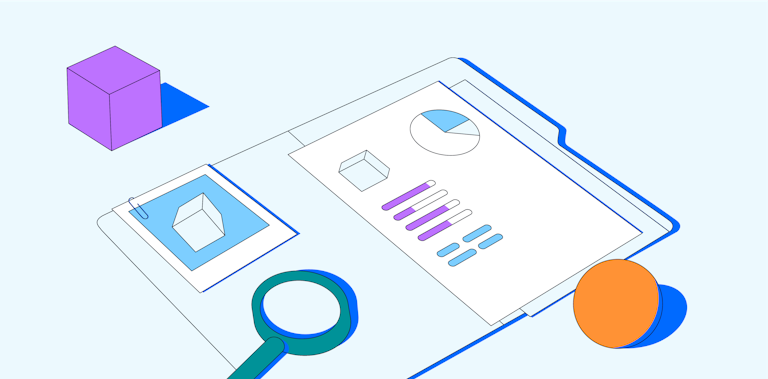
What is a UX research plan?
A UX research plan—not to be confused with a UX research strategy or research design—is a plan to guide individual user experience (UX) research projects.
It's a living document that includes a detailed explanation of tactics, methods, timeline, scope, and task owners. It should be co-created and shared with key stakeholders, so everyone is familiar with the project plan, and product teams can meet strategic goals.
A UX research plan is different to a research strategy and research design in both its purpose and contents. Let’s take a look.
Research plan vs. research design vs. research strategy: What’s the difference?
While your UX research plan should be based on strategy, it’s not the same thing. Your UX strategy is a high-level document that contains goals, budget, vision, and expectations. Meanwhile, a plan is a detailed document explaining how the team will achieve those strategic goals. Research design is the form your research itself takes.
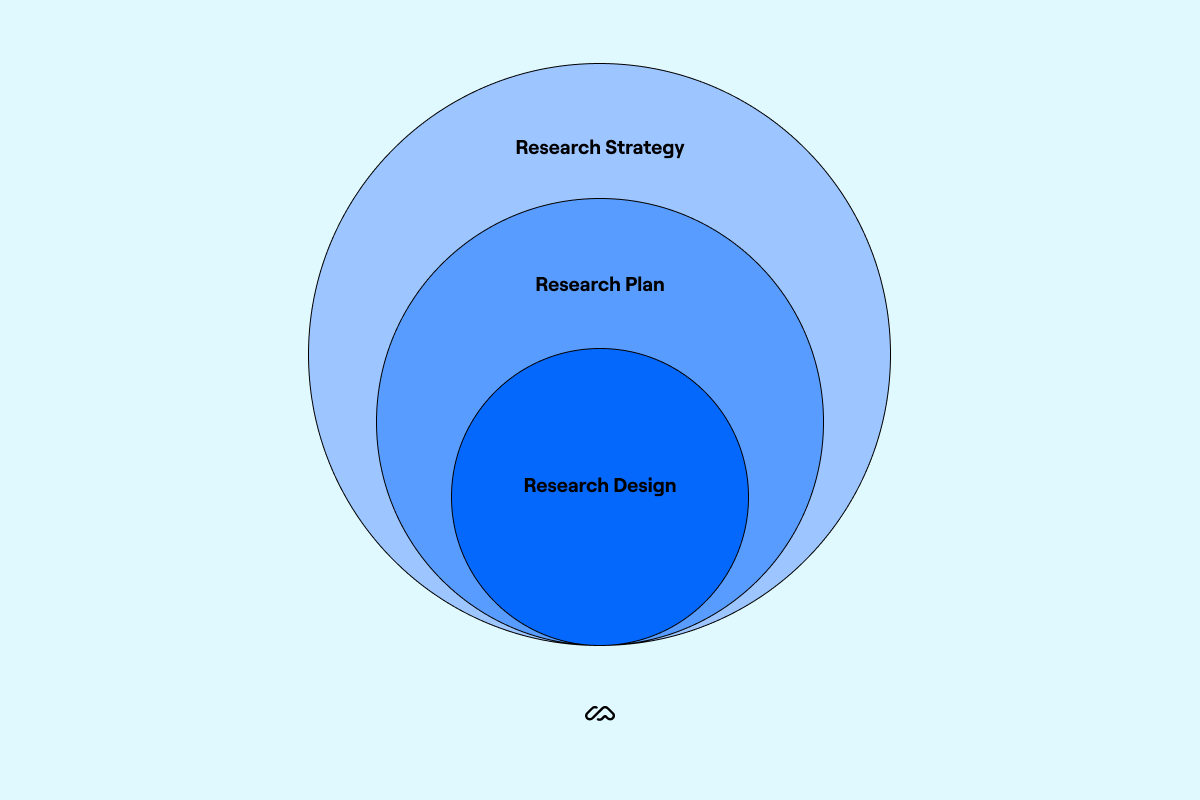
In short, a strategy is a guide, a plan is what drives action, and design is the action itself.
Research design | to be employed and specifics on how they’ll be used in the study (e.g., qualitative interviews, quantitative surveys, experimental trials) that will assist in data collection (sampling size) and how they will be selected | |
|---|---|---|
Research plan | or goals of the research that will be used to gather and analyze data of the project (like budget and personnel) required | |
Research strategy |
What are the benefits of using a UX research plan?
Conducting research without goals and parameters is aimless. A UX research plan is beneficial for your product, user, and business—by building a plan for conducting UX research, you can:
Streamline processes and add structure
Work toward specific, measurable goals, align and engage stakeholders, save time by avoiding rework.
The structure of a research plan allows you to set timelines, expectations, and task owners, so everyone on your team is aligned and empowered to make decisions. Since there’s no second guessing what to do next or which methods to use, you’ll find your process becomes simpler and more efficient. It’s also worth standardizing your process to turn your plan into a template that you can reuse for future projects.
When you set research goals based on strategy, you’ll find it easier to track your team’s progress and keep the project in scope, on time, and on budget. With a solid, strategy-based UX research plan you can also track metrics at different stages of the project and adjust future tactics to get better research findings.
“It’s important to make sure your stakeholders are on the same page with regards to scope, timeline, and goals before you start," explains Paige Bennett, Senior User Research Manager at Affirm. That's because, when stakeholders are aligned, they're much more likely to sign off on product changes that result from UX research.
A written plan is a collaborative way to involve stakeholders in your research and turn them into active participants rather than passive observers. As they get involved, they'll make useful contributions and get a better understanding of your goals.
A UX research plan helps you save time and money quite simply because it’s easier and less expensive to make design or prototype changes than it is to fix usability issues once the product is coded or fully launched. Additionally, having a plan gives your team direction, which means they won’t be conducting research and talking to users without motive, and you’ll be making better use of your resources. What’s more, when everyone is aligned on goals, they’re empowered to make informed decisions instead of waiting for their managers’ approval.
What should a UX research plan include?
In French cuisine, the concept of mise en place—putting in place—allows chefs to plan and set up their workspace with all the required ingredients before cooking. Think of your research plan like this—laying out the key steps you need to go through during research, to help you run a successful and more efficient study.
Here’s what you should include in a UX research plan:
- A brief reminder of the strategy and goals
- An outline of the research objectives
- The purpose of the plan and studies
- A short description of the target audience, sample size, scope, and demographics
- A detailed list of expectations including deliverables, timings, and type of results
- An overview of the test methods and a short explanation of why you chose them
- The test set up or guidelines to outline everything that needs to happen before the study: scenarios, screening questions, and duration of pilot tests
- Your test scripts, questions to ask, or samples to follow
- When and how you’ll present the results
- Cost estimations or requests to go over budget
Collect all UX research findings in one place
Use Maze to run quantitative and qualitative research, influence product design, and shape user-centered products.

How to create a UX research plan
Now we’ve talked through why you need a research plan, let’s get into the how. Here’s a short step-by-step guide on how to write a research plan that will drive results.
- Define the problem statement
- Get stakeholders’ buy-in
- Identify your objectives
- Choose the right research method
- Recruit participants
- Prepare the brief
- Establish the timeline
- Decide how you’ll present your findings
1. Define the problem statement
One of the most important purposes of a research plan is to identify what you’re trying to achieve with the research, and clarify the problem statement. For Paige Bennett , Senior User Research Manager at Affirm, this process begins by sitting together with stakeholders and looking at the problem space.
“We do an exercise called FOG, which stands for ‘Fact, Observation, Guess’, to identify large gaps in knowledge,” says Paige. “Evaluating what you know illuminates questions you still have, which then serves as the foundation of the UX research project.”
You can use different techniques to identify the problem statement, such as stakeholder interviews, team sessions, or analysis of customer feedback. The problem statement should explain what the project is about—helping to define the research scope with clear deliverables and objectives.
2. Identify your objectives
Research objectives need to align with the UX strategy and broader business goals, but you also need to define specific targets to achieve within the research itself—whether that’s understanding a specific problem, or measuring usability metrics . So, before you get into a room with your users and customers, “Think about the research objectives: what you’re doing, why you’re doing it, and what you expect from the UX research process ,” explains Sinéad Davis Cochrane , Research Manager at Workday.
Examples of research objectives might be:
- Learn at what times users interact with your product
- Understand why users return (or not) to your website/app
- Discover what competitor products your users are using
- Uncover any pain points or challenges users find when navigating with your product
- Gauge user interest in and prioritize potential new features
A valuable purpose of setting objectives is ensuring your project doesn't suffer from scope creep. This can happen when stakeholders see your research as an opportunity to ask any question. As a researcher , Sinéad believes your objectives can guide the type of research questions you ask and give your research more focus. Otherwise, anything and everything becomes a research question—which will confuse your findings and be overwhelming to manage.
Sinéad shares a list of questions you should ask yourself and the research team to help set objectives:
- What are you going to do with this information?
- What decisions is it going to inform?
- How are you going to leverage these insights?
Another useful exercise to help identify research objectives is by asking questions that help you get to the core of a problem. Ask these types of questions before starting the planning process:
- Who are the users you’re designing this for?
- What problems and needs do they have?
- What are the pain points of using the product?
- Why are they not using a product like yours?
3. Get stakeholders buy-in
It’s good practice to involve stakeholders at early stages of plan creation to get everyone on board. Sharing your UX research plan with relevant stakeholders means you can gather context, adjust based on comments, and gauge what’s truly important to them. When you present the research plan to key stakeholders, remember to align on the scope of research, and how and when you’ll get back to them with results.
Stakeholders usually have a unique vision of the product, and it’s crucial that you’re able to capture it early on—this doesn’t mean saying yes to everything, but listening to their ideas and having a conversation. Seeing the UX research plan as a living document makes it much easier to edit based on team comments. Plus, the more you listen to other ideas, the easier it will be to evangelize research and get stakeholder buy-in by helping them see the value behind it.
I expect my stakeholders to be participants, and I outline how I expect that to happen. That includes observing interviews, participating in synthesis exercises, or co-presenting research recommendations.

Paige Bennett , Senior User Research Manager at Affirm
4. Choose the right research method

Choose between the different UX research methods to capture different insights from users.
To define the research methods you’ll use, circle back to your research objectives, what stage of the product development process you’re in, and the constraints, resources, and timeline of the project. It’s good research practice to use a mix of different methods to get a more complete perspective of users’ struggles.
For example, if you’re at the start of the design process, a generative research method such as user interviews or field studies will help you generate new insights about the target audience. Or, if you need to evaluate how a new design performs with users, you can run usability tests to get actionable feedback.
It’s also good practice to mix methods that drive quantitative and qualitative results so you can understand context, and catch the user sentiment behind a metric. For instance, if during a remote usability test, you hear a user go ‘Ugh! Where’s the sign up button?’ you’ll get a broader perspective than if you were just reviewing the number of clicks on the same test task.
Examples of UX research methods to consider include:
- Five-second testing
- User interviews
- Field studies
- Card sorting
- Tree testing
- Focus groups
- Usability testing
- Diary studies
- Live website testing
Check out our top UX research templates . Use them as a shortcut to get started on your research.
5. Determine how to recruit participants
Every research plan should include information about the participants you need for your study, and how you’ll recruit them. To identify your perfect candidate, revisit your goals and the questions that need answering, then build a target user persona including key demographics and use cases. Consider the resources you have available already, by asking yourself:
- Do you have a user base you can tap into to collect customer insights ?
- Do you need to hire external participants?
- What’s your budget to recruit users?
- How many users do you need to interact with?
When selecting participants, make sure they represent all your target personas. If different types of people will be using a certain product, you need to make sure that the people you research represent these personas. This means not just being inclusive in your recruitment, but considering secondary personas—the people who may not be your target user base, but interact with your product incidentally.
You should also consider recruiting research participants to test the product on different devices. Paige explains: “If prior research has shown that behavior differs greatly between those who use a product on their phone versus their tablet, I need to better understand those differences—so I’m going to make sure my participants include people who have used a product on both devices.”
During this step, make sure to include information about the required number of participants, how you’ll get them to participate, and how much time you need per user. The main ways to recruit testers are:
- Using an online participant recruitment tool like Maze Panel
- Putting out physical or digital adverts in spaces that are relevant to your product and user
- Reaching out to existing users
- Using participants from previous research
- Recruiting directly from your website or app with a tool like In-Product Prompts
5.1. Determine how you’ll pay them
You should always reward your test participants for their time and insights. Not only because it’s the right thing to do, but also because if they have an incentive they’re more likely to give you complete and insightful answers. If you’re hosting the studies in person, you’ll also need to cover your participants' travel expenses and secure a research space. Running remote moderated or unmoderated research is often considered to be less expensive and faster to complete.
If you’re testing an international audience, remember to check your proposed payment system works worldwide—this might be an Amazon gift card or prepaid Visa cards.
6. Prepare the brief
The next component of a research plan is to create a brief or guide for your research sessions. The kind of brief you need will vary depending on your research method, but for moderated methods like user interviews, field studies, or focus groups, you’ll need a detailed guide and script. The brief is there to remind you which questions to ask and keep the sessions on track.
Your script should cover:
- Introduction: A short message you’ll say to participants before the session begins. This works as a starting point for conversations and helps set the tone for the meeting. If you’re testing without a moderator, you should also include an introductory message to explain what the research is about and the type of answers they should give (in terms of length and specificity).
- Interview questions: Include your list of questions you’ll ask participants during the sessions. These could be examples to help guide the interviews, specific pre-planned questions, or test tasks you’ll ask participants to perform during unmoderated sessions.
- Outro message: Outline what you'll say at the end of the session, including the next steps, asking participants if they are open to future research, and thanking them for their time. This can be a form you share at the end of asynchronous sessions.
It’s crucial you remember to ask participants for their consent. You should do this at the beginning of the test by asking if they’re okay with you recording the session. Use this space to lay out any compensation agreements as well. Then, ask again at the end of the session if they agree with you keeping the results and using the data for research purposes. If possible, explain exactly what you’ll do with their data. Double check and get your legal team’s sign-off on these forms.
7. Establish the timeline
Next in your plan, estimate how long the research project will take and when you should expect to review the findings. Even if not exact, determining an approximate timeline (e.g., two-three weeks) will enable you to manage stakeholders’ expectations of the process and results.
Many people believe UX research is a lengthy process, so they skip it. When you set up a timeline and get stakeholders aligned with it, you can debunk assumptions and put stakeholders’ minds at ease. Plus, if you’re using a product discovery tool like Maze, you can get answers to your tests within days.
8. Decide how you’ll present your findings
When it comes to sharing your findings with your team, presentation matters. You need to make a clear presentation and demonstrate how user insights will influence design and development. If you’ve conducted UX research in the past, share data that proves how implementing user insights has improved product adoption.
Examples of ways you can present your results include:
- A physical or digital PDF report with key statistics and takeaways
- An interactive online report of the individual research questions and their results
- A presentation explaining the results and your findings
- A digital whiteboard, like Miro, to display the results
In your plan, mention how you’ll share insights with the product team. For example, if you’re using Maze, you can start by emailing everyone the ready-to-share report and setting up a meeting with the team to identify how to bring those insights to life. This is key, because your research should be the guiding light for new products or updates, if you want to keep development user-centric. Taking care over how you present your findings will impact whether they’re taken seriously and implemented by other stakeholders.
Your UX research plan template: Free template + example
Whether you’re creating the plan yourself or delegating to your team, a clear UX research plan template cuts your prep time in half.
Find our customizable free UX research plan template here , and keep reading for a filled-in example.
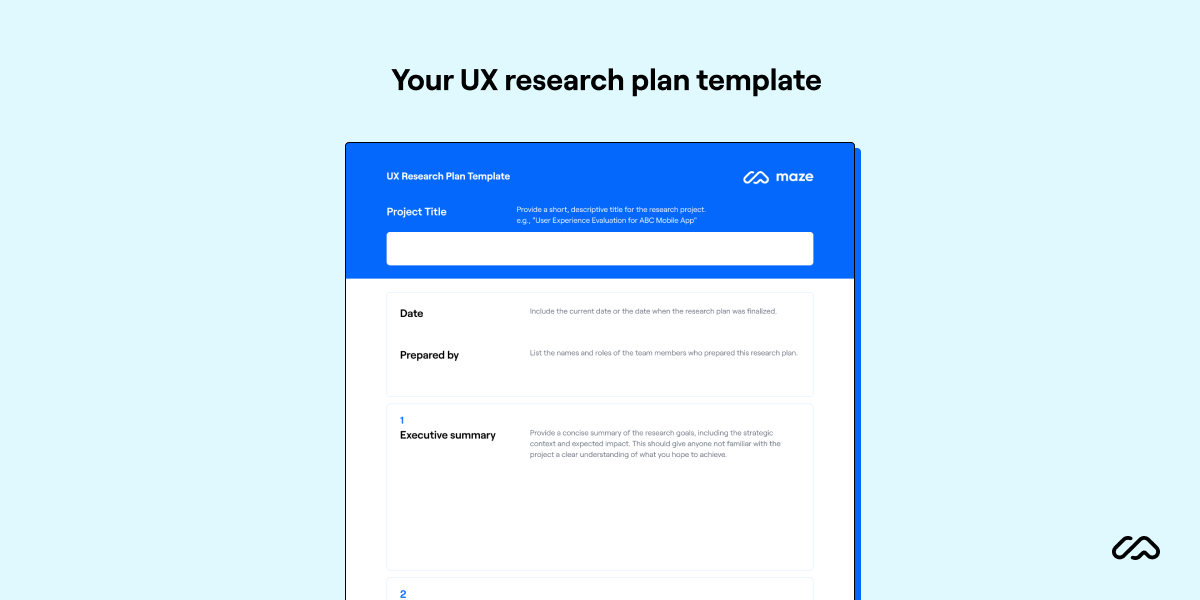
Example: Improving user adoption of a project management tool called Flows
Now, let’s go through how to fill out this template and create a UX research plan with an example.
Executive summary:
Flows aims to increase user adoption and tool engagement by 30% within the next 12 months. Our B2B project management software has been on the market for 3 years and has 25,000 active users across various industries.
By researching the current product experience with existing users, we’ll learn what works and what doesn’t in order to make adjustments to the product and experience.
Research objectives:
| Objective | Description |
|---|---|
| Objective 1 | Identify pain points and areas of friction in the current user experience that stop adoption and engagement |
| Objective 2 | Understand how team members currently use the tool to manage projects and collaborate |
| Objective 3 | Explore desired features, integrations, and capabilities to enhance productivity and team effectiveness |
Purpose of the plan and studies:
The purpose is to gather actionable insights into user needs, behaviors, and challenges to inform updates that will drive increased adoption and engagement of 30% for the B2B project management tool within 12 months.
Target audience, sample size, scope, and demographics:
| Characteristic | Details |
|---|---|
| Target audience | Current customers (teams) using the project management tool |
| Sample size | 20 teams across different client accounts |
| Scope | Full user experience from onboarding to daily use across all tool features |
| Demographics | Teams of 5-15 members from industries like software, marketing, construction, and consulting |
Expectations, deliverables, timings, and type of results:
| Deliverable | Description | Deadline |
|---|---|---|
| Deliverable 1 | User journey maps highlighting friction points | 3 weeks after research study completion |
| Deliverable 2 | Competitive analysis report | 4 weeks |
| Deliverable 3 | Prioritized feature roadmap | 5 weeks |
| Deliverable 4 | Final report with key findings and recommendations | 6 weeks |
Research methodologies:
| Method | Reason |
|---|---|
| Behavioural analytics | Review product stats to uncover friction points that can inform following research |
| Contextual inquiries (8 teams*): | Observe teams using the tool in their workspace |
| User interviews (12 teams*) | 60-min semi-structured interviews |
| Usability testing (5 teams*) | Unmoderated remote usability tests |
*Some teams will take part in more than one research session.
Research analysis methods:
We are doing a mixed methods study.
User interviews are our primary method for gathering qualitative data, and will be analyzed using thematic analysis .
- Quantitative data will be pulled from usability tests to evaluate the effectiveness of our current design.
- Research set up and guidelines:
- Create baselines surveys to gauge current usage and pain points
- Develop interview/discussion guides and usability testing scenarios
- Pilot test materials with two teams
- User interviews: 60 mins, semi-structured; usability tests: 90 mins
- Findings will be presented in a research report for all stakeholders
Research scripts, questions, and samples:
User interview questions:
- What’s your experience with Flows?
- How does Flows fit into your workflow?
- What is your understanding of Flows’ features?
- What do you wish Flows could do that it currently doesn’t?
Usability test sample with Maze:
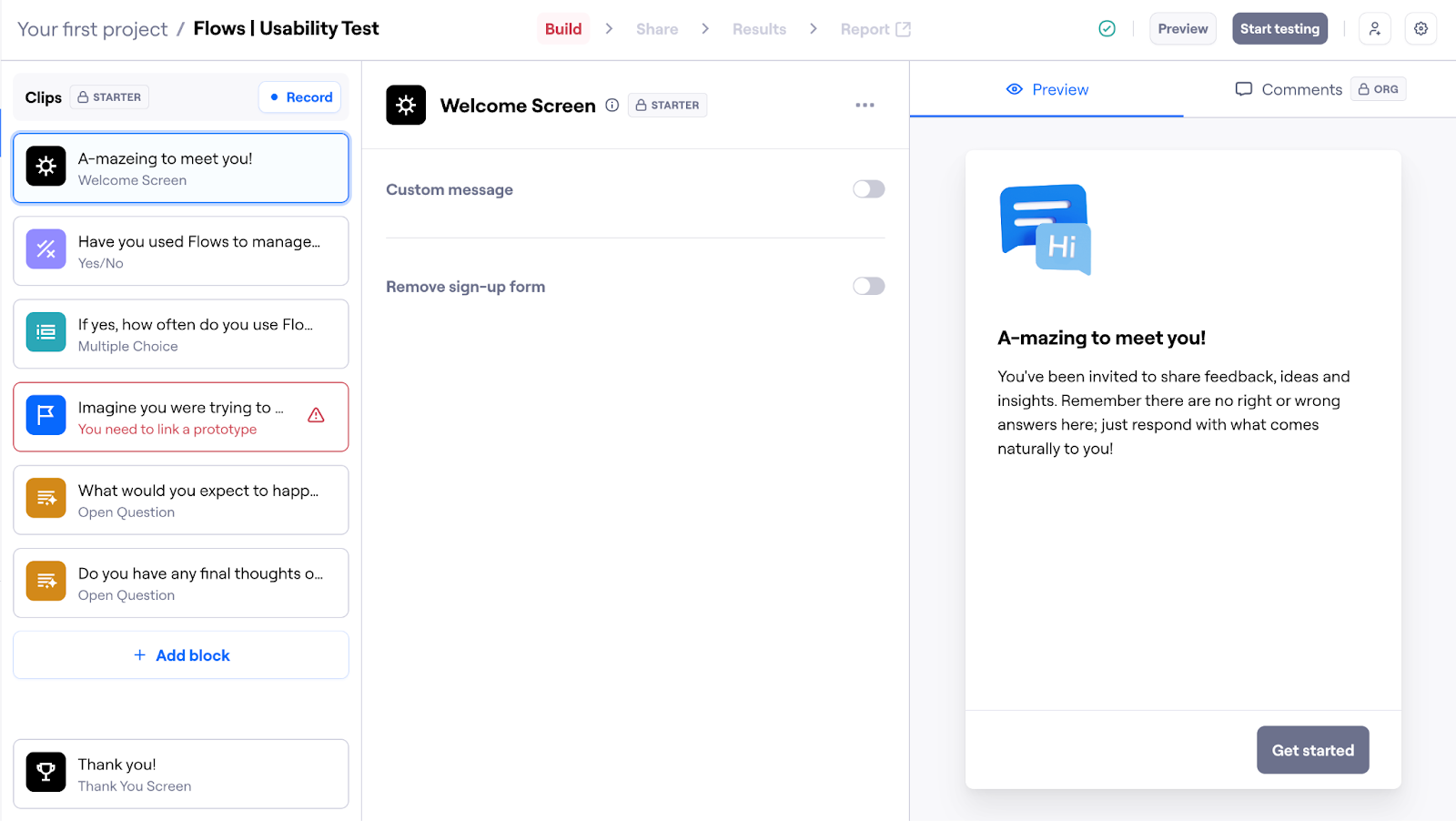
Cost estimations or budget requests/pricing:
Total estimated budget: $8,000
| Item | Estimated costs | Notes |
|---|---|---|
| Participant incentives | $4,000 | |
| Remote usability testing platform | $1,000 | |
| Research tools & software | $3,000 |
More free customizable templates for UX research
Whether you’re creating the plan yourself or are delegating this responsibility to your team, here are six research templates to get started:
- UX research plan template : This editable Miro research project plan example helps you brainstorm user and business-facing problems, objectives, and questions
- UX research brief : You need a clear brief before you conduct UX research—Milanote shares a template that will help you simplify the writing process
- User testing synthesis : Trello put together a sample board to organize user testing notes—you can use this as a guide, but change the titles to fit your UX research purposes
- Usability testing templates : At Maze, we’ve created multiple templates for conducting specific UX research methods—this list will help you create different remote usability tests
- Information architecture (IA) tests template : The way you organize the information in your website or app can improve or damage the user experience—use this template to run IA tests easily
- Feedback survey templates : Ask users anything through a survey, and use these templates to get creative and simplify creation
Everything you need to know about UX research plans
We all know that a robust plan is essential for conducting successful UX research. But, in case you want a quick refresher on what we’ve covered:
- Using a UX research strategy as a starting point will make your plan more likely to succeed
- Determine your research objectives before anything else
- Use a mix of qualitative and quantitative research methods
- Come up with clear personas so you can recruit and test a group of individuals that’s representative of your real end users
- Involve stakeholders from the beginning to get buy-in
- Be vocal about timelines, budget, and expected research findings
- Use the insights to power your product decisions and wow your users; building the solution they genuinely want and need
UX research can happen at any stage of the development lifecycle. When you build products with and for users, you need to include them continuously at various stages of the process.
It’s helpful to explore the need for continuous discovery in your UX research plan and look for a tool like Maze that simplifies the process for you. We’ll cover more about the different research methods and UX research tools in the upcoming chapters—ready to go?
Elevate your UX research workflow
Discover how Maze can streamline and operationalize your research plans to drive real product innovation while saving on costs.
Frequently asked questions
What’s the difference between a UX research plan and a UX research strategy?
The difference between a UX research plan and a UX research strategy is that they cover different levels of scope and detail. A UX research plan is a document that guides individual user experience (UX) research projects. UX research plans are shared documents that everyone on the product team can and should be familiar with. A UX research strategy, on the other hand, outlines the high-level goals, expectations, and demographics of the organization’s approach to research.
What should you include in a user research plan?
Here’s what to include in a user research plan:
- Problem statement
- Research objectives
- Research methods
- Participants' demographics
- Recruitment plan
- User research brief
- Expected timeline
- How to present findings
How do you write a research plan for UX design?
Creating a research plan for user experience (UX) requires a clear problem statement and objectives, choosing the right research method, recruiting participants and briefing them, and establishing a timeline for your project. You'll also need to plan how you'll analyze and present your findings.
How do you plan a UX research roadmap?
To plan a UX research roadmap, start by identifying key business goals and user needs. Align research activities with product milestones to ensure timely insights. Prioritize research methods—like surveys, interviews, and usability tests—based on the project phase and objectives. Set clear timelines and allocate resources accordingly. Regularly update stakeholders on progress and integrate feedback to refine the roadmap continuously.
Generative Research: Definition, Methods, and Examples
Investing in UX research

If you’re a UX practitioner, you clearly understand the value of what you do, the influence it possesses, and the limitless potential of your work in building better products. After all, it’s been found that every dollar organizations invest in UX results in a high ROI. And while your stakeholders and executives may acknowledge the importance of a great customer and user experience, they may not be fully convinced to prioritize UX research as much as you’d like, especially when they don’t sit as close to your work as you do. This scenario is especially challenging if you're fighting for more headcount and larger budgets to enhance your performance and improve outcomes.
If you’re in an organization that doesn’t fully understand or value UX research, your ability to influence and work cross-functionally can be limited. It also makes your team vulnerable in an unsteady market that’s encouraging you to do more with less. So how do you shift this perception in your favor? Here’s everything you need to know about getting executive buy-in and proving the value of UX.
Why you need executive buy-in
Good-natured conflict is a sign of a healthy team and can indicate an organization that’s diverse in backgrounds and opinions—which is a great thing! Differing opinions are also crucial for building high-quality products. But when conflicts or debates go on for too long, it can result in wasted time, energy, budget, and a failed product. Perhaps worst of all, it can result in one individual or team taking complete control over the product and making decisions that aren’t in the best interest of the customer or the organization.
By getting stakeholders on your side, you’ll be:
- Feeling a greater sense of confidence in your work and ideas
- Fostering better collaboration for your current project and beyond
- Paving the road for greater investment in research, which can be in the form of a larger team or budget
- Encouraging a two-way foundation of trust
6 ways to think like a partner that stakeholders want to collaborate with
If you want people to value what you're doing, you need to be able to tie it to the issues that they care about most. This step may sound like a huge task, but it's relatively straightforward. Start by finding out what the business drivers are and what issues your executives care about. Think about:
- What are their big goals for the year?
- Where do our goals or projects align?
- What are the barriers to success?
- Am I directly affecting the initiatives they care about? If not, how can I help?
Here are the next steps:
1. Prioritize business implications over findings
The UX research report is key in communicating the value of your work. When reporting your findings, relate them to key business decisions. Don't just report data; report business implications. Sam Shi, Research Manager at Equinox , gives her take, “Your job is to identify better business decisions and advantageous opportunity areas based on research. If this was your business and your money, what would you need to know to be convinced?”
Your presentation and reports should include the following:
- Findings: The most relevant pieces of customer information you've gathered—just the facts, laid out cleanly
- Insights: Your interpretations of what those facts mean, i.e., here are the conclusions to draw
- Implications: The actions the company should take based on how insights align with the organization's big initiatives
Gathering implications can be uncomfortable for most people who do any research. You might view your role as gathering data and maybe judiciously talking about insights—but getting into what the organization should do about it isn’t your realm. Or, you may assume that the implications are intuitively obvious and therefore don’t need to be mentioned.
However, not everyone may make those obvious intuitive connections. Your teammates have lengthy to-do lists and likely have spent less time than you marinating in the data. To be a valued business partner, step up and help them connect those dots.
Shi continues, “It’s not enough to identify pain points and make recommendations for how to solve a user need. You must also guide ideation and help prioritize user needs relative to business goals. The solution then also needs to be technically feasible.”
2. Get in the loop early on
You should prioritize your research questions to align with your organization's strategic goals. Tying your work to the organization's overall direction is the key to driving not only value but the perception of value. Getting into the loop early and armed with new ideas and initiatives can help guide the direction. This can mean partnering with whichever part of the organization that's doing strategic planning. Maybe there's a strategy group, or perhaps it's the product managers or the marketing team.
Share information with the right teams at the right time, ideally as early as possible. During the formative stage of planning, it's much easier to influence at this time. You can also ensure that the business is going in the right direction from the start rather than struggling to make corrections later.
And since the early research stages may involve some negotiation and fine-tuning, remember not to take negative research feedback too personally. It’s easy to get attached to your work as you’ve invested a lot of time and effort into the ideas and workflow, and a disagreeing stakeholder can slow down the process or get in the way of the outcome you want.
Kate Thacker, Principal Product Designer at USA TODAY , recommends, “Remember to take a deep breath and not to take negative responses to unexpected feedback personally. In a corporate environment, everyone has deadlines, KPIs, and goals they’re trying to meet. Sometimes we feel like we’re under the most pressure because our work is highly visible, but other people feel that pressure too! Start by pushing for the smallest change that feedback indicates will lead to the biggest impact and build from there.”
3. Consider the entire marketplace
It's also helpful to mix competitive information into your insights. Remember, your organization doesn't want to understand customers just for the sake of understanding customers. Your brand wants to understand customers to predict how the marketplace will change and, therefore, how to get ahead of their shifting expectations.
Competitors are an important puzzle piece of how the marketplace is evolving. If you can bring that competitive perspective into your analysis, for example, by running some tests on competitive products or customers, it'll make the findings of your research a lot richer. If you can help your organization see how customer and competitive trends are combining to evolve the market and what to do about it, you’ll become even more valuable. For targeted help, consider the UserTesting competitor evaluation template . With sample questions you can borrow or customize, you’ll learn who your competitors are and how to test experiences other than your own.
4. Marry quantitative and qualitative data
Qualitative testing is paramount, but combining it with quantitative data, especially analytics and surveys, is even better. If the quantitative data is not being produced within your team, find the people doing it and find ways to pair up with them. This collaboration may look like taking the reports they've made and then ensuring that your findings align (or suggesting improvements if they don't). You can do the same thing with third-party quantitative reports as well.
You don't have to choose between quantitative and qualitative data . Instead, they should sync harmoniously. By combining the two types of data, you'll merge numbers and emotions, therefore telling a more complete story.
5. The most important information should come first
When presenting your work to executives , you want them to get the maximum value with the minimum amount of reading. Don’t start your slide deck with your methodology; what your audience cares about most is the business implications. Follow that up with insights, and then you can delve into the methodology and all of the supporting evidence. That way, you’ll have positioned yourself as someone who knows what’s important to the business. Jerica Copeny, Senior UX Design Researcher at Microsoft , offers her two cents, “First, understand the stakeholders’ goals to have context with balancing feedback you discover in the research and feedback that relates to what stakeholders want to learn.”
Finally, think of the extra details, like being deliberate with how you format your findings. Copeny says, “One thing that's underestimated is the importance of understanding how your stakeholders prefer to receive information. Knowing, for example, that they like short, poignant decks will help inform how you present your feedback.”
6. Don’t just tell, show
When you’re presenting research, it can be convenient to show written quotes from the participants over videos. Editing clips can be time-consuming, and in a digital space where things needed to be done yesterday, you evidently want to move fast. However, as humans, we tend to respond emotionally to other human beings, and videos speak directly to that instinctive response. Thacker sheds light on her process when interacting with stakeholders, “Include direct quotes and videos of users giving feedback because it’s more powerful when it’s not coming from you directly. Be clear about what you know and what you don’t know. If an insight is directional rather than conclusive, say so.”
With the UserTesting platform , you can take videos a step further by leveraging highlight reels. These are known as a curated selection of video clips from your usability test that can be rearranged to your liking and grouped together—from positive to negative responses. Prioritize creating great video clips, share them around your organization, and use them shamelessly to get people to pay attention to user feedback. This step helps drive decisions and communicates the value that you (and your team) provide.
Thacker also offers an important reminder before you get too tempted to share with a larger group immediately, “Discuss your findings with a teammate to ensure they’re clear to someone who doesn’t have the context you have. Consider what additional testing is needed and your next steps before you share feedback more widely.”
It's more than proving ROI; it's about proving the strategic value of UX research
When it comes to budget talk, most executives love to see hard numbers on return on investment. That makes a budget decision a no-brainer for them. There are cases where you can prove the ROI of a UX change—like when you've done a project driving a shopping cart change that created $10 million in new revenue. While we may wish we could have a success story like this every time, these cases are rare.
Sometimes, the most straightforward ROI you can measure is saving research costs (for example, swapping out in-person interviews for remote studies). While this works, it could understate your value. And it won't help you defend your team when the organization is tight on budget.
In most organizations, the most significant benefit of a UX team is that you're providing an ongoing flow of insights that make the company more self-aware and user-friendly in limitless ways. Putting a numerical value on having a more intuitive organization is almost impossible. Therefore, document the financials when you can, but avoid focusing only on ROI.
For most successful outcomes, you’ll need stakeholders on your side. Make it easier for them by prioritizing business impact, keeping a competitive lens, and merging multiple data types. By doing all of the above, you'll reiterate your value to executives and lay the foundation for more seamless projects and collaborations down the line.
For more on achieving executive commitment, watch our free, on-demand webinar .

Want to learn more?
Explore UX best practices, expert advice, user research templates, and more.
In this Article
Get started now
Related Blog Posts

What is customer journey mapping?
Customer journey mapping serves as a critical exercise for teams dedicated to improving...

Vodafone UK cuts time-to-insight by 17% with streamlined research ops
By offloading day-to-day tasks to the UserZoom platform, Vodafone UK’s research operations have dramatically...

Usability testing tools
Identifying exactly what you need from a usability testing tool can be a...
Human understanding. Human experiences.
Get the latest news on events, research, and product launches
Oh no! We're unable to display this form.
Please check that you’re not running an adblocker and if you are please whitelist usertesting.com.
If you’re still having problems please drop us an email .
By submitting the form, I agree to the Privacy Policy and Terms of Use .

IMAGES
VIDEO
COMMENTS
UX (user experience) research is the systematic study of target users and their requirements, to add realistic contexts and insights to design processes. UX researchers adopt various methods to uncover problems and design opportunities. Doing so, they reveal valuable information which can be fed into the design process.
A UX research method is a way of generating insights about your users, their behavior, motivations, and needs. These methods help: Learn about user behavior and attitudes. Identify key pain points and challenges in the user interface. Develop user personas to identify user needs and drive solutions.
User research is the parent of UX research; it's a broader research effort that aims to understand the demographics, behaviors, and sentiments of your users and personas. UX research, on the other hand, is a type of user research that's specific to your product or platform. Where user research focuses on the user as a whole, UX research ...
User research, or UX research, is an absolutely vital part of the user experience design process. Typically done at the start of a project, it encompasses different types of research methodologies to gather valuable data and feedback. When conducting user research, you'll engage with and observe your target users, getting to know their needs ...
UX Research Cheat Sheet. Susan Farrell. February 12, 2017. Summary: User research can be done at any point in the design cycle. This list of methods and activities can help you decide which to use when. User-experience research methods are great at producing data and insights, while ongoing activities help get the right things done.
What is UX Research? UX research encompasses a variety of investigative methods used to add context and insight to the design process. Unlike other sub-fields of UX, research did not develop out of some other field or fields. It merely translated from other forms of research. In other words, UX practitioners have borrowed many techniques from ...
UX research includes two main types: quantitative (statistical data) and qualitative (insights that can be observed but not computed), done through observation techniques, task analysis, and other feedback methodologies. The UX research methods used depend on the type of site, system, or app being developed.
What is UX research? Research is a disciplined, methodical investigation into a topic. Let's see how Jane Suri, Executive Design Director @ Ideo defines design research."Design research both inspires imagination and informs intuition through a variety of methods with related intents: to expose patterns underlying the rich reality of people's behaviors and experiences, to explore reactions ...
3: Methods: Choose the right research method. UX research is about exploration, and you want to make sure that your method fits the needs of what you're trying to explore. There are many different methods. In a later chapter we'll go over the most common UX research methods.
User experience research is a systematic approach to helping companies understand a user's perspective. It's about diving deep into how people interact with a product and observing how easily they can complete their tasks and meet their goals. Through UX research, you can discover behaviors, needs, and motivations via observation, task ...
3. User research — an essential part of the design process that shouldn't be overlooked by UX designers. Here's a guide for UX designers or those who simply want to understand user research better. To understand how user research is done in a real context, check out the conversation I had with Mo on how he does research as a Product Designer.
When done right, UX research is a powerful tool that helps you get to know your users and give them the product experience they desire. Take a look at these six UX research best practices to conduct effective research and make decisions that'll have the greatest impact on all your users. 1. Identify your users and their goals.
How to Conduct UX Research with Usability Testing. Usability testing can be broken down into a few major steps: Identify what needs to be tested and why (e.g. a new product, feature, etc.) Identify the target audience (or your desired customers). Create a list of tasks for the participants to work through.
A Beginner's Guide to Qualitative UX Research. The ability to empathize with the user is at the heart of UX design. One of the most effective ways to understand what your user is experiencing is by conducting UX research. Qualitative user research is particularly useful for getting into the mind of your users and obtaining anecdotal evidence ...
Market insight is essential to UX research because it provides valuable information on competitive intelligence, explores new trends before the competition, and helps to stay ahead of competitors. Personas. Personas are another type of UX research used when working on a new product or improving upon a current one.
However, here's a broad list of steps to bear in mind when you conduct UX research: 1. Set research goals: Determine what you want to achieve and the types of questions you need answering, then identify your research objectives—e.g. evaluate how easy the sign-up process is. 2.
Understand the basics of UX research, like planning research studies, conducting interviews and usability studies, and synthesizing research results. ... User experience (UX) designers focus on the interaction that users have with products, like websites, apps, and physical objects. They make those everyday interactions useful, enjoyable, and ...
Research is the first and most important step to optimising user experience. UX researchers do this through interviews, surveys, focus groups, data analysis and reports. Reports are how UX researchers present their work to other stakeholders in a company, such as designers, developers and executives. In this guide, we'll cover what you should ...
User experience (UX) research is the study of learning what end users of a system or product need and want, then employing those insights to enhance the design process for products, services or software. UX research can take different forms depending on the area of focus. For example, for product teams, UX research could mean validating ...
Career advancement: Completing a UX research course expands career opportunities, boosts earning potential, and enables transition or advancement in user experience design. 3. Meet the educational requirements. While there's no strict educational requirement for becoming a UX researcher, having a relevant educational background can be beneficial.
DESIGN X475.3. Get an introduction to the fundamentals of UX research. You gain an understanding of the logistics and theory of conducting user research and how to impact user experience design and product development. You also learn best practices for determining when to use particular methodologies, either qualitative or quantitative research ...
Discover essential UX research tools designed to gather qualitative feedback, enhancing user experience through informed design decisions.
A UX expert from Baymard will perform a full analysis of your site, based on our 130,000+ hours of UX research. The 120-page audit report will outline 40 improvements for your site, document its UX performance across 500 parameters, and compare it to industry leaders and competitors.
Find a fellow UX researcher, designer, product manager, or engineer who is interested in doing a research project together! Doing independent research is fine, but demonstrating your ability to collaborate cross-functionally is a skill that hiring managers value. 2. UX researcher portfolio from a UXR at Microsoft.
There's more to achieving good UX than research and design. We need to effectively communicate our ideas to gain buy-in from key stakeholders. Victor covers how UX practitioners can harness the power of persuasion and other tactics from the field of communication when presenting research findings and design concepts to key stakeholders.
A UX research plan is a document that guides individual user experience (UX) research projects. UX research plans are shared documents that everyone on the product team can and should be familiar with. A UX research strategy, on the other hand, outlines the high-level goals, expectations, and demographics of the organization's approach to ...
UX research stands as a cornerstone in the realm of B2B product development, playing a crucial role in shaping user-centric strategies and solutions. The insights derived from comprehensive UX research can illuminate the path to enhanced user satisfaction, increased ROI, and a competitive edge in the market. ...
The UX research report is key in communicating the value of your work. When reporting your findings, relate them to key business decisions. Don't just report data; report business implications. Sam Shi, Research Manager at Equinox, gives her take, "Your job is to identify better business decisions and advantageous opportunity areas based on ...
With B2B buyers and users increasingly looking for B2C-level experiences, a good user experience is more essential than ever. In this month's Time to Value, Gartner analyst Will Grant discusses critical findings from the Gartner UX survey that product managers must be aware of and respond to. Included in Full Research